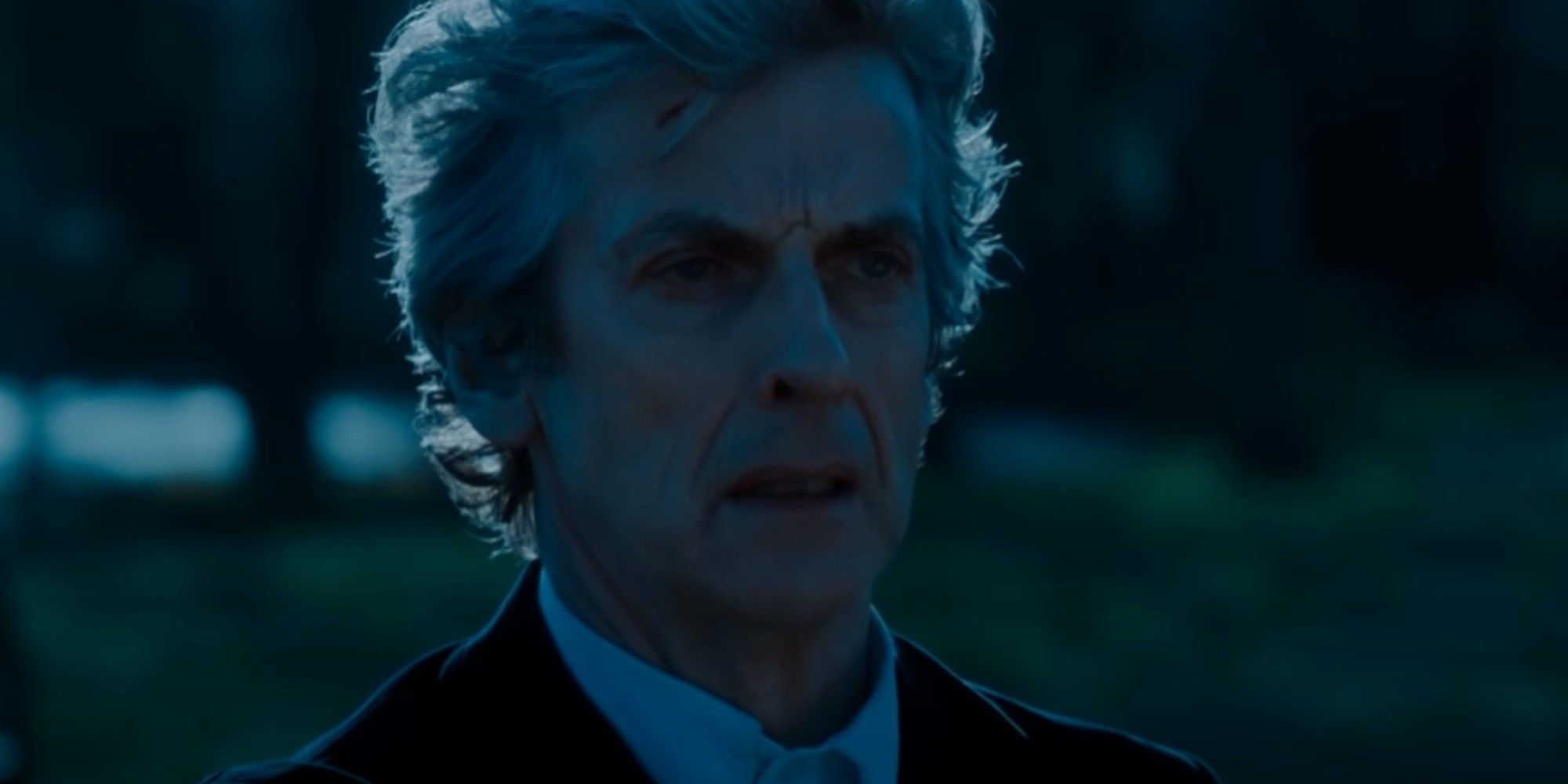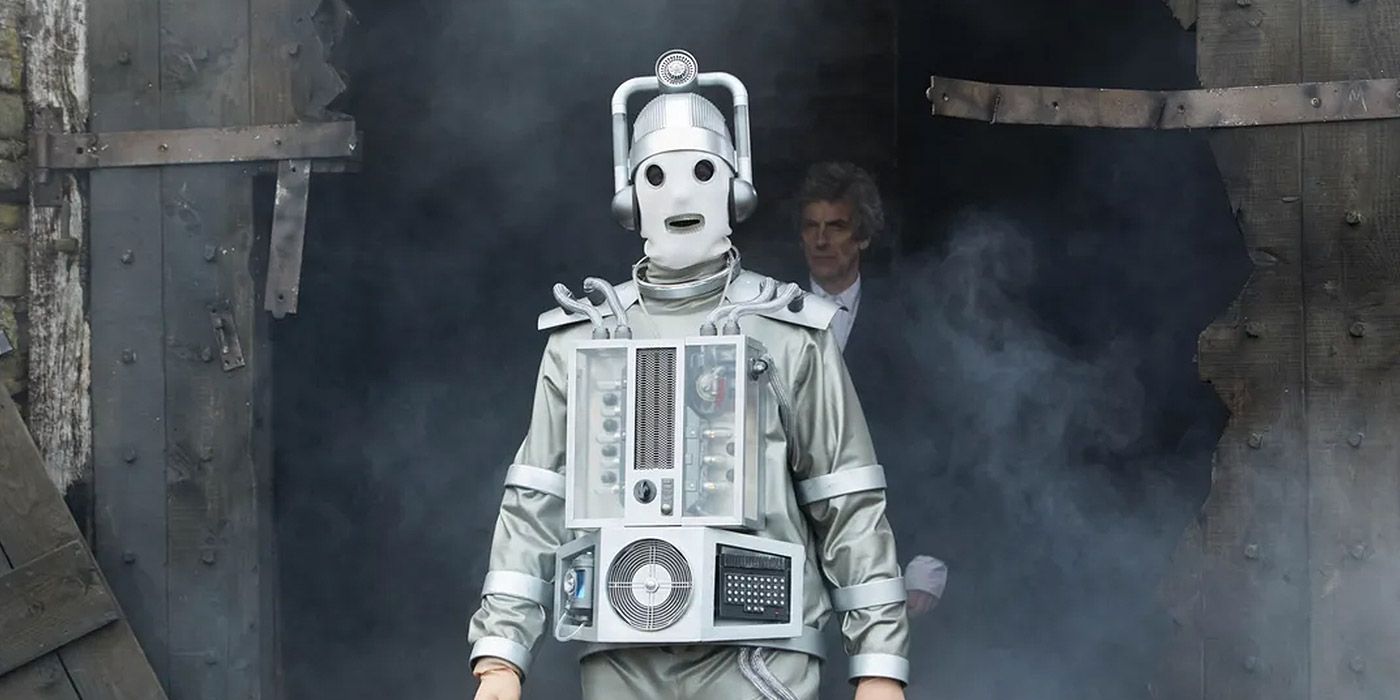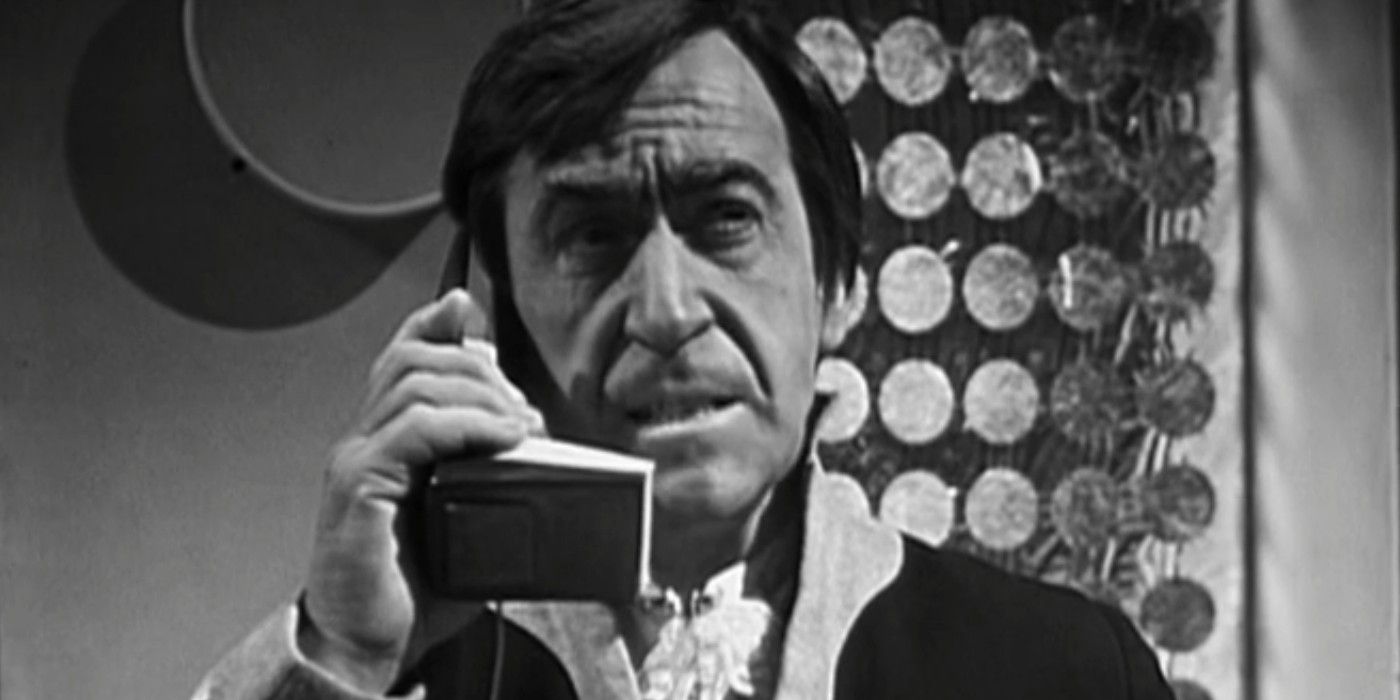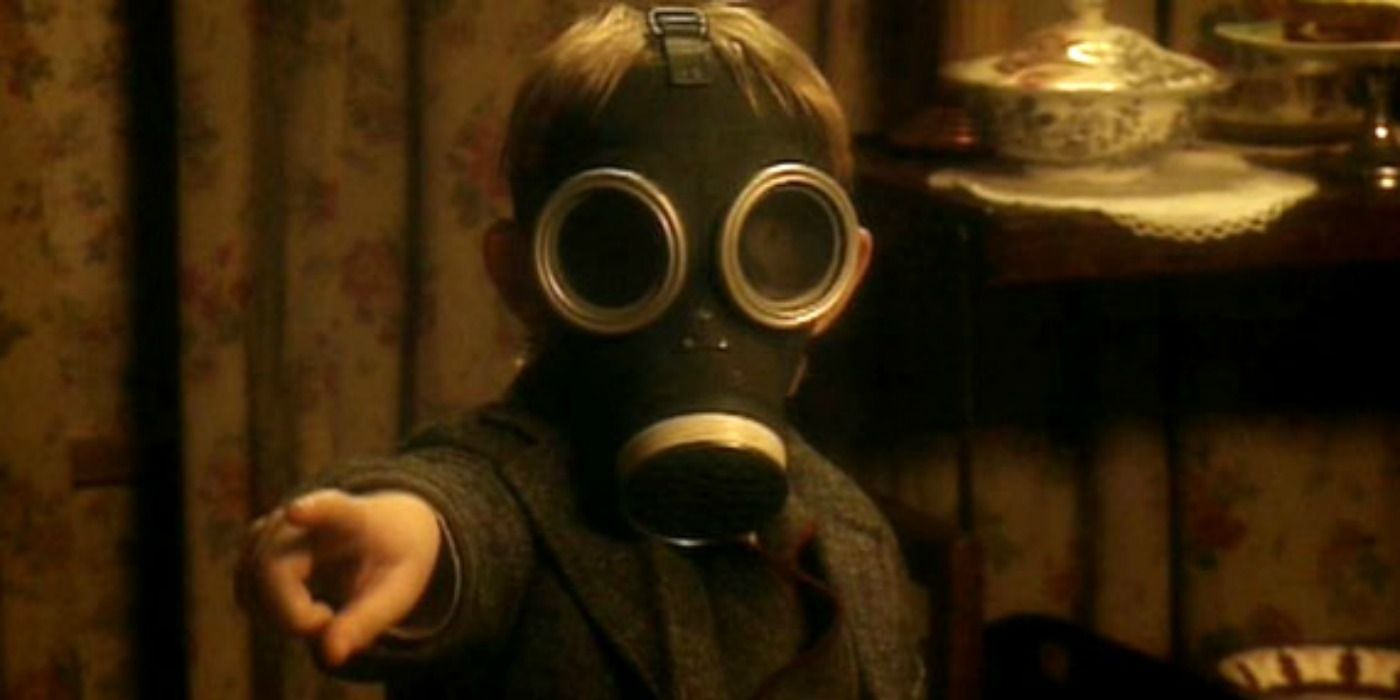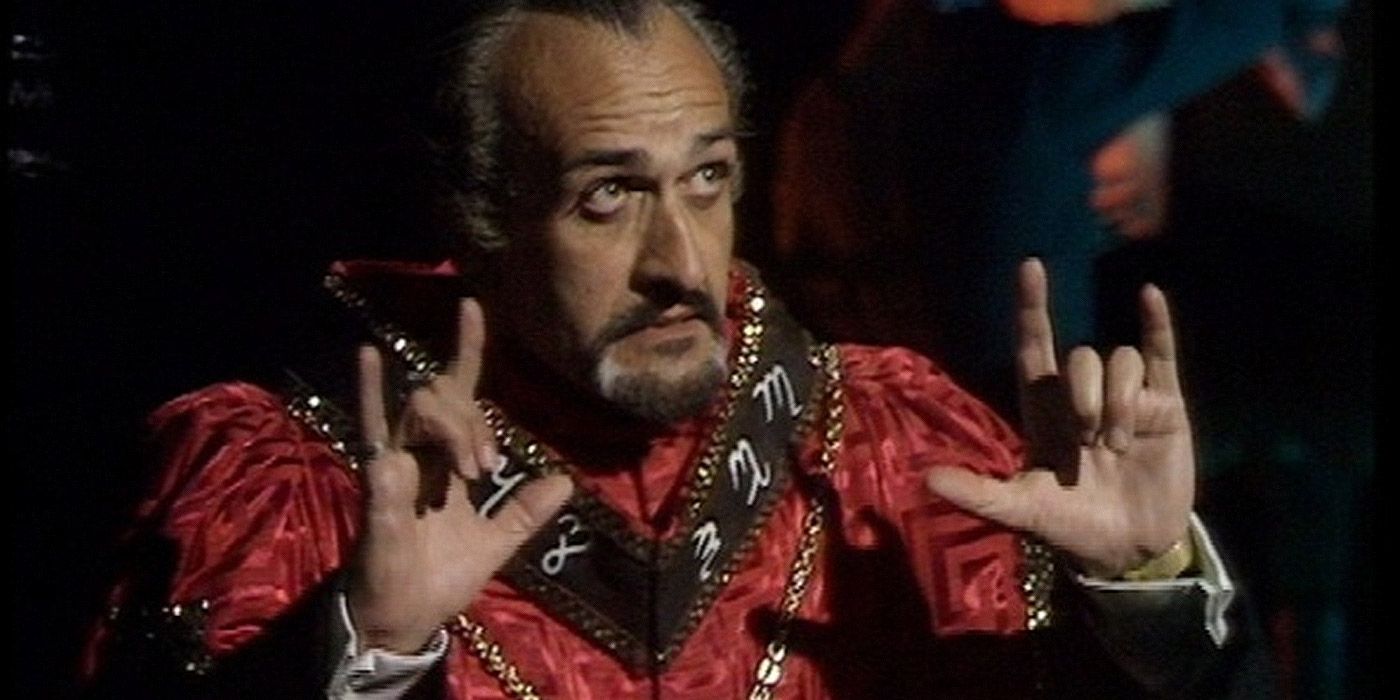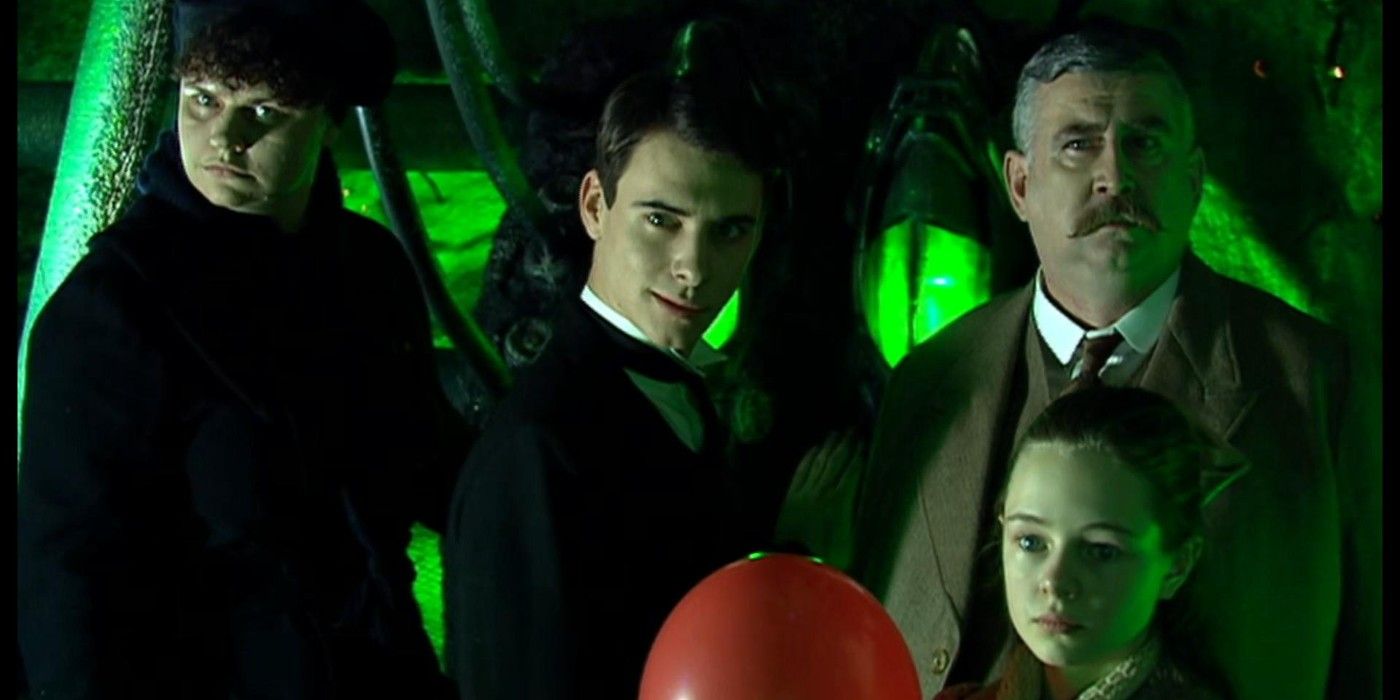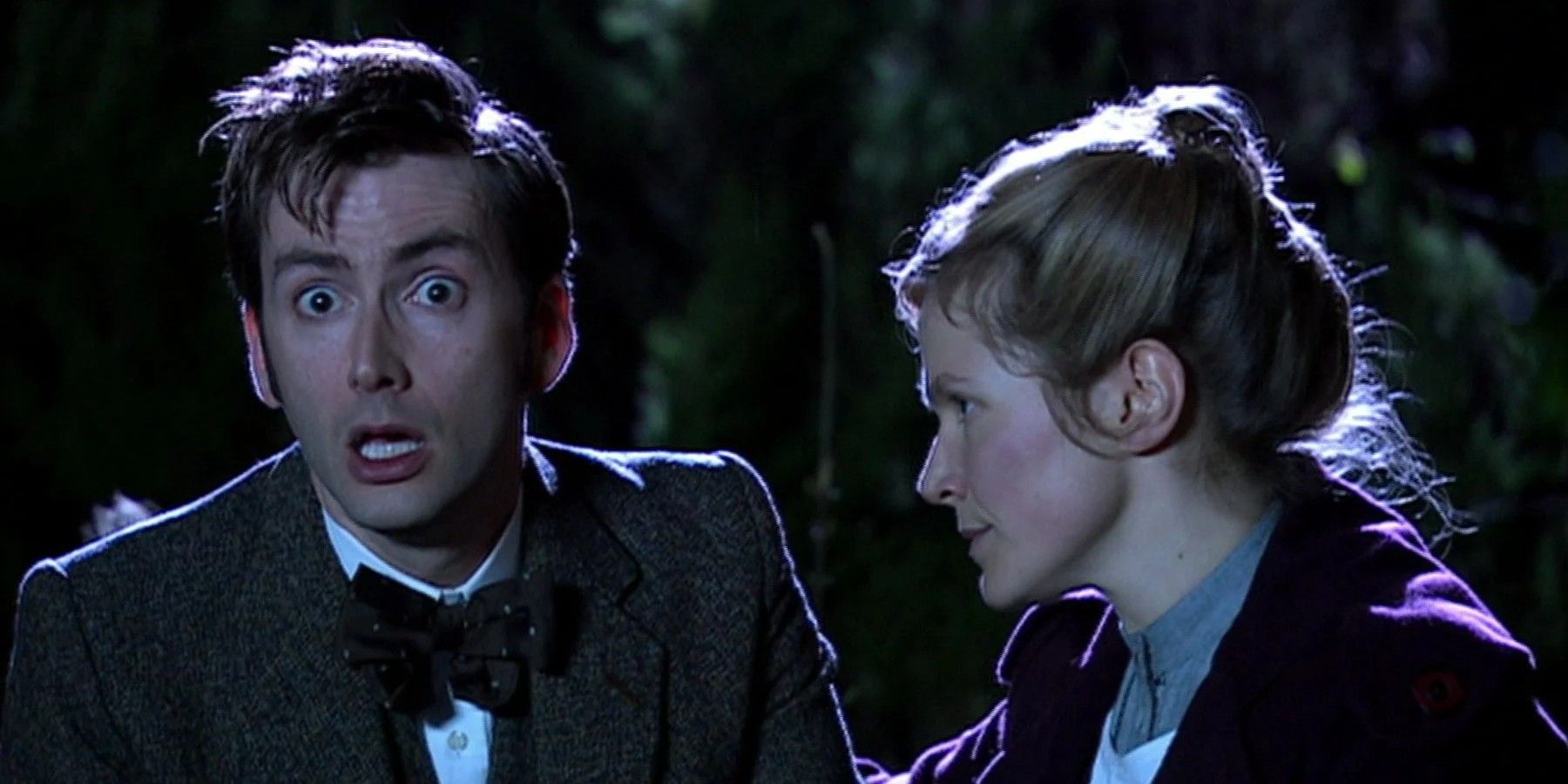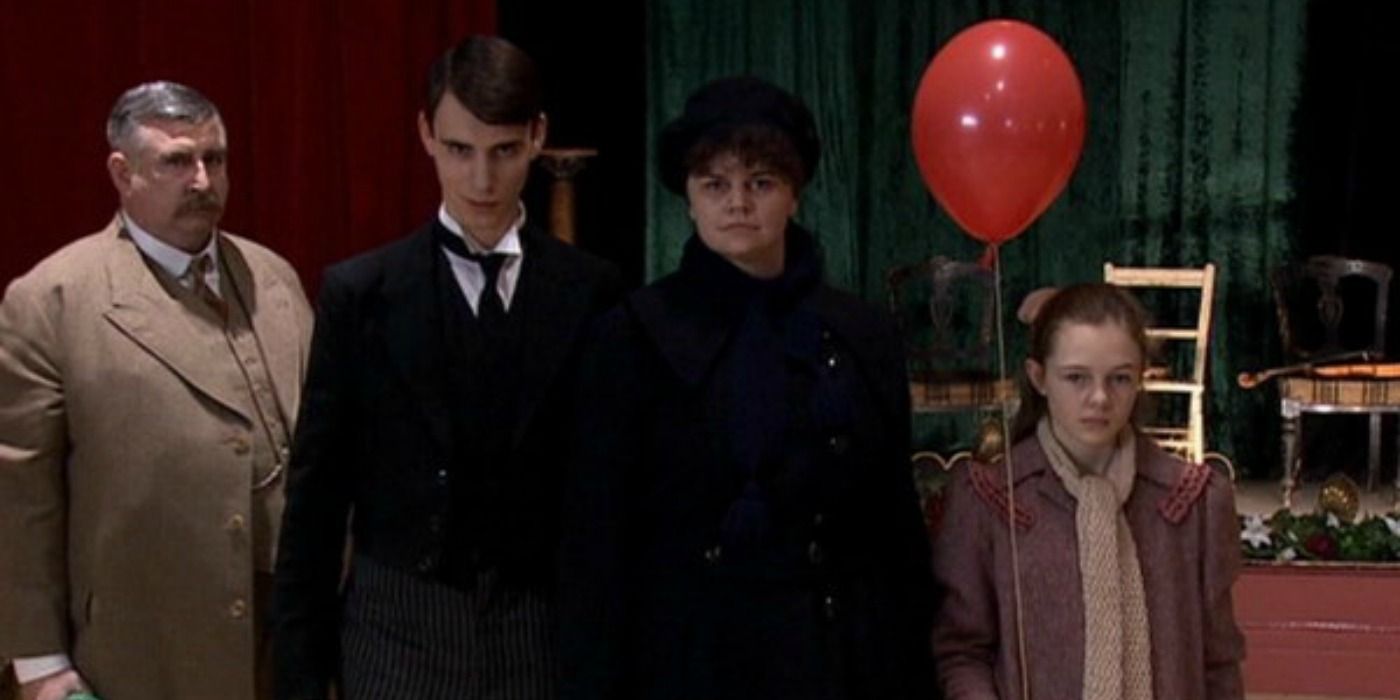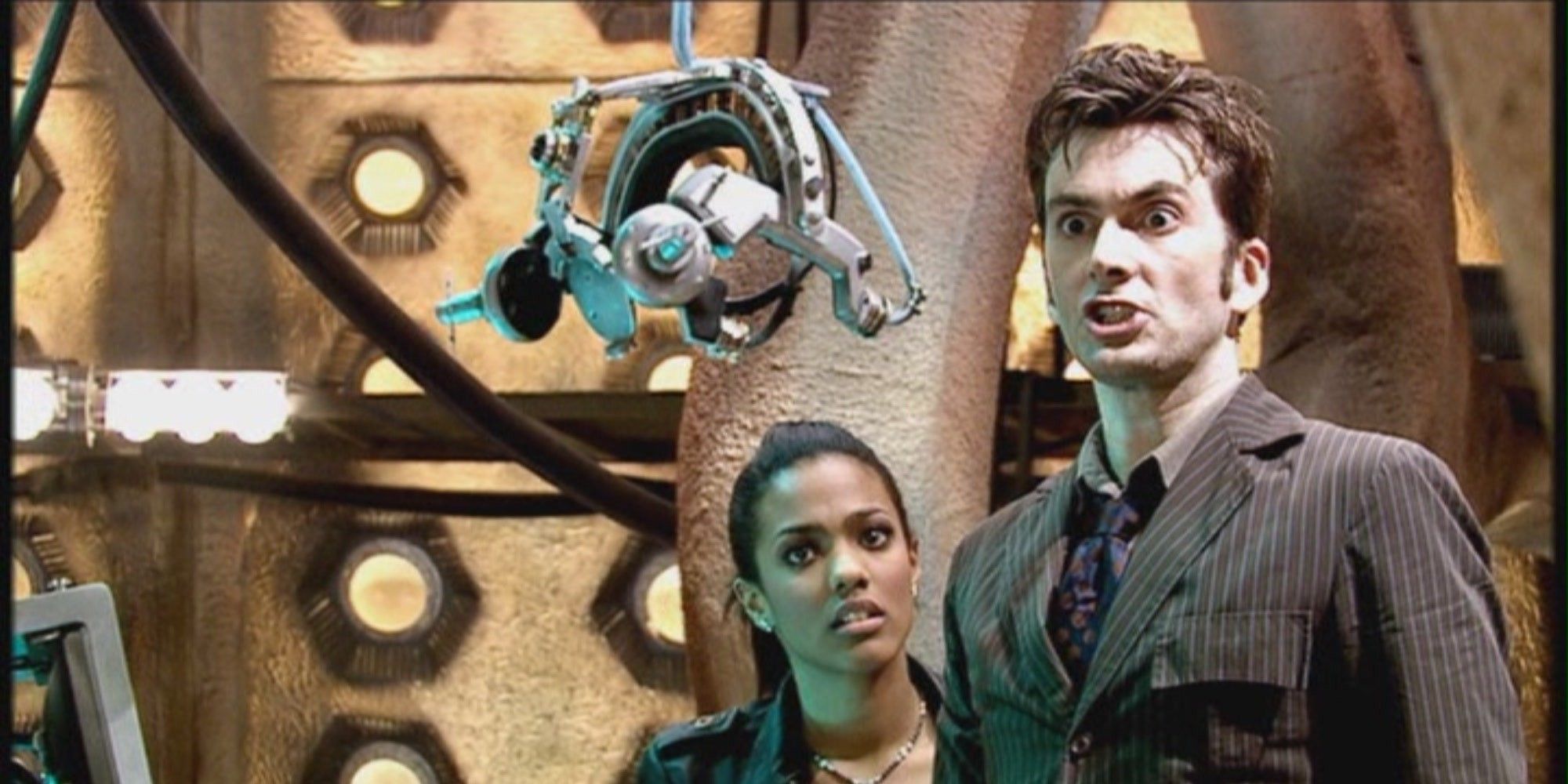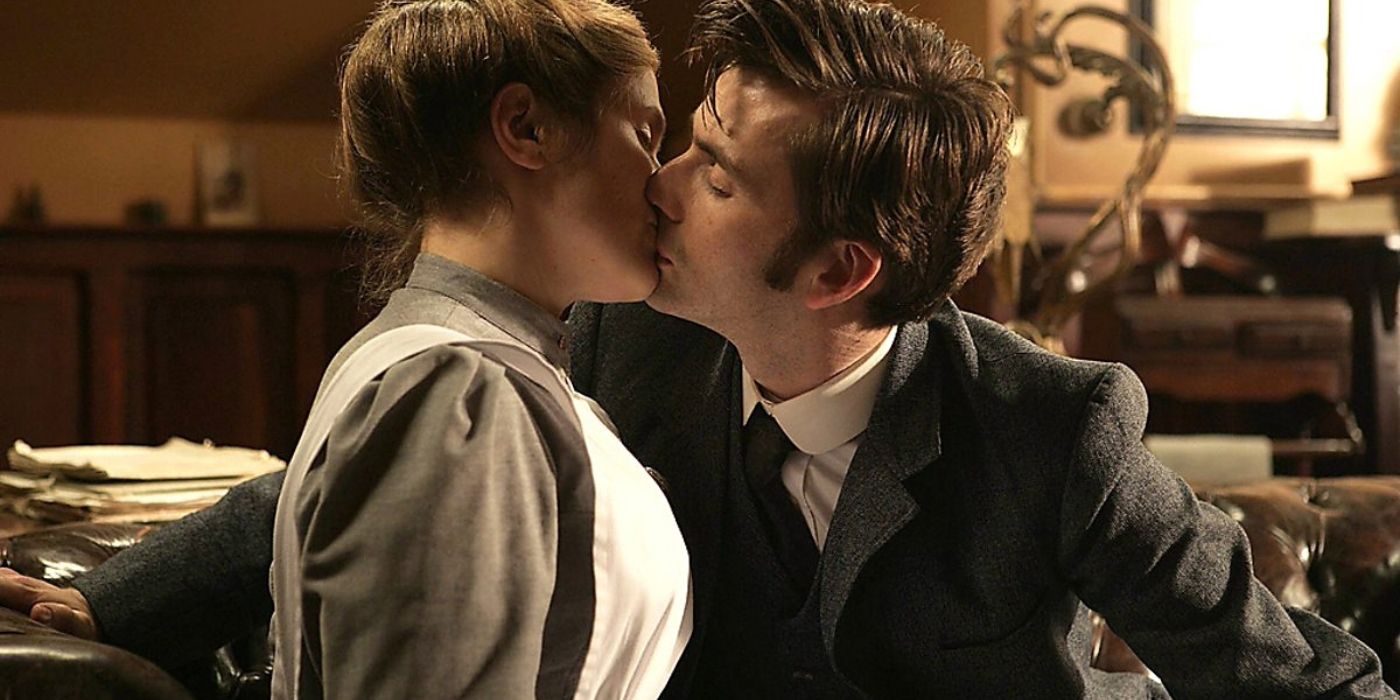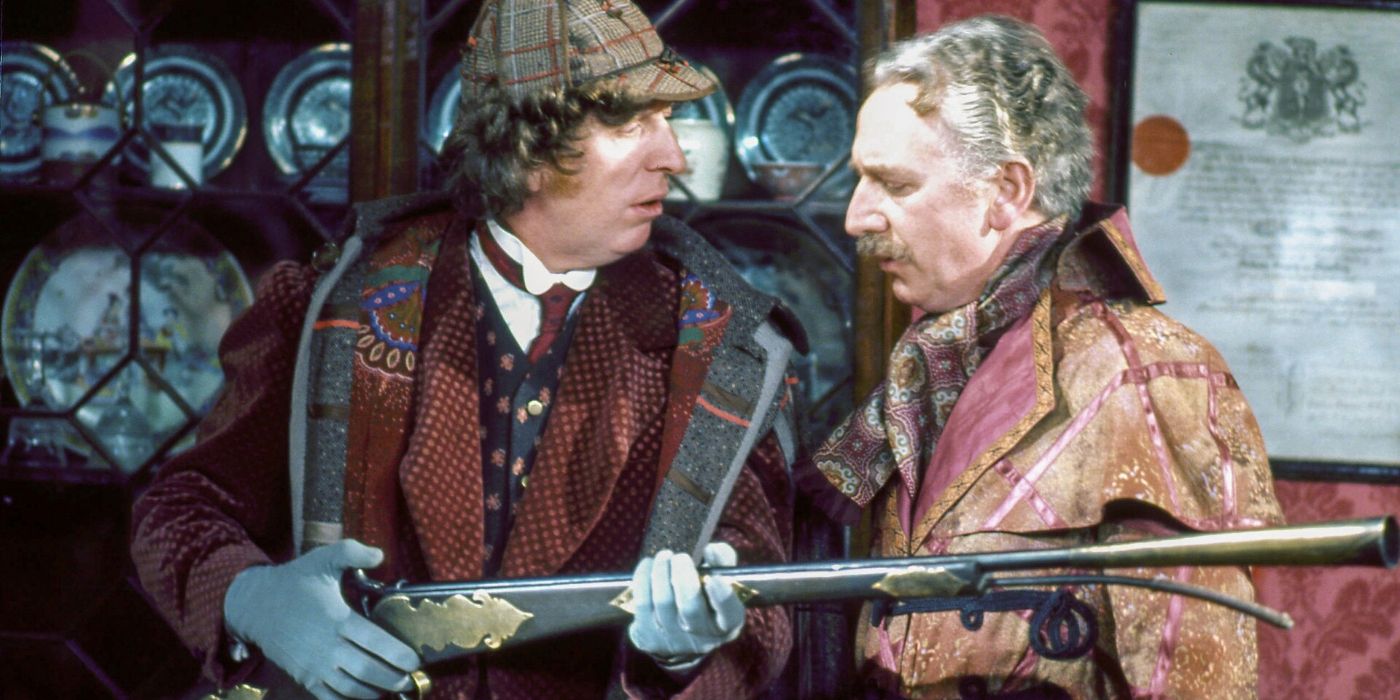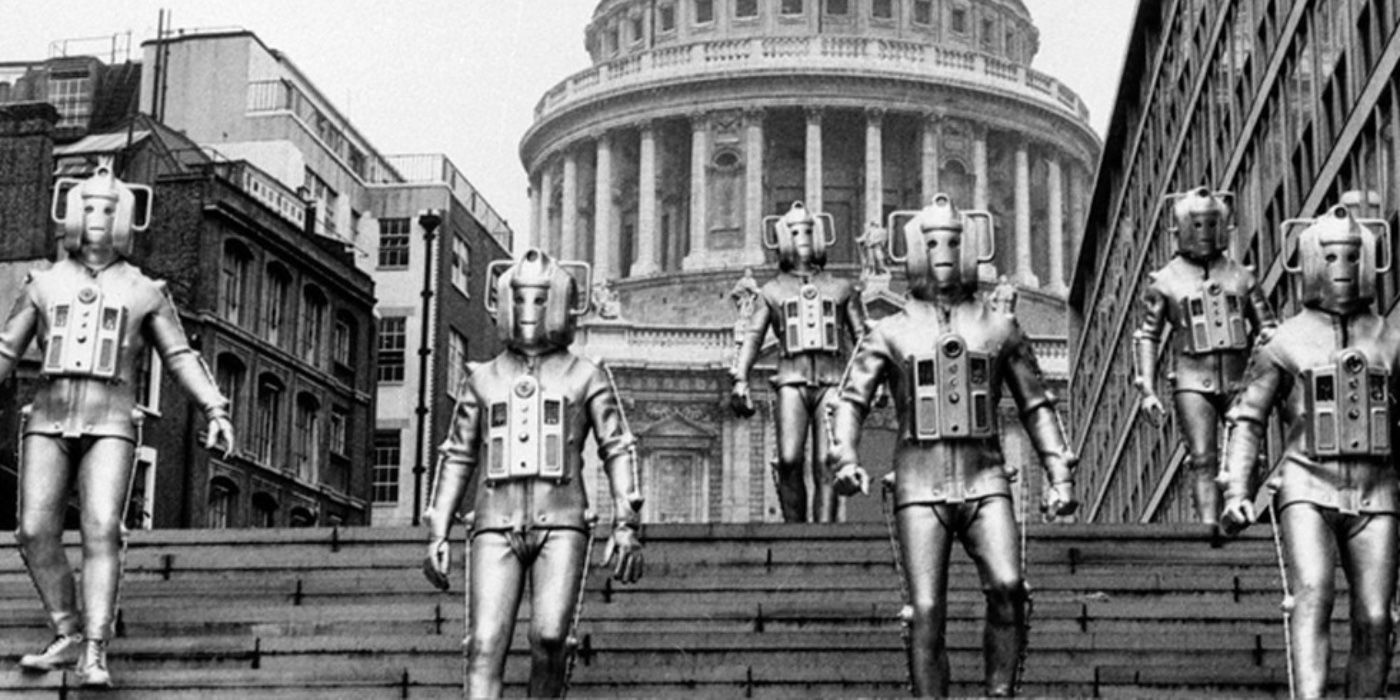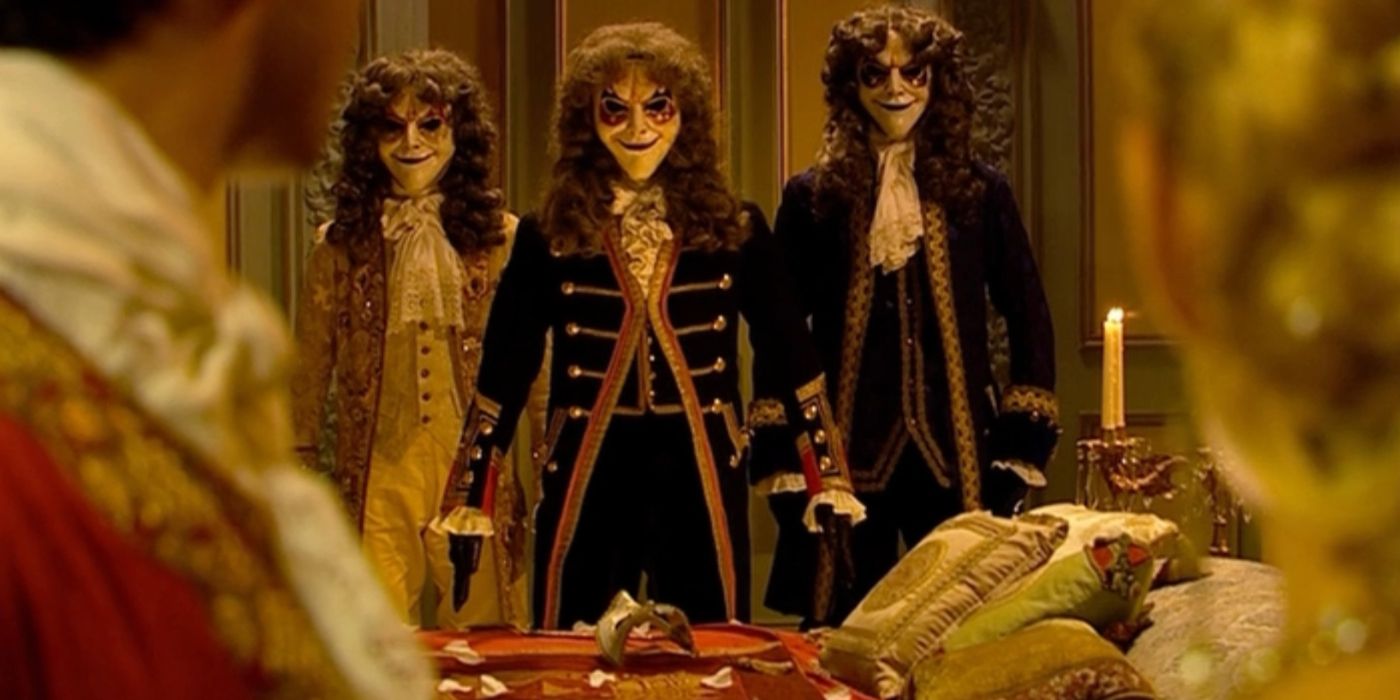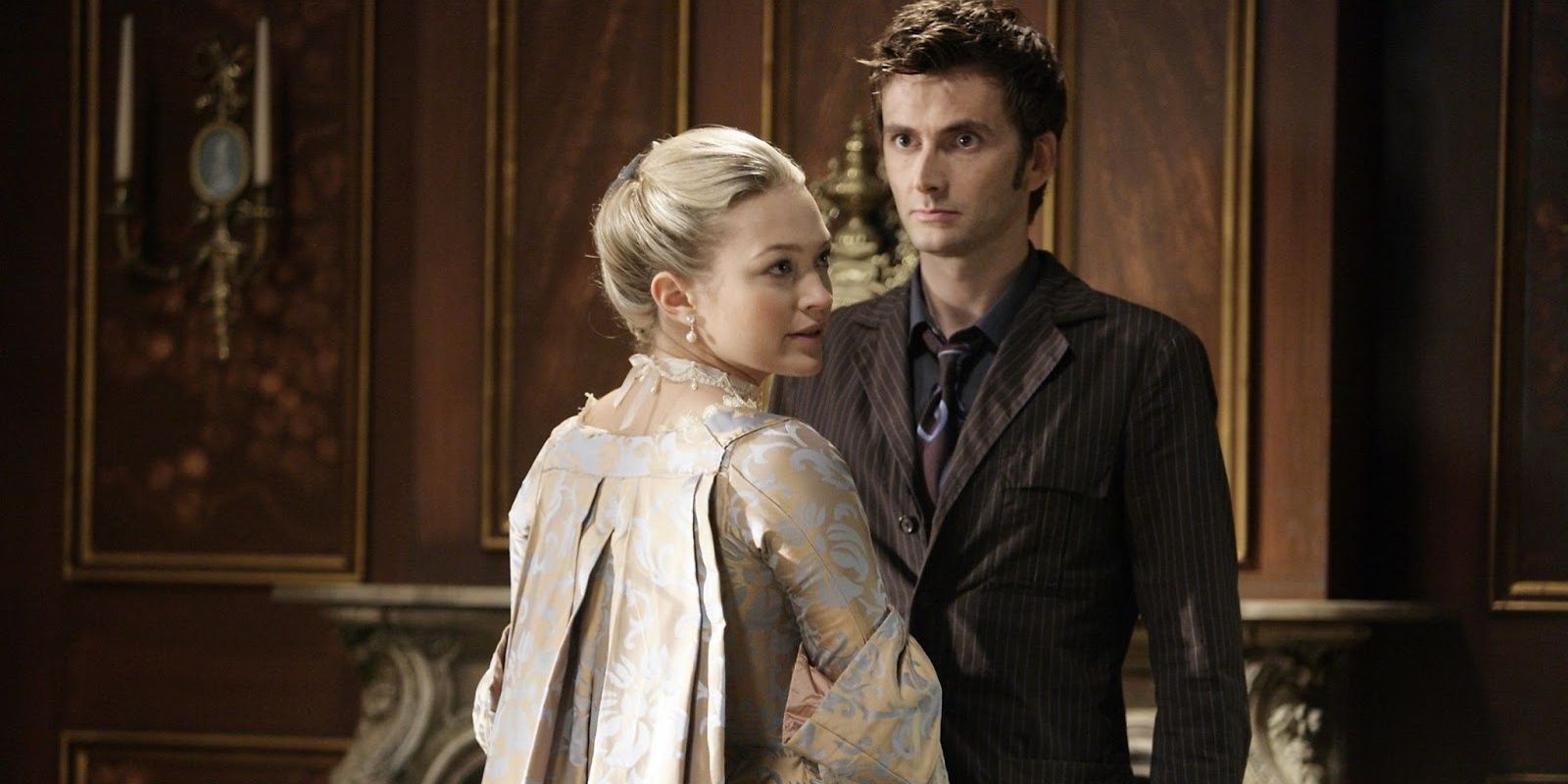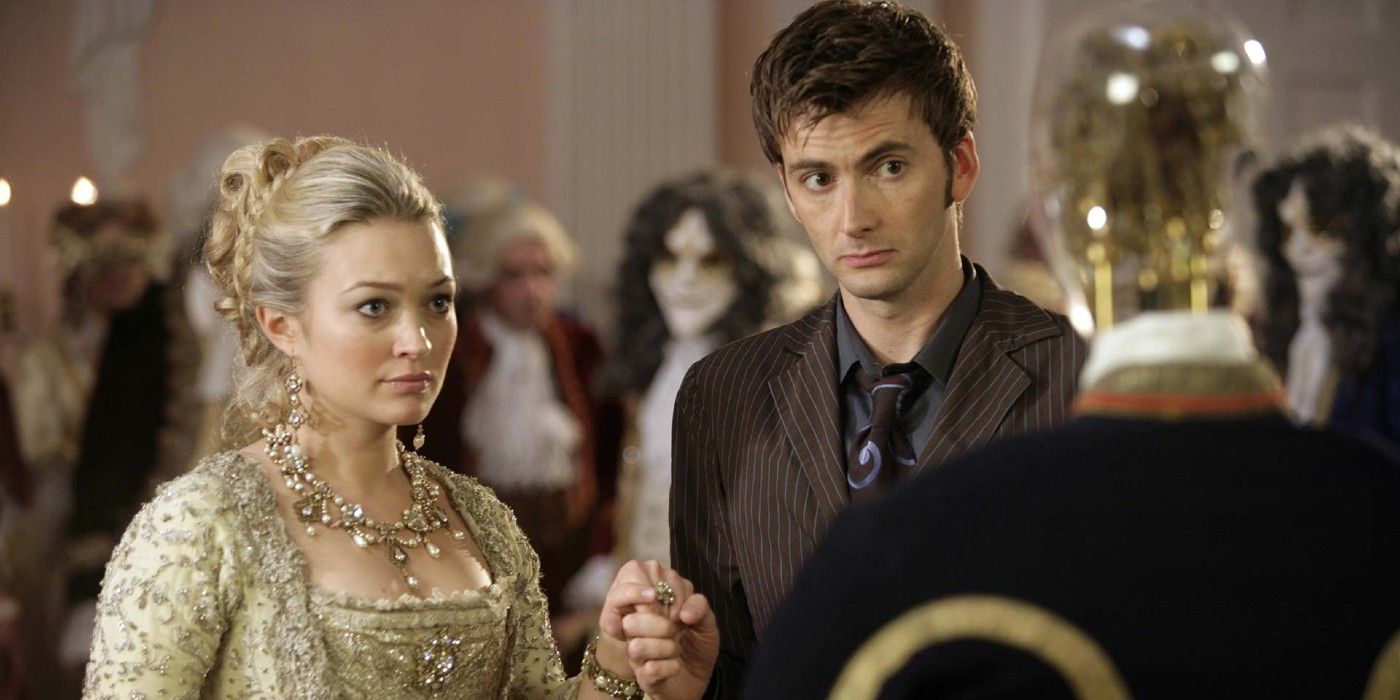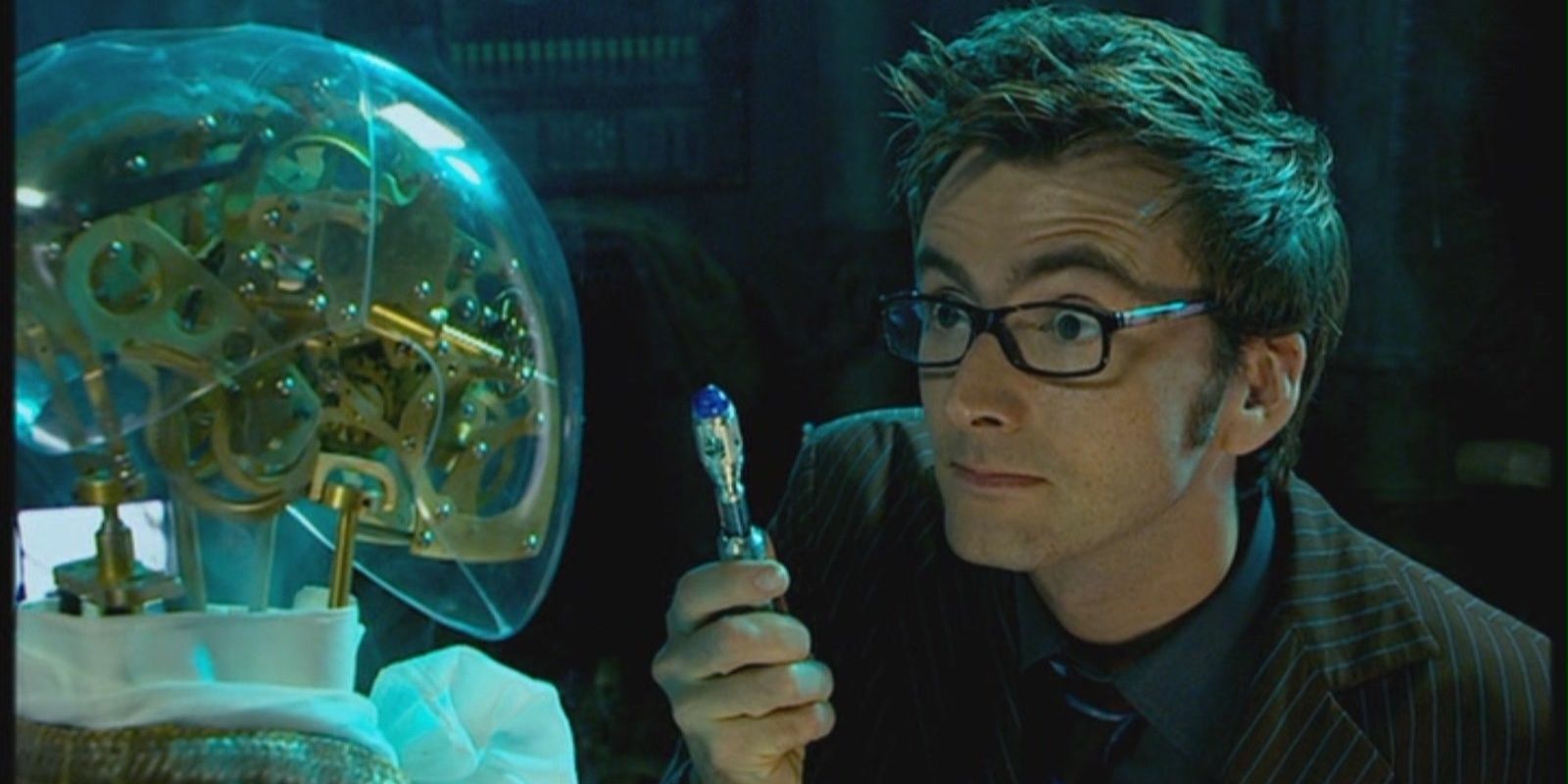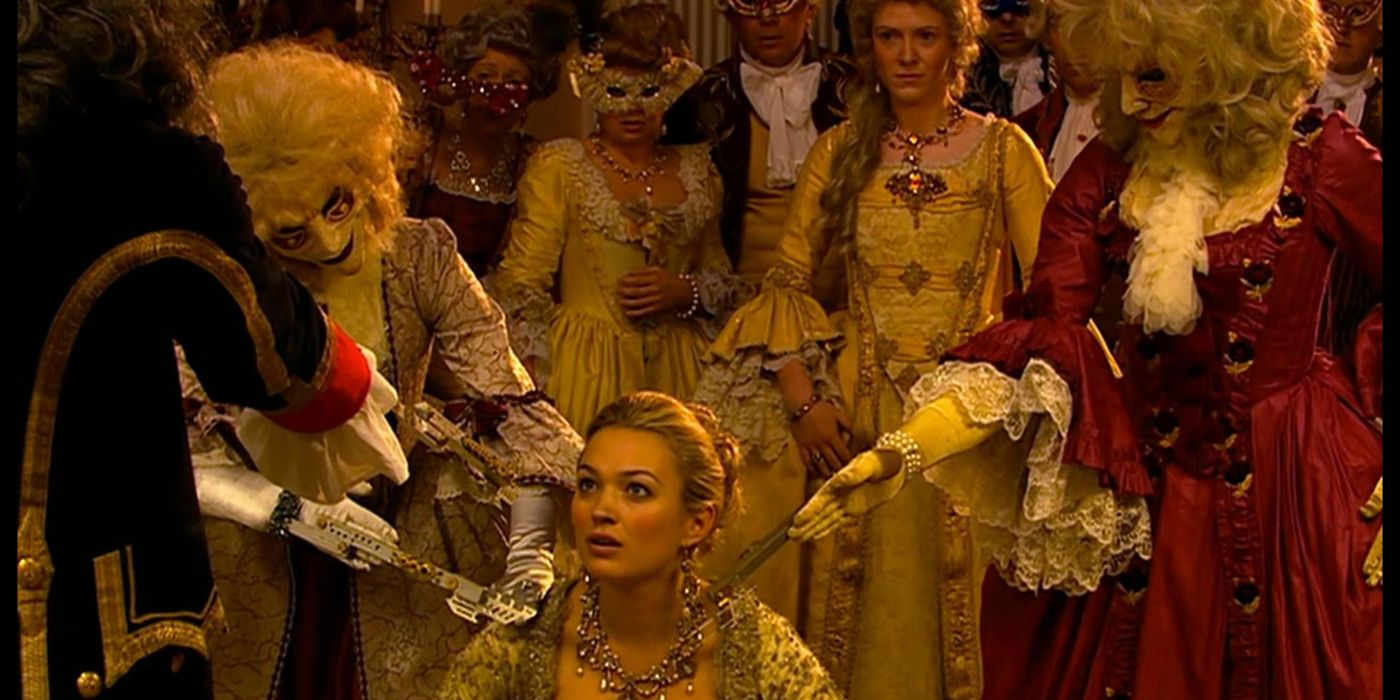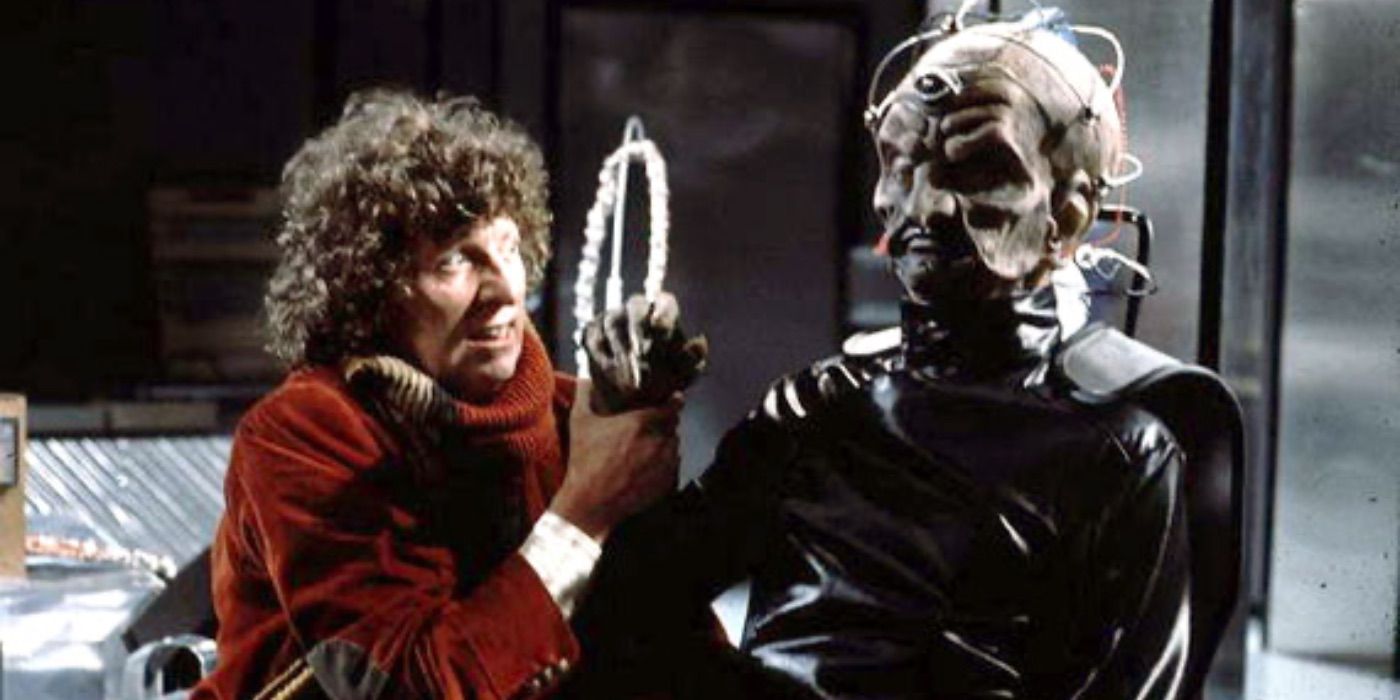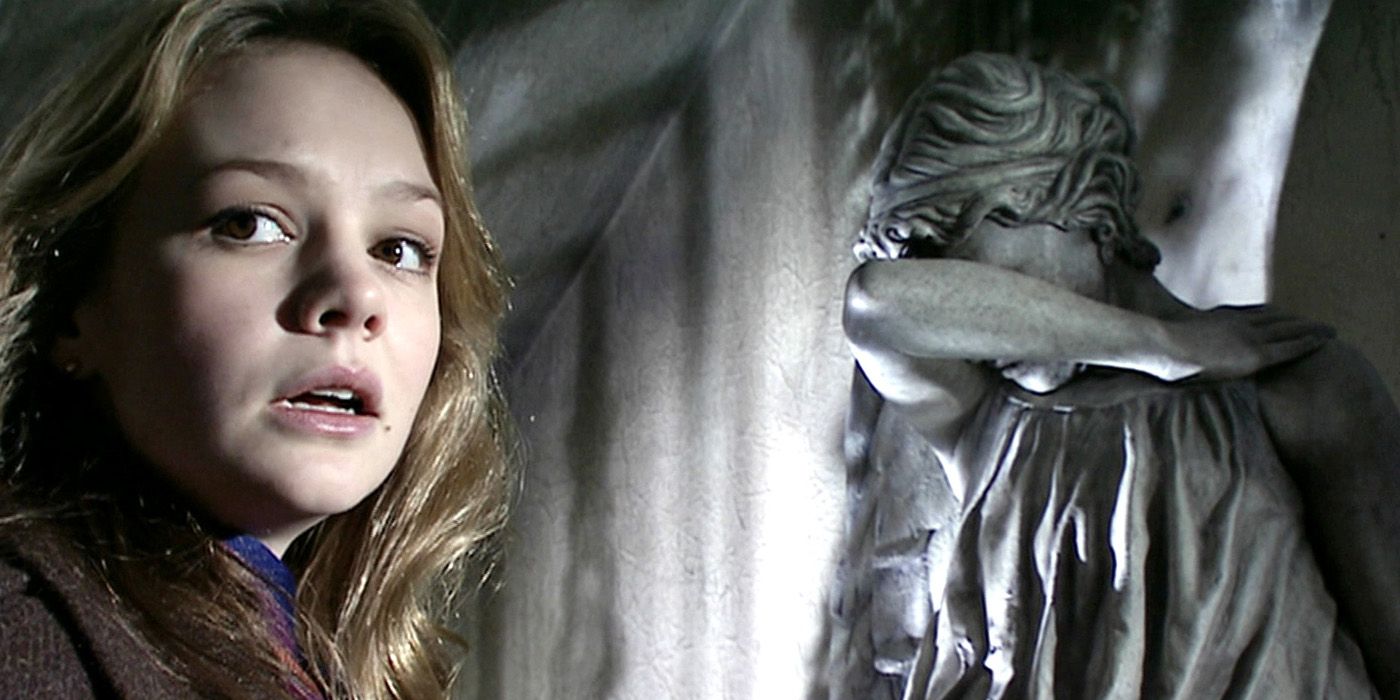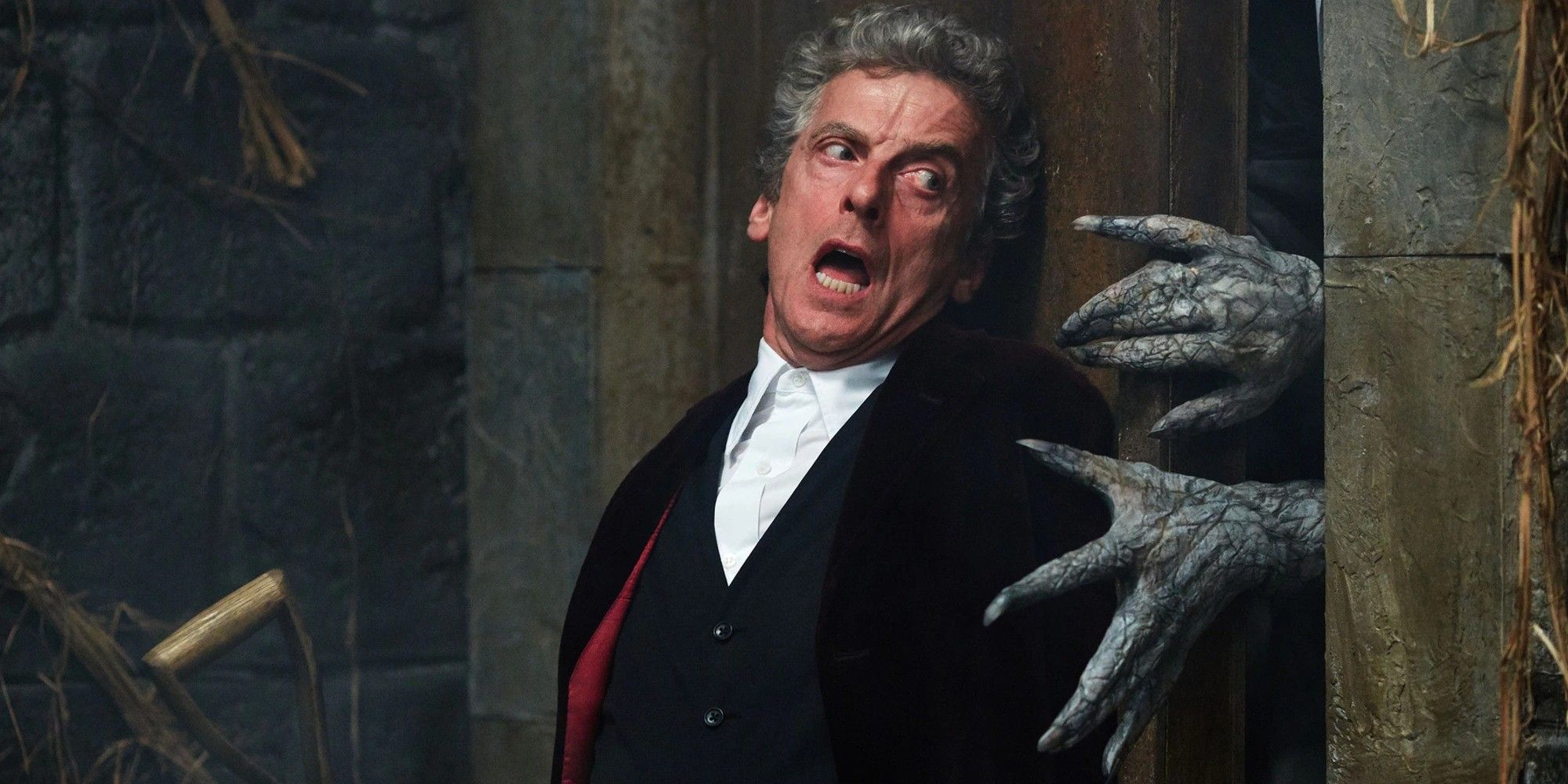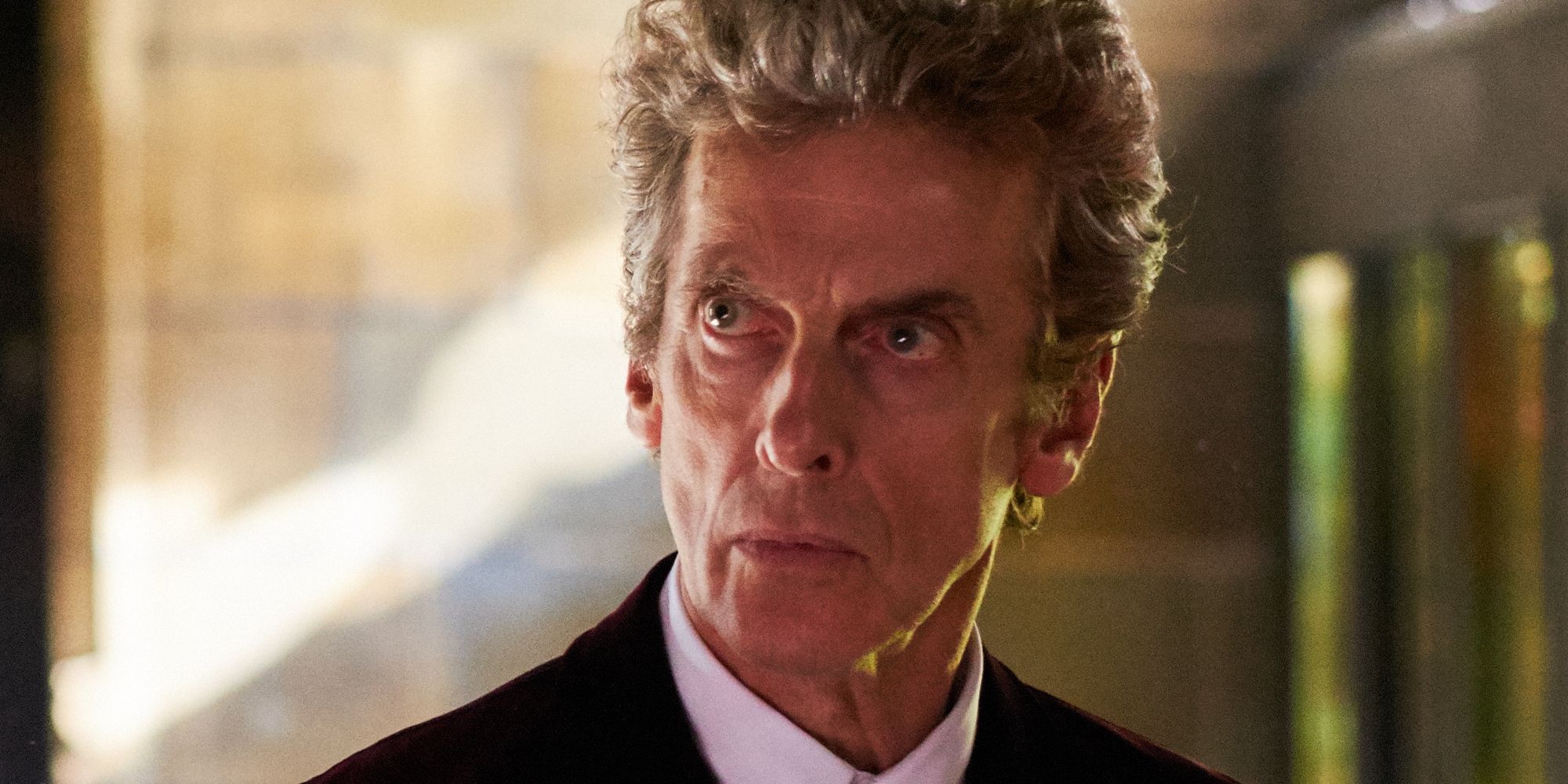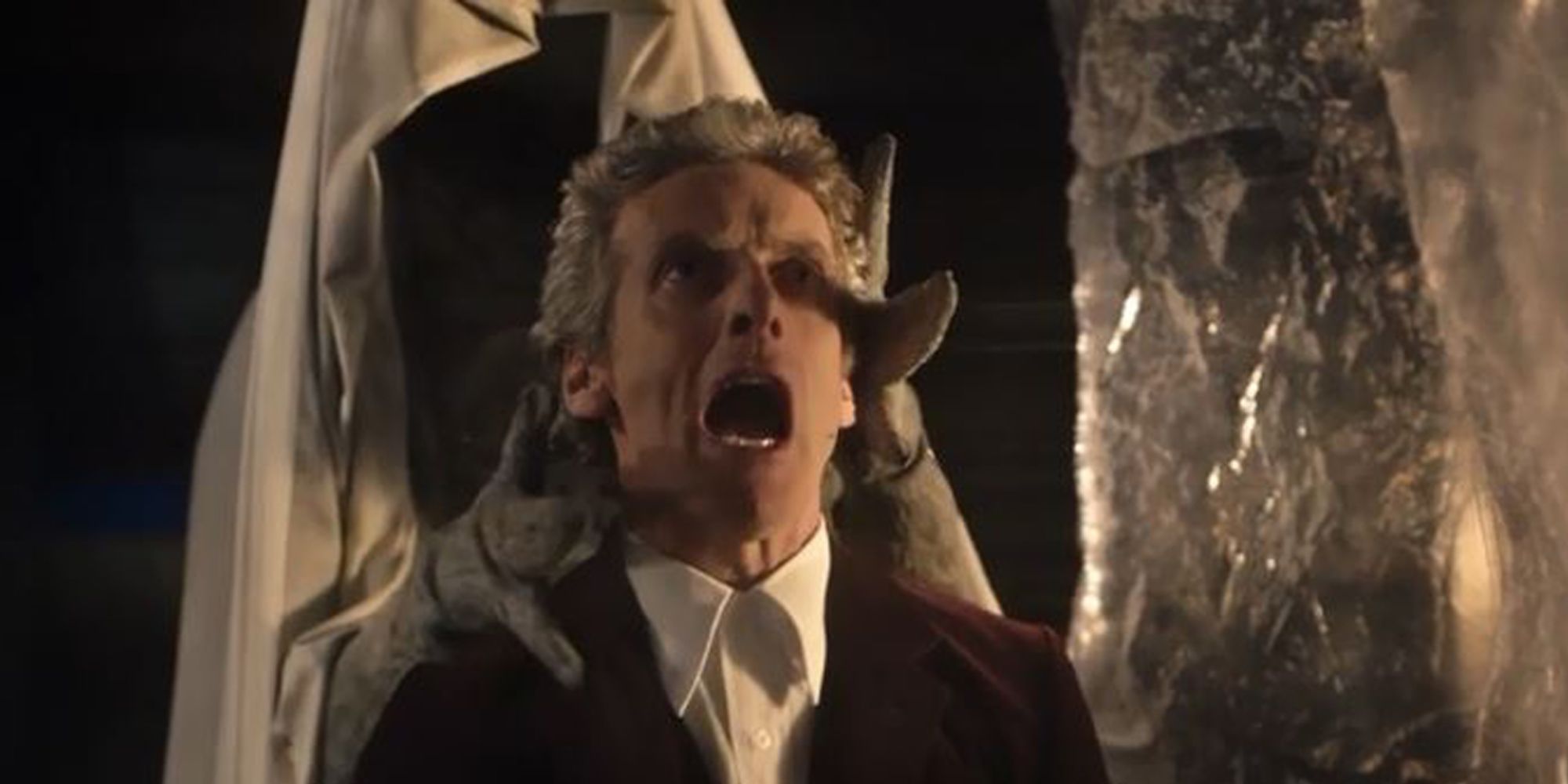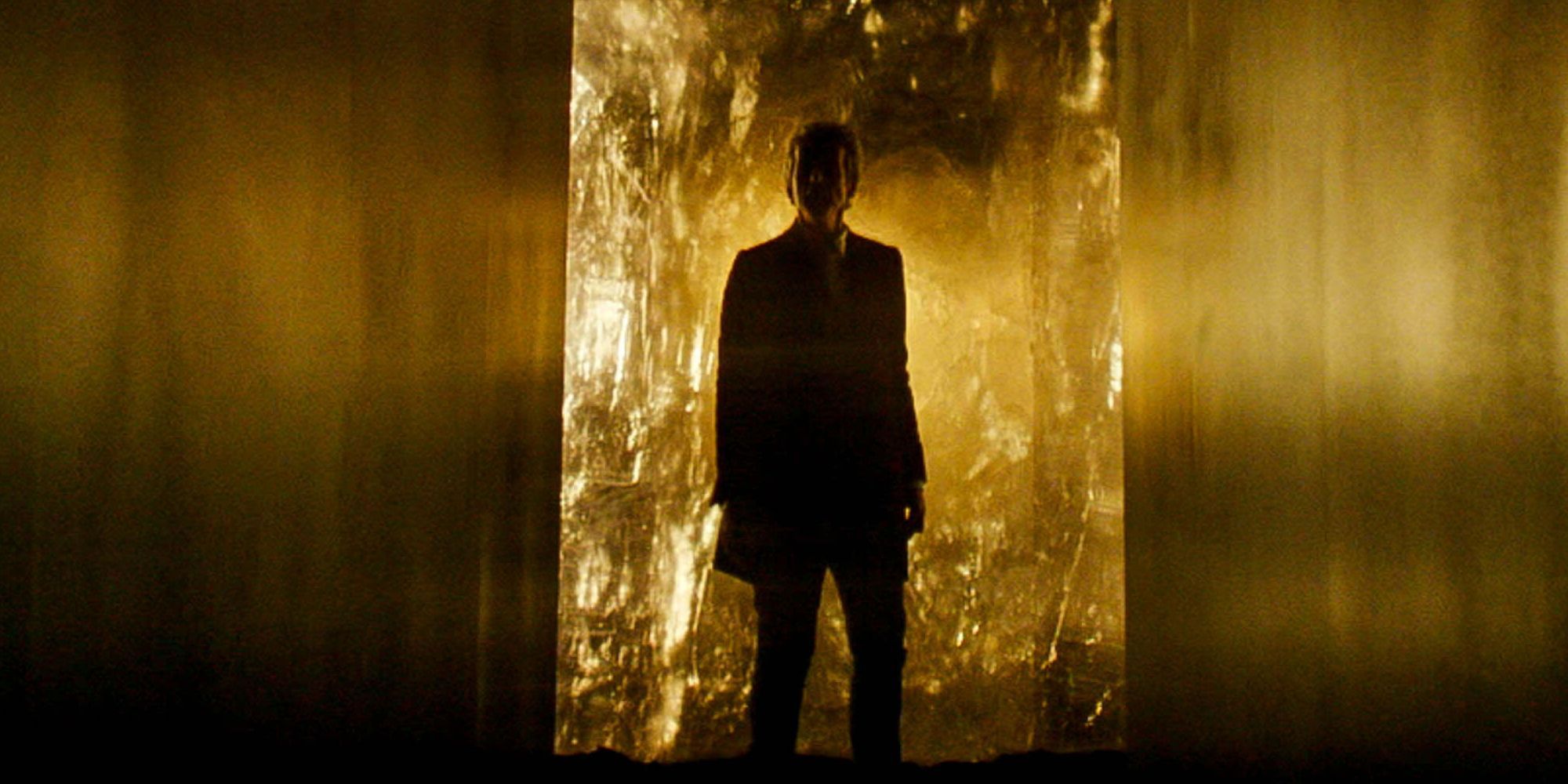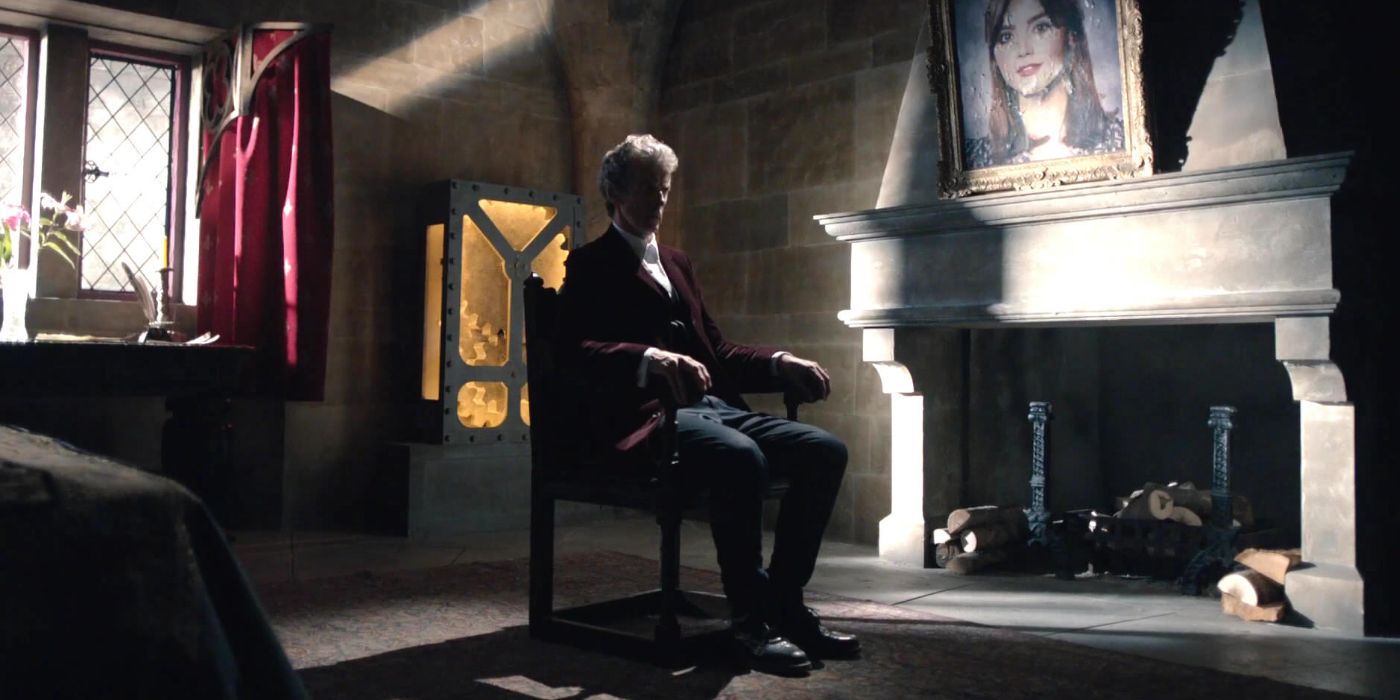25 Greatest Doctor Who Stories Of All Time, Ranked
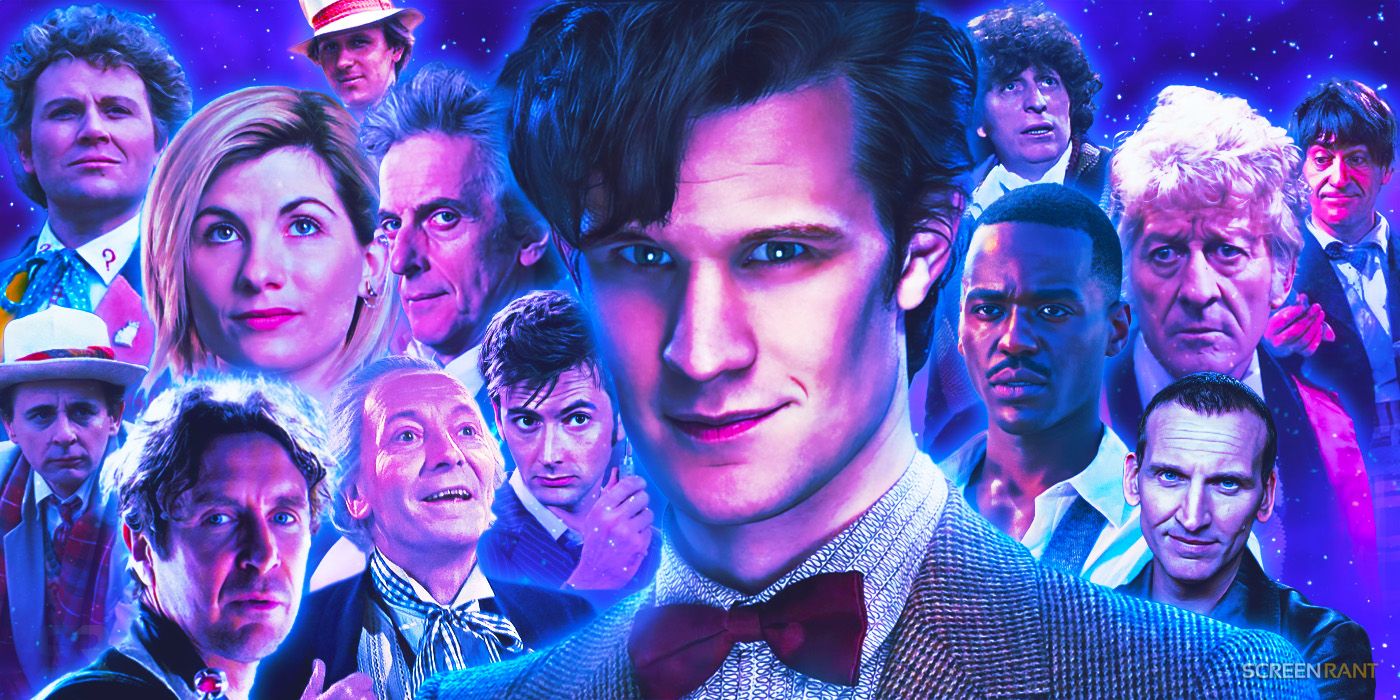
SUMMARY
- Doctor Who episodes span various genres, showcasing thrilling sci-fi, drama, and romance, resonating differently with each viewer and era.
- Notable classics like “The Caves of Androzani” and modern gems like “Blink” highlight the show’s storytelling depth and evolution.
- Episodes like “The Day of the Doctor” and “Genesis of the Daleks” masterfully blend action, suspense, and lore to create timeless Doctor Who moments.
The best Doctor Who episodes of all time include stories from the Time Lord’s six decades on TV. As an institution of both the sci-fi genre and British culture, Doctor Who means different things to different viewers. Each generation has its version of Doctor Who — “their” Doctor. Doctor Who is also one of the few TV shows capably moving week-on-week between suspenseful horror, philosophical drama, and heartbreaking romance. Like Colin Baker, Doctor Who wears a coat of many colors, which makes it a challenge in determining the series’ best stories.
Many would agree that their favorite Doctor Who episodes include serials from the classic era and two-parters from modern Doctor Who runs. It is also important to know that multiple Doctor Who episodes from the 1960s remain missing or incomplete. There are great episodes from almost every era of Doctor Who, from early installments with William Hartnell, Tom Baker, Peter Davison, and Jon Pertwee to more modern seasons with Christopher Eccleston, David Tennant, Matt Smith, Jodie Whittaker, and everyone in between. Each Doctor is different, but all bring their own unique touch to the long-running franchise.
25 City Of Death
First aired: September 29, 1979 (Fourth Doctor)
When it comes to Doctor Who, many new fans might be overwhelmed about getting started because the series has so many episodes, history, and lore across its six decades. Starting with the 2005 reboot is one way to go, but for those who want to go back to classic Doctor Who, the 1979 serial, “City of Death,” is a nice starting point that requires little prior knowledge.
This is from the show’s 17th season with a script by Douglas Adams (The Hitchhiker’s Guide to the Galaxy). This has the Fourth Doctor (Tom Baker) joined by Laila Ward as Romana, Julian Glover as Count Scarlioni, and even an appearance by John Cleese. The episode is almost more Douglas Adams than Doctor Who, but it has enough for fans of both to love. The Doctor and Romana go to Paris to eat and end up involved with an alien who wants to steal the Mona Lisa, and absurdity and fun follow.
24 Remembrance of the Daleks
First aired: October 5, 1988 (Seventh Doctor)
There are many episodes about the Daleks, as they are the most iconic of Doctor Who villains, even if they didn’t always have the best stories. This specific episode came from the 25th season, and the Seventh Doctor, and it was the 25th Anniversary episode of the series. While the Daleks are normally at odds with the series protagonist, The Doctor and Ace show up to help them fight during an all-out war between the Daleks and the military, but the episode is much bigger than just that battle.
This episode celebrates Doctor Who as a series, with a return to 76 Totter’s Lame in 1963 for this battle. Not only are there Daleks to battle, but there are Renegade Daleks, and the two factions are attacking each other. While the Daleks had taken a beating over the years and had almost become irrelevant in the lore, this episode revitalized the entire idea of them. It ensured that there was a blueprint to use when the series was revived years later, and it’s easy to see the future in this 1988 episode.
23 Demons of the Punjab (2018)
First aired: November 11, 2018 (Thirteenth Doctor)
“Demons of the Punjab” is an episode involving the Thirteenth Doctor, and it was one of the most moving stories of her run on the series. When Taz asks to go back in time to Punjab to learn more about her family’s tragic history, the Doctor agrees, and they go back to when the family was torn apart after the division of the countries. This is a very different type of Doctor Who story, which isn’t about fighting aliens but instead about watching a young hero die and his bride face this devastation.
Sometimes, it is important for Doctor Who to deal with these issues. This is a story about ethnic cleansing, religious intolerance, and many things that affect the real world today, just as it was a decade ago. The villains here don’t need to be aliens because the greatest evil in this instance comes from humans. There are aliens in the Thijarians, but they are simply observing the horrors and atrocities the humans bring upon themselves, and that makes for a hauntingly terrifying and somber episode.
22 Pyramids Of Mars
First aired: October 25, 1975 (Fourth Doctor)
“Pyramids of Mars” is one of the four-part Doctor Who serials that came out in 1975 during the reign of the Fourth Doctor. In this season, the show was really laying into the idea of sci-fi horror, with the scary horror tropes mixed with science fiction flavor to create something unique and special. In this case, it is the idea of mummies and Egyptian gods but changed into something different with the Doctor’s brand of science fiction and fantasy rather than straight horror.
Gabriel Woolf (the voice of Sutekh) returned to Doctor Who to voice The Beast in “The Impossible Planet.”
Written by Stephen Harris (the pseudonym used by Robert Holmes and Lewis Griefer) and directed by Paddy Russel, the series sees a brilliant villain in Sutekh, the God of Death, who is actually a member of an alien race known as the Osirans. He is based on the Egyptian deity Set, and uses an archaeology professor named Marcus Scarman (Bernard Archard) to help free him. With great special effects and a quality horror story, this remains a fun adventure for Doctor Who fans with a taste for the macabre.
21 The Impossible Planet / The Satan Pit (2006)
First aired: June 3 / June 10, 2006 (Tenth Doctor)
“The Impossible Planet” and “The Satan Pit” make up a two-part Doctor Who story for the Tenth Doctor (David Tennant). This episode starts on a sanctuary base for deep-space expeditions where the Doctor and Rose encounter Oods, a docile race of aliens used to help work on the station. However, soon, they realize there is a great danger on the planet Krop Tor, which is orbiting a black hole. This comes from the Beast (voiced by Gabriel Woolf from “Pyramids of Mars”).
The story is another horror tale mixed with the sci-fi ideas that Doctor Who fans love. The villain here is close to the Devil himself, meaning that everyone, including the Doctor, might be in over their heads. The setting aboard the space station creates a claustrophobic atmosphere, so when the possessed Toby (Will Thorp) starts his attacks, it is a terrifying situation. The best Doctor Who episodes are horror-centric, and this one has what might be the ultimate evil gunning for the Doctor.
20 The Curse Of Fenric
First aired: October 25, 1989 (Seventh Doctor)
Sylvester McCoy’s tenure in the TARDIS was tumultuous, with the BBC canceling Doctor Who in late 1989. Nevertheless, McCoy’s Seventh Doctor, alongside Sophie Aldred as Ace, went down swinging. 1989’s “The Curse of Fenric” proved that, despite its impending demise, Doctor Who was still capable of thrilling sci-fi storytelling and creative twists. McCoy’s Doctor Who had been taking daring risks, attempting to weave more mystery into the aging franchise via the “Cartmel Masterplan,” which would have ultimately rewritten the Doctor’s origin story wholesale.
While that arc was never fully realized onscreen, “The Curse of Fenric” perfectly represented what Doctor Who was trying to achieve as the 1990s beckoned. Not as narratively or visually sophisticated as other all-time great Doctor Who stories, “The Curse of Fenric” showcased the darker side of McCoy’s Seventh Doctor, the strength of Ace as his companion, and the big, lore-breaking swings Doctor Who was prepared to take. It could even be said that by delivering such a strong outing so close to the show’s cancelation, “The Curse of Fenric” helped to make the case for Doctor Who‘s eventual comeback.
19 Fugitive Of The Judoon
First aired: January 26, 2020 (Thirteenth Doctor)
Through no fault of her own, Jodie Whittaker’s stint on Doctor Who is notably lacking in standout episodes, made worse by the controversial Timeless Child arc. There were notable exceptions, and 2020’s “Fugitive of the Judoon” earned a place among the best Doctor Who episodes. At its core, “Fugitive of the Judoon” is a tense thriller that puts the Doctor between a Judoon platoon and its quarry on present-day Earth. “Fugitive of the Judoon” coaxed out some of Whittaker’s strongest performances by separating the Doctor from her group.
Yaz, Graham, and Ryan shone brightly, aided by a cameo from Captain Jack Harkness foreshadowing a threat in the Doctor’s future. A wild final act kicked “Fugitive of the Judoon” into overdrive, bringing back the chameleon arch to debut a brand-new Doctor portrayed by Jo Martin and bolting an undeniably fascinating new dimension onto Whittaker’s era. Martin’s Fugitive Doctor was a revelation, her sparring with Whittaker sublime, and the execution perfectly measured. It would all fall apart in “The Timeless Children,” but the setup and promise left behind as “Fugitive of the Judoon” rolled credits was a rare treat.
18The Five Doctors
First aired: November 23, 1983 (20th anniversary special)
1983’s 20th-anniversary special was an imperfectly glorious celebration of all things Doctor Who. The episode was, admittedly, dampened by the misleading title. The show recast the First Doctor after William Hartnell’s death, and Tom Baker declined a return, resulting in his Doctor inserted via footage from an unaired episode, “Shada.” Even so, Patrick Troughton and Jon Pertwee blended wonderfully with Peter Davison, and the companion mashup added a fresh flavor to the familiar faces. With Daleks, Cybermen, and the Master joining the fun, “The Five Doctors” often felt like the greatest hits for Doctor Who fans.
“The Five Doctors” was brimming with fun, and the love letter to Doctor Who‘s first 20 years felt genuine, not gimmicky. An often overlooked strength of “The Five Doctors” is its compressed running time. Doctor Who serials usually comprised four to six 30-minute installments, and stretching a single narrative for so long inevitably resulted in many classic Doctor Who capers bloating with needless filler. As a single 90-minute special, “The Five Doctors” was snappier and more action-packed by comparison, with the feature-length format big enough to accommodate the massive cast but tight enough to avoid pacing pitfalls.
17 The Daleks
First aired: December 21, 1963 (First Doctor)
It is hardly unreasonable to claim that Doctor Who spent the First Doctor’s entire era discovering itself. Only after William Hartnell regenerated into Patrick Troughton did Doctor Who resemble what audiences know and love today. None of that would have been possible without “The Daleks.” Appreciating the true impact of this iconic serial is virtually impossible from a modern perspective. A marked departure from “An Unearthly Child” and its caveman-based antics, “The Daleks” may seem primitive, but it represented a bold step toward finding Doctor Who‘s soul in its rawest form.
Terry Nation’s imaginative vision and world-building drove “The Daleks” forward. Examined through a contemporary lens, “The Daleks” contained prime examples of the horror imagery and sci-fi morality Doctor Who would later come to embrace every week, and while the serial lasted two episodes longer than necessary, the cultural impact “The Daleks” left in its wake is a testament to the quality of Nation’s concept. Some elements haven’t aged well but as the keystone of what Doctor Who ultimately became, the first appearance of TV’s most lethal pepper pots deserves to be recognized.
16 The End Of Time
First aired: December 25, 2009 (Tenth Doctor)
Doctor Who hit new heights of acclaim and popularity under David Tennant’s Tenth Doctor, so when the actor stepped down in 2009, the occasion demanded a massive regeneration storyline. “The End of Time” was certainly that. Russell T Davies’ parting shot as Doctor Who showrunner (the first time around) conjured up an emotional tour de force, digging deeper into what it means to regenerate. John Simm’s Master resurfaced even more complex and compelling than his original stint in season 3. However, Timothy Dalton’s Rassilon anchored “The End of Time” with a truly fearsome enemy.
Doctor Who thrives when putting the Doctor in the most desperate situations, and “The End of Time” takes Tennant’s Time Lord to the very edge, culminating in a noble sacrifice. As expected, Tennant rose to the occasion, but his partnership with Bernard Cribbins’ Wilf made “The End of Time” truly special. The Doctor-companion dynamic so often mirrors that of a teacher and student, but as the Tenth Doctor’s arrogance ballooned in his dying adventures, it was the Time Lord looking to Wilf for a role model. That reversal proved the critical difference between sentimental nonsense and a touching farewell.
15 The Deadly Assassin
First aired: October 30, 1976 (Fourth Doctor)
“The Deadly Assassin” represented a monumental risk for Doctor Who. Taking place between the departure of Elisabeth Sladen as Sarah Jane Smith and the introduction of Louise Jameson as Leela, this episode offered Tom Baker the opportunity to go solo for a single adventure. Naturally, he made the most of it. The Fourth Doctor era reveled in mystery stories, and “The Deadly Assassin” was among the best, spinning a fascinating tale involving Time Lord conspiracies, the Master, and Gallfrey’s Matrix.
Robert Holmes’ ambitious 1976 script had an immeasurable impact on Doctor Who for years to come. Everything from “The Five Doctors” and “The Trial of a Time Lord” to “The End of Time” and “Hell Bent” owes a debt to the solid foundation that “The Deadly Assassin” provided for Gallifreyan society. In the absence of a companion, and with the Master no longer played by the charismatic Roger Delgado following the actor’s death, Bernard Horsfall’s Chancellor Goth and Angus MacKay’s Borusa stepped into the supporting character breaches as perfect foils to Baker’s unleashed Fourth Doctor.
The greatest strength of “The Deadly Assassin,” however, lies in its genuine stakes. The opening flashforward and the presence of Time Lords — still seldom used at that point — meant anything was possible. When episode 3’s stunning cliffhanger seemingly showed Goth drowning the Fourth Doctor, even the most cynical viewer would have doubted whether the hero could escape this latest certain death.
14 The Day Of The Doctor
First aired: November 23, 2013 (50th anniversary special)
The pressure was on for Steven Moffat to deliver for Doctor Who‘s 50th anniversary — not only the most notable milestone in the show’s history at that point but also the first big anniversary of Doctor Who‘s modern era. As the title suggests, “The Day of the Doctor” was the quintessential collaboration of all things Doctor Who, making the combination of past, present, and future look far easier than it had any right to. The nostalgia came in spades, most notably during the final multi-TARDIS combo strike and Tom Baker’s cameo as the enigmatic Curator.
Focusing on the Time War and the inevitably brilliant interplay between David Tennant and Matt Smith, “The Day of the Doctor” avoided the self-indulgence of “The Five Doctors.” Throwing John Hurt’s War Doctor and a brief cameo from Peter Capaldi into the mix, Moffat showed in no uncertain terms that Doctor Who was far from running out of ideas. While “The Day of the Doctor” cannot be considered among Doctor Who‘s most sophisticated or ambitious scripts, its story’s relative simplicity beautifully underlined Doctor Who‘s message as a franchise: hope.
The 50th-anniversary episode struck an unashamedly joyful note. Without ever succumbing to the saccharine get-togethers Moffat’s predecessor was so fond of, he crafted arguably the most uplifting moment in Doctor Who history, as Doctors from across the time vortex worked together to save their home planet. If one episode could ever exemplify the values and themes inherent to Doctor Who, this was it.
First aired: March 8, 1984 (Fifth Doctor)
Despite having the unenviable job of following Tom Baker, Peter Davison has starred in Doctor Who‘s best regeneration story of the classic era. “The Caves of Androzani” took the Fifth Doctor’s reputation as a more human, amiable incarnation of the Time Lord to its logical conclusion, as he nobly sacrificed his fifth form to save dying companion Peri Brown. The Fifth Doctor and Peri may not have been the most memorable Doctor Who pairing, but Five’s tenacious effort to protect his companion made for a perfect final chapter.
The Phantom-esque Sharaz Jek, portrayed by Christopher Gable, proved devilishly complex and surprisingly nuanced, making him a worthy final adversary. The masked villain could have easily descended into a mire of hammy melodrama. However, Gable kept Sharaz on the right side of creepy, almost stealing the show from Davison at his farewell party. Regardless, Davison made “The Caves of Androzani” sing, playing up the Shakespearean aspects of Robert Holmes’ script and making the Fifth Doctor’s desperate four-episode struggle grip until the very last scene.
12 Inferno
First aired: May 9, 1970 (Third Doctor)
Doctor Who‘s illustrious back catalog contains no shortage of parallel universe stories, but few match “Inferno.” This Don Houghton effort showcased the very best Jon Pertwee’s era could offer — rogue scientists, the darker side of Doctor Who‘s UNIT organization, body horror, and heavy political overtones. The bones of the plot were typical 1970s Doctor Who, incorporating an ill-advised science expedition and some budget-friendly monsters. Fortunately, “Inferno” made up for its deficiencies with a dystopian alternate reality that provided enough creativity, suspense, and terror for both universes.
Evil Brigadier was a joy, while Military Liz finally allowed Caroline John to do more than stand around looking puzzled for her final Doctor Who appearance. As is a common theme among Doctor Who‘s best episodes, the greatest trick “Inferno” pulled was isolating the Doctor from his familiar trappings. Launched into a crumbling, doomed dictatorship, the Third Doctor looked desperate, dangerous, and more dynamic than ever — especially after narrowly escaping from a version of the UK he couldn’t protect. “Inferno” has aged worryingly well, and the shades-of-gray characterization shows an ethical depth more commonly found in modern Doctor Who.
11 World Enough & Time/The Doctor Falls
First aired: June 24, 2017 (Twelfth Doctor)
Peter Capaldi’s Twelfth Doctor was one of the less emotionally open regenerations, infamously requiring Clara’s cue cards to navigate social situations. However, the beginning of the end of Twelve proved to be one of the most emotionally affecting stories Doctor Who ever produced. Eschewing the multi-Doctor trope for a multi-Master story, John Simm and Michelle Gomez combined to create magic. Throwing Cybermen into the narrative could have become messy, but “World Enough & Time/The Doctor Falls” serves as an origin story for Mondas’ finest, which means that the combination of Masters and Cybermen makes sense.
Capaldi played a Doctor waging a lonely war, physically and mentally beleaguered more than ever. Pearl Mackie’s Bill Potts was the cause of that sadness, at the center of possibly the darkest Doctor Who moment in all six decades when she permanently, legitimately got turned into a Cyberman. Audiences felt every ounce of pain etched into Capaldi’s grief-ridden glare. Even after the Time War, “World Enough & Time/The Doctor Falls” remains the closest Doctor Who has dared venture toward an outright sci-fi war story, in this deeply chilling story about sacrifice and loss.
10 The Enemy Of The World
First aired: December 23, 1967 (Second Doctor)
“The Enemy of the World” was one of the too many Doctor Who episodes that spent decades lost in the wilderness, unable to be appreciated by a fandom that had grown exponentially since first airing. Fortunately, this story’s missing episodes were discovered in Nigeria in 2013, allowing new generations to enjoy what ultimately proved to be one of Patrick Troughton’s best Doctor Who credits. “The Enemy of the World” proposed a story years ahead of its time, pitting the Second Doctor against a futuristic megalomaniac that just so happened to look exactly like Patrick Troughton.
The resulting tale of espionage, impersonation, and dystopian futurism existed miles away from the Second Doctor’s usual shtick. David Whitaker’s script blended all three surprisingly well onto the Doctor Who canvas, aided considerably by Troughton’s expert juggling of his two characters and a social subtext that remains pertinent over half a century later. Devoid of the usual monsters and mayhem, “The Enemy of the World” used Doctor Who‘s time travel mechanic to dip into more sophisticated and speculative sci-fi territory. “The Enemy of the World” being rediscovered in the 2010s allowed the serial to finally get the attention it deserved.
9 The Empty Child/The Doctor Dances
First aired: May 21, 2005 (Ninth Doctor)
When Russell T Davies relaunched Doctor Who in 2005, his success was far from guaranteed. However, the two-part “The Empty Child/The Doctor Dances” cemented Doctor Who as essential viewing post-millennium. The World War 2 period piece also proved RTD’s fresh perspective was even more scary, thrilling, and addictive than before. The visual of a gas mask-clad child asking, “Are you my mummy?” redefined the stereotype of watching Doctor Who from behind a sofa cushion out of sheer terror, but the underlying message of love in wartime ensured there was genuine substance behind the scariness.
Captain Jack Harkness proved to be a stroke of genius, the lovable rogue bringing color to Doctor Who‘s black-and-white moral palette. Jack’s incessant flirting, meanwhile, further dispelled the notion of Doctor Who as a stuffy, old-fashioned, sexless relic from a bygone era. This first example of how potent the duo of RTD and Steven Moffat could be — two self-confessed, longtime Doctor Who fans — defined the next decade of Time Lord adventuring, creating a template that perfectly married together what everyone already loved with new elements that would never have passed muster with script editors of yore.
8 The Daemons
First aired: May 22, 1971 (Third Doctor)
Being exiled to Earth by the Time Lords meant Jon Pertwee’s Third Doctor spent several serials pottering around rural England exploring quaint folklore myths. 1971’s “The Daemons” was the best of these. Presenting Roger Delgado’s Master as a demonic figure summoning the spawn of Satan was a natural evolution. It created a tone that spoke perfectly to the more fantastical temptations of that period. The horror-tinged plot was schlocky, to be sure, and barely less frightening in the 2020s than it was in 1971, but that is undeniably part of the appeal.
“The Daemons” managed to produce campy, dramatic bombast with an all-important knowing wink that not all Doctor Who‘s classic offerings remembered to include, and such astute self-awareness allowed the gothic tale to blend with sci-fi and flourish. It is no stretch to see why Pertwee described “The Daemons” as his favorite story from the Third Doctor era (via BBC). That enjoyment came across onscreen as he visibly relished playing alongside the equally game duo of Katy Manning as Jo Grant and Nicholas Courtney as the Brigadier. Incidentally, “The Daemons” was arguably the greatest showcase for UNIT’s lovable Brigadier-Benton-Yates triumvirate.
7 Human Nature/The Family Of Blood
First aired: May 26, 2007 (Tenth Doctor)
Yet another example of Doctor Who taking a big swing and reaping the rewards, the success of “Human Nature/The Family of Blood,” derived mainly from Paul Cornell, whose concept envisaged the Doctor as an ordinary 20th-century human. That quietly ingenious idea invited a plethora of moral problems, from the Doctor’s dark side emerging while punishing the Family of Blood to John Smith’s almost childlike reluctance to resume traveling through time and space. Add to that the impending tragedy of war on Earth, and “Human Nature/Family of Blood” immediately became one of Doctor Who‘s most essential stories ever told.
It is a testament to Cornell’s writing that, despite the episode’s various miseries, this Doctor Who two-parter never became weighed down by the darkness of its concept. The Doctor’s love story and endearing teacher-student relationships exuded enough hearty warmth to balance the tonal books. “Human Nature/The Family of Blood” would pack nowhere near as much punch, however, if it weren’t so relentlessly creepy. The moving scarecrows were terrifying enough, but how Harry Lloyd captured Son of Mine’s maniacal glare without visual effects is difficult to fathom.
Further cementing its place in the annals of Doctor Who history, Cornell’s introduction of the chameleon arch opened many doors, allowing RTD to spring a Master-ful surprise and Chris Chibnall to debut Jo Martin’s Fugitive Doctor. The major drawback of “Human Nature/The Family of Blood” was how badly it highlighted the limitations put upon Martha as a Doctor Who companion. Season 3 occasionally struggled to paint Martha as more than a Tenth Doctor fangirl, woefully underusing Freema Agyeman. Nothing made this more evident than Martha sulkily pining as she was forced to watch her Doctor fall for another human.
6 The Talons Of Weng-Chiang
First aired: February 26, 1977 (Fourth Doctor)
Dashes of Sherlock Holmes have always been part of the Doctor’s DNA, with some regenerations resembling Arthur Conan Doyle’s famous detective more than others. Tom Baker played up to the comparison with particular enthusiasm, and “The Talons of Weng-Chiang” finally dropped the pretense with a tale Doyle himself could have penned. Aspects of “The Talons of Weng-Chiang” have aged poorly, and while this inevitably sullies the story’s legacy, the serial remains a stand-out entry in Doctor Who canon.
“The Talons of Weng-Chiang” is one of few classic Doctor Who serials that maintained momentum through each episode—even the best Doctor Who stories were flagged in the middle thanks to the multipart release format. However, the Fourth Doctor’s jaunt through Victorian London had enough clever plotting, well-timed suspense, and excellent dialogue to avert the usual episode 3 slump.
Equally instrumental to the success of “The Talons of Weng-Chiang” was the one-off supporting duo of Christopher Benjamin and Trevor Baxtor as Jago and Litefoot, respectively. The unlikely pairing was played for laughs without breaking any Holmes-ian boundaries, becoming the much-needed grounding force then-companion Leela was never written to be. Like “The Daemons” before it, “The Talons of Weng-Chiang” benefited from taking a step closer to the horror realm, but the telling addition of a well-placed deerstalker gives it the edge.
5 The Invasion
First aired: November 2, 1968 (Second Doctor)
If the Second Doctor’s reign was when Doctor Who finally located its wheelhouse, then “The Invasion” marks the moment where all elements clicked into place. The Cybermen partnering with an Earth-based corporate entrepreneur represented an early example of Doctor Who combining the alien monsters it was becoming famous for with the “isn’t humanity the real villain?” ethos writers so often liked to deploy. That may seem like a natural union today, but only because 1960s stories like “The Invasion” forged the path.
A near-perfect blend of adrenaline-laced excitement, cortisol-laced terror, and tea-laced Britishness, this Second Doctor highlight provided a template for the Third and Fourth Doctor eras. A sizable chunk of this template was UNIT, which added a cinematic scale previously unseen in present-day Earth adventures. The idea of the Doctor reluctantly working alongside a gung-ho military outfit panned out so well, and Doctor Who is still doing it over half a century later, with UNIT appearing in Doctor Who season 14.
In many ways, “The Invasion” is to Doctor Who what Goldfinger is to the James Bond movies — a point where many of the essential ingredients associated with the franchise actually became essential. Also, like Goldfinger, “The Invasion” serves as a perfect reminder of why those ingredients became forever ingrained into Doctor Who‘s makeup.
4 The Girl In The Fireplace
First aired: May 6, 2006 (Tenth Doctor)
Before taking the mantle of Doctor Who showrunner, Steven Moffat cemented himself as the modern revival’s writing MVP with standout episodes like season 2’s “The Girl In The Fireplace.” Essentially a time travel love story in the mold of The Time Traveler’s Wife — a book Moffat himself would later adapt for TV — “The Girl In The Fireplace” managed to serve up a genuinely stirring, heartfelt tale that gave its audience absolutely no choice but to submit and invest wholly into the strange relationship between David Tennant’s Tenth Doctor and Sophia Myles’ Madame de Pompadour.
The tender side to Moffat’s script is perfectly counterbalanced with another of the writer’s trademark creepy creations — clockwork androids dressed in 18th-century garb and looking to harvest body parts for their ailing spaceship parked in another century on this occasion. A Steven Moffat Doctor Who script is perhaps the only place where a Bridgerton–Terminator-Repo Man mashup could actually thrive, and thrive it most certainly did, delving into the heart of the Doctor’s motivations and emotions in a way even modern Doctor Who rarely dares.
3 Genesis Of The Daleks
First aired: March 8, 1975 (Fourth Doctor)
For many years, the pinnacle of classic-era Doctor Who, Terry Nation’s “Genesis of the Daleks,” was the undisputed winner in any discussion about the TV show’s best serial. Doctor Who‘s 2005 revival may have knocked the crown from its head, but “Genesis of the Daleks” remains a powerful, gritty, movie-worthy six-part adventure and one of those rare times where all stars perfectly align. Tom Baker and Elisabeth Sladen were at the height of their powers. Putting the Daleks back to basics with an origin story made the iconic monsters scary again.
The introduction of Davros finally gave the Daleks a human face and a purpose beyond extermination — the two missing pieces the villains needed to remain relevant as Doctor Who‘s oldest monsters. The heart of “Genesis of the Daleks” is, however, the Doctor’s moral dilemma over whether to destroy the Daleks before their universe-wide campaign of destruction and hatred gets underway. This strong philosophical backbone and the iconic image of Tom Baker’s Fourth Doctor pondering whether he has the right to commit genocide will remain etched into Doctor Who‘s soul forever, and rightly so.
Like many of Doctor Who‘s best episodes, “Genesis of the Daleks” boasts such a strong script and core themes that viewers can enjoy it in total isolation without prior knowledge of the franchise. But when considered alongside Doctor Who‘s past and future, it becomes impossible to view “Genesis of the Daleks” as anything other than a transcendental rite of passage for what Doctor Who always had the potential to be.
2 Blink
First aired June 9, 2007 (Tenth Doctor)
“Blink” may be a Tenth Doctor episode on paper, but it is perhaps better described as a mini Steven Moffat horror movie that takes place inside Doctor Who‘s universe. Moving future Oscar-nominee Carey Mulligan into the starring role as Sally Sparrow, the companion that never was, Moffat repeated the storytelling trick that served him so well on “The Girl in the Fireplace.” Instead of sitting down to pen a “good Doctor Who story,” he wrote a good story using Doctor Who. The result is one of Doctor Who‘s scariest, nail-biting, and most memorable stories ever.
Immediately elevated among the Daleks and Cybermen to the upper echelons of Doctor Who monsters, the Weeping Angels became a cultural phenomenon, as did the Tenth Doctor’s eyeball-testing advice, “Don’t blink.” The true genius of “Blink” always lay in the original concept. However, with director Hettie MacDonald wringing every inch of fright from the UK’s gothic architecture and the then-unknown Mulligan delivering the kind of performance no Doctor Who guest star has before or since, “Blink” was quickly slapped with the modern classic label. No discussion of the best Doctor Who episodes would be complete without it.
1 Heaven Sent
First aired: November 28, 2015 (Twelfth Doctor)
For most of his tenure, Peter Capaldi’s Doctor was quietly brilliant, if not as much of a mainstream presence as his three predecessors. Doctor Who season 9’s “Heaven Sent” was where the casting truly paid off. This episode offered Capaldi an entire hour to run wild — in character. Moffat combined emotion with sci-fi to great effect as the Twelfth Doctor endured the grief of Clara Oswald’s death while stuck in a Gallifreyan time loop, desperately trying to escape both the temporal and mental prisons he found himself trapped in.
The offering was a far cry from the usual Saturday night thrills and spills of Doctor Who, with its bow tie quirkiness and endless running. Unlike many other stories that rank among Doctor Who‘s best episodes, “Heaven Sent” cannot be considered quintessential Doctor Who. It is, in fact, quite the opposite — a stunning departure that proved, almost 60 years after the character’s conception, there were shades of the Doctor still to peel back. If “Genesis of the Daleks” defined the Doctor of the classic era, “Heaven Sent” showed audiences who Doctor Who‘s eponymous hero was post-2005.
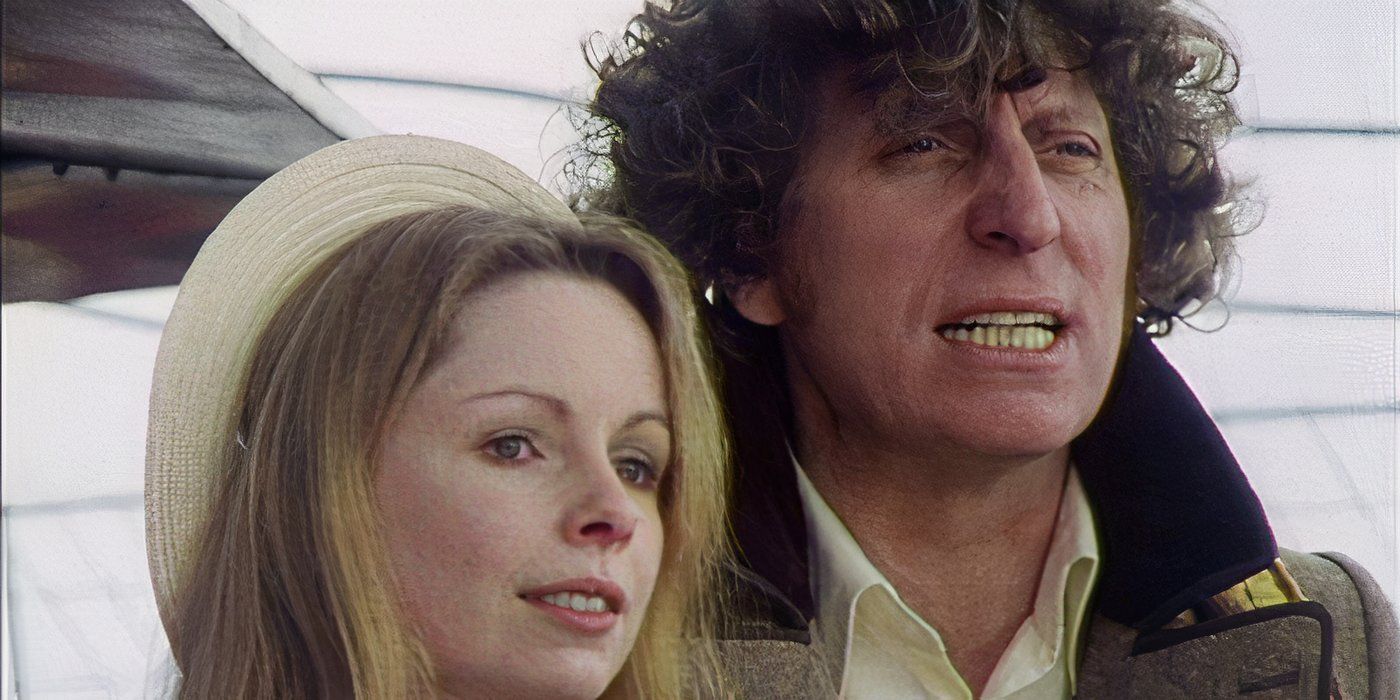
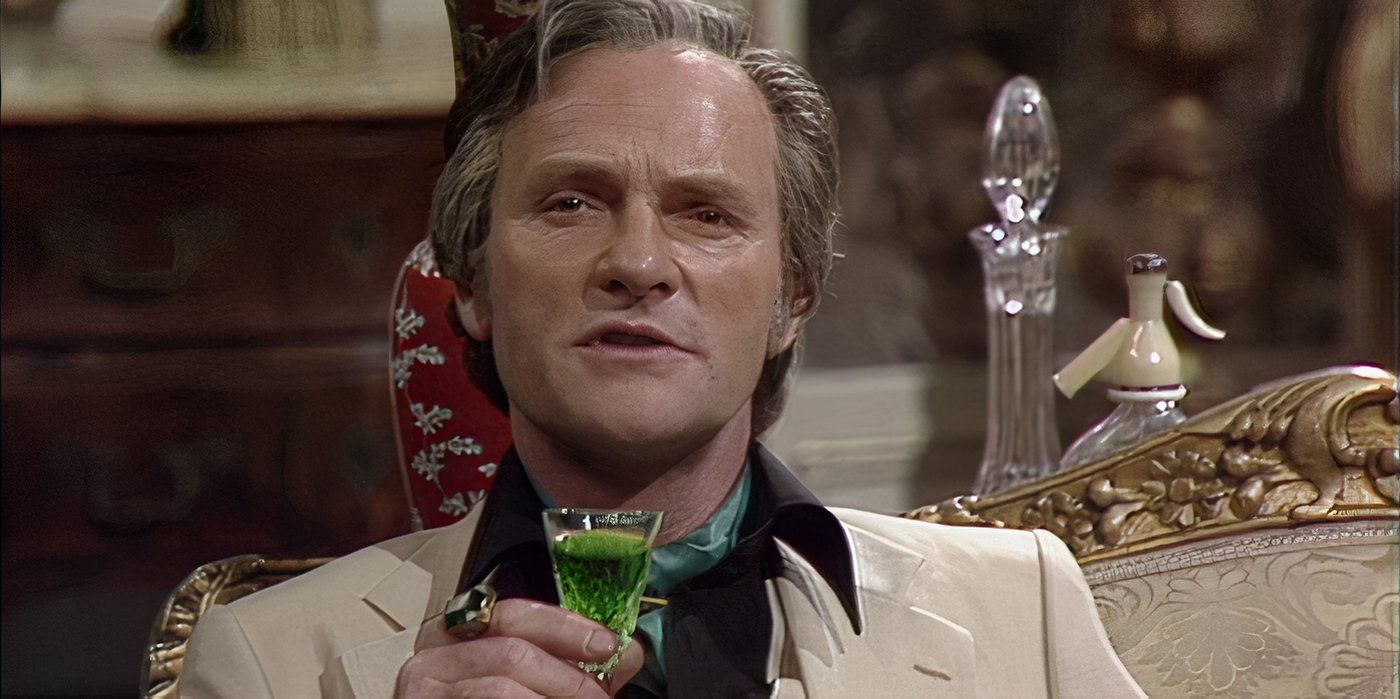
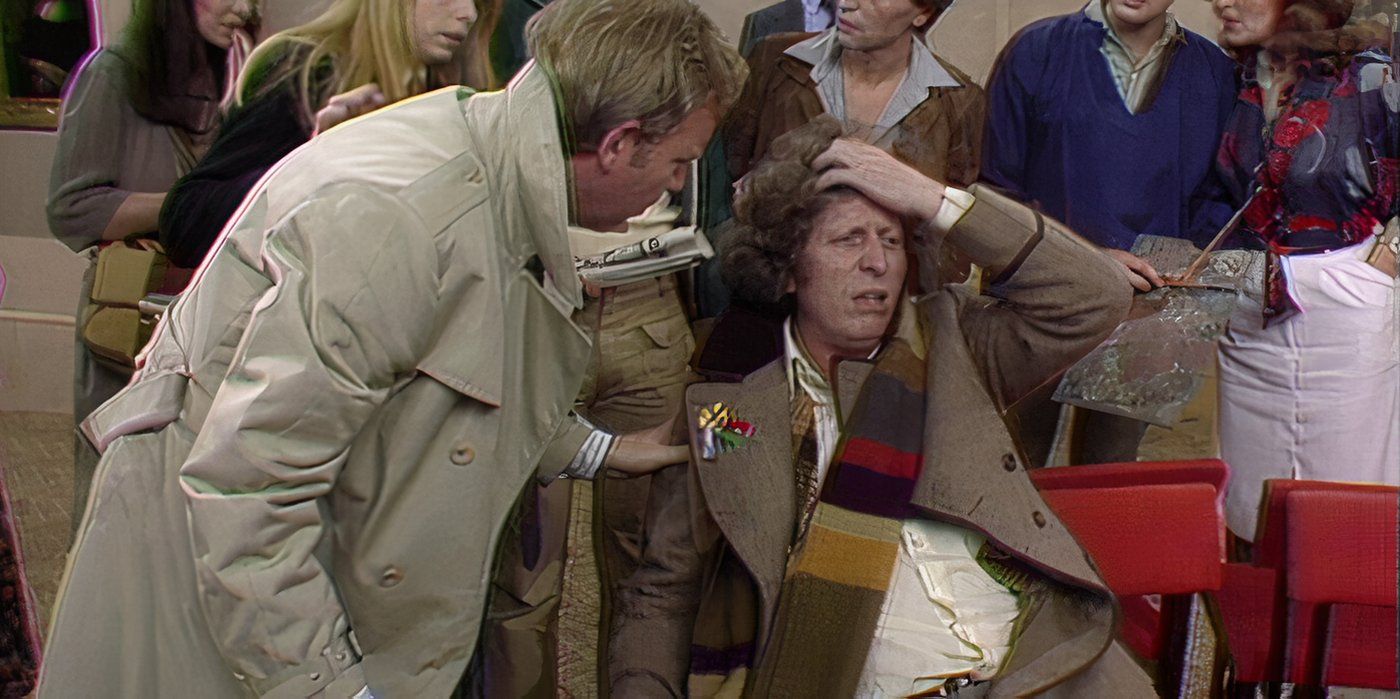
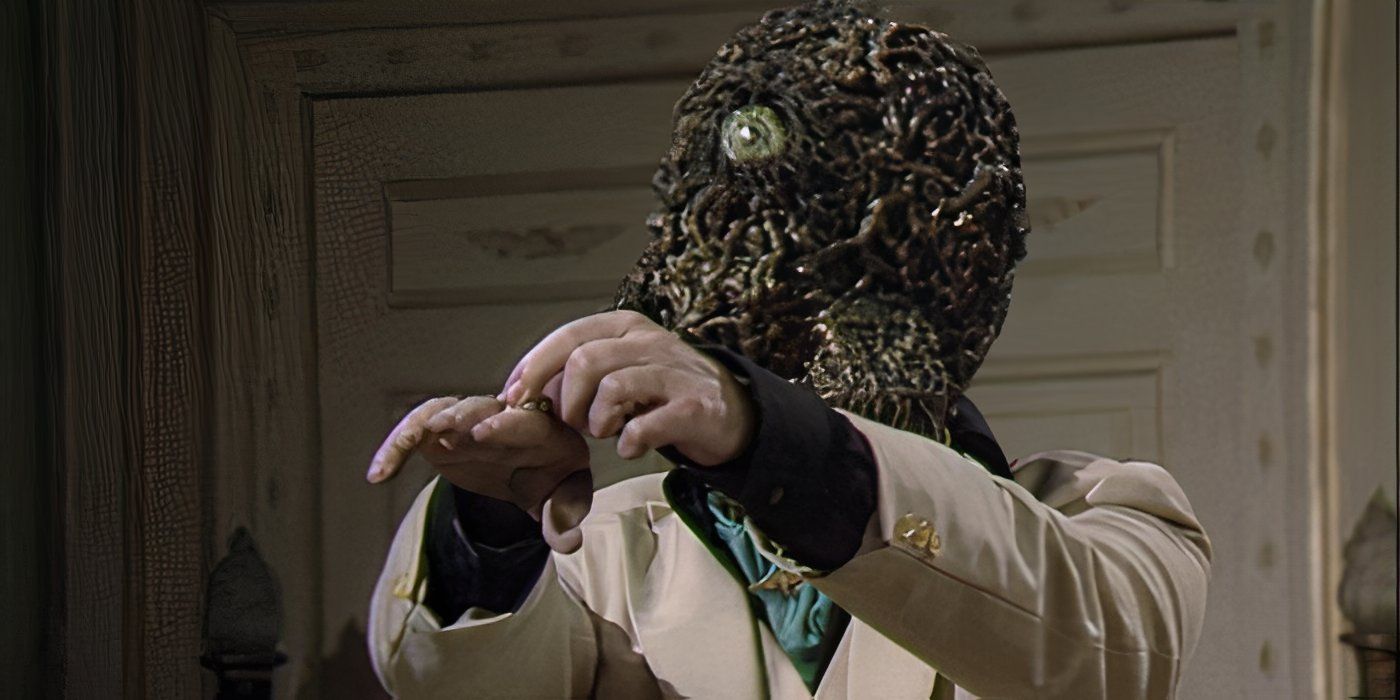
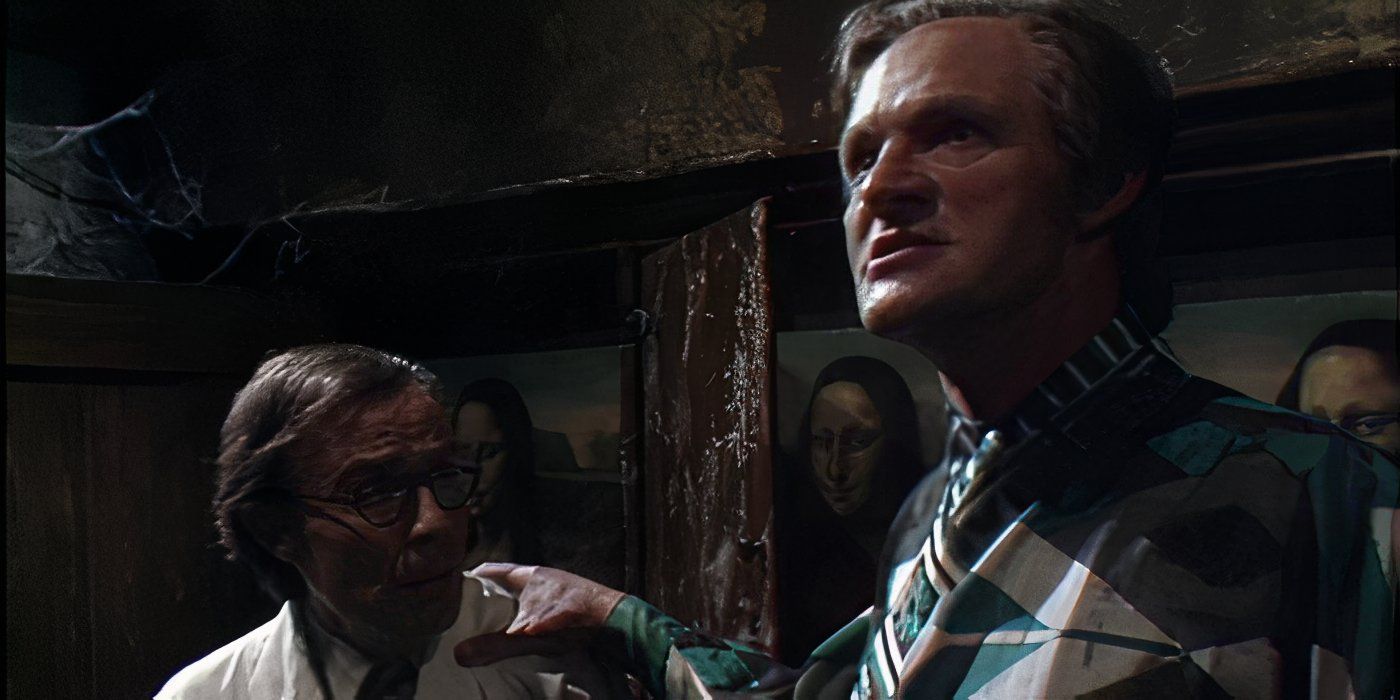


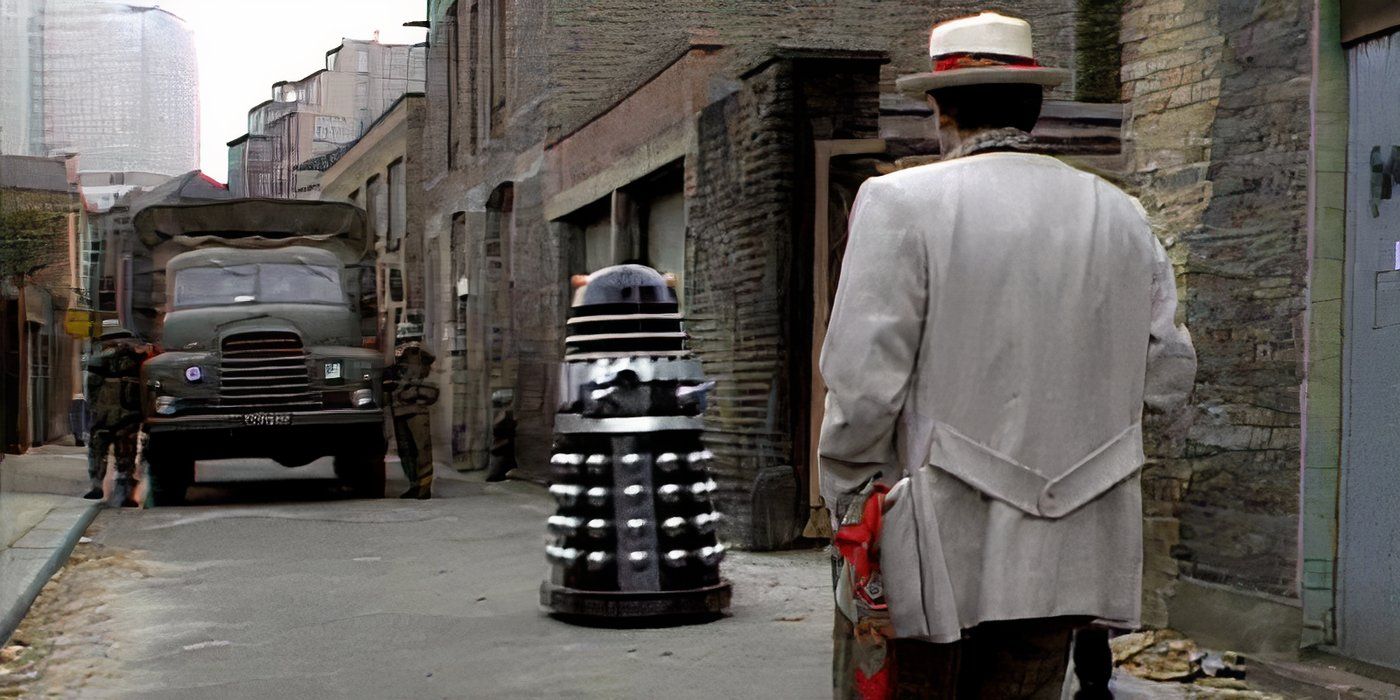
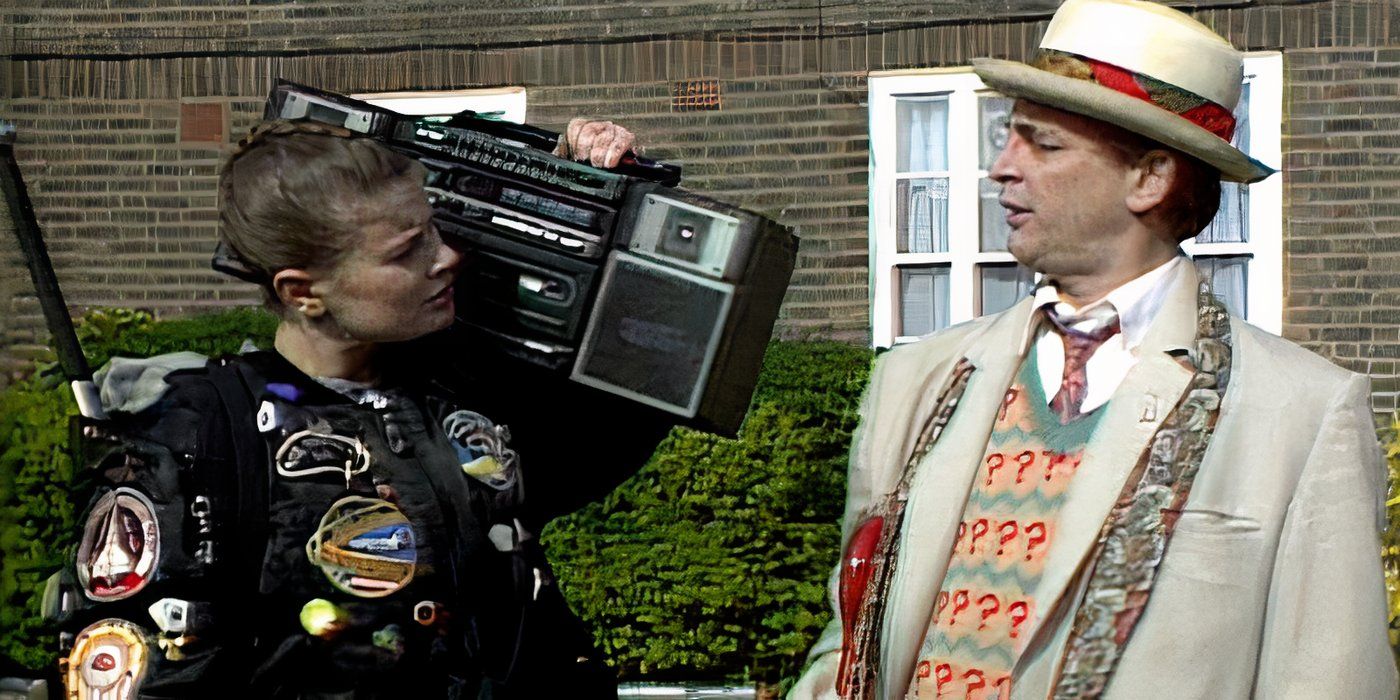
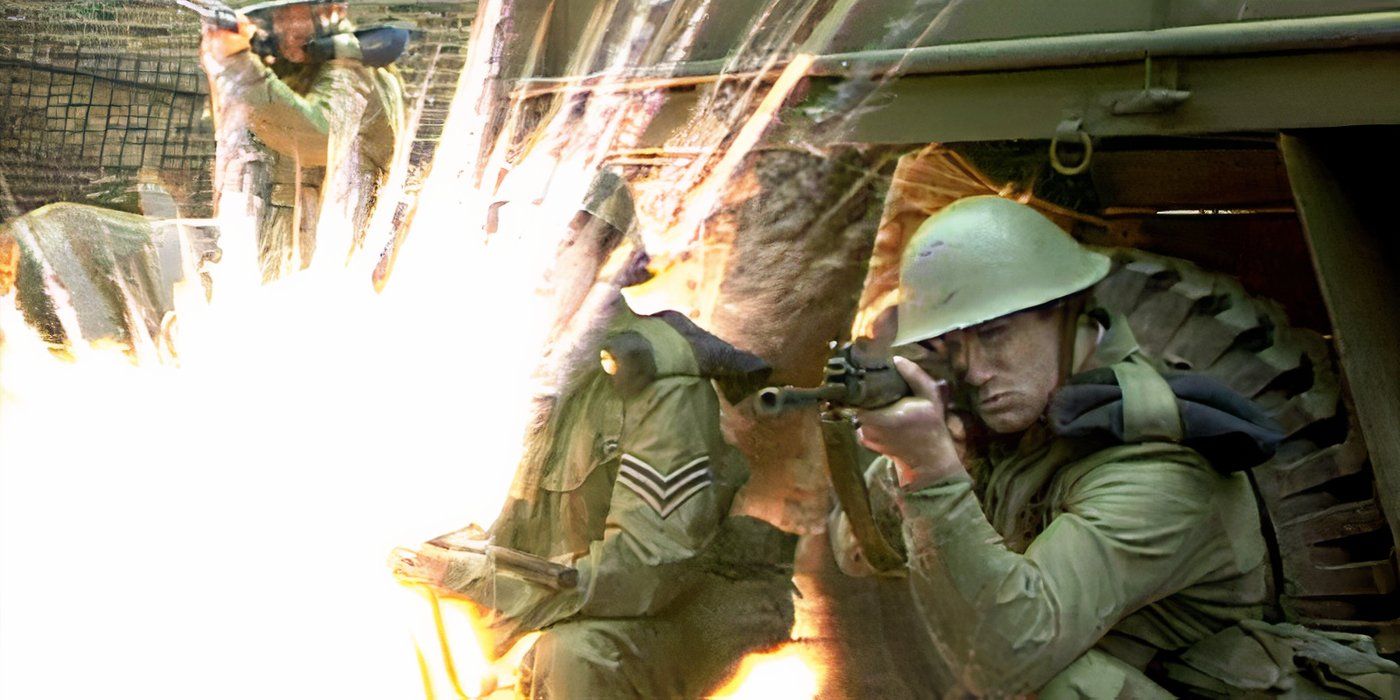
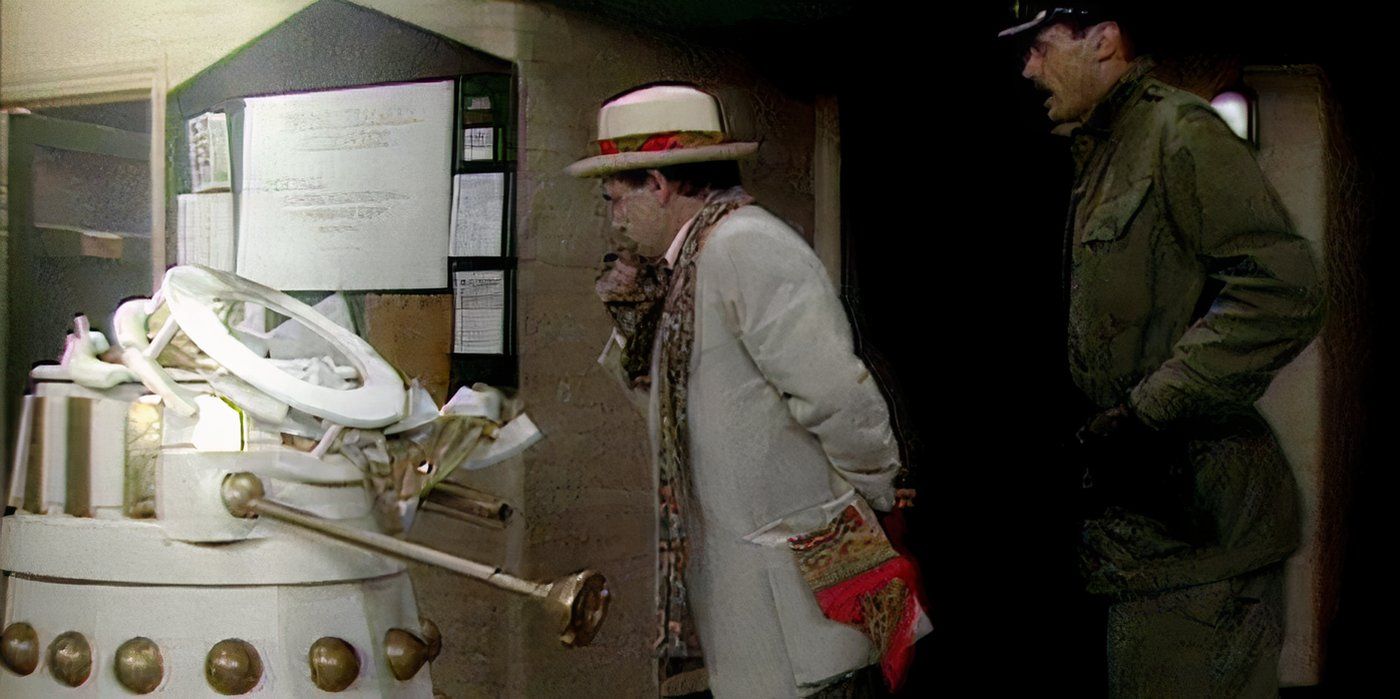
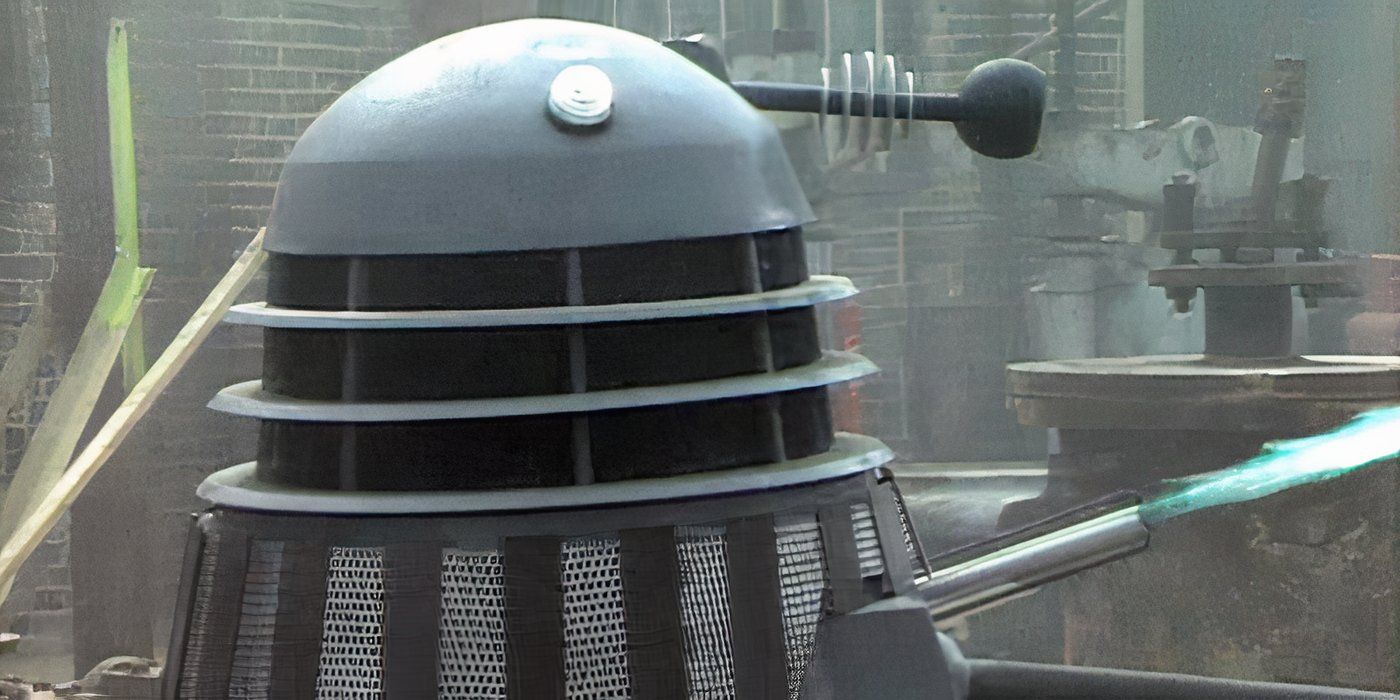
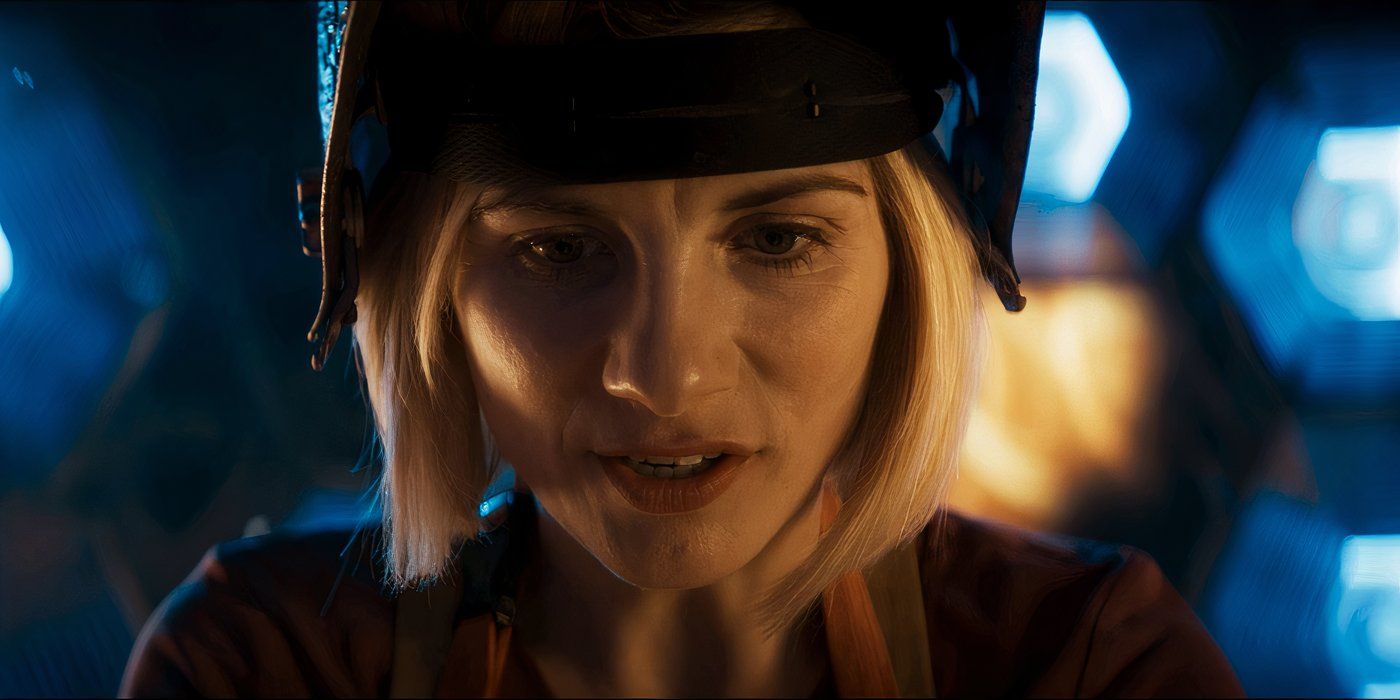
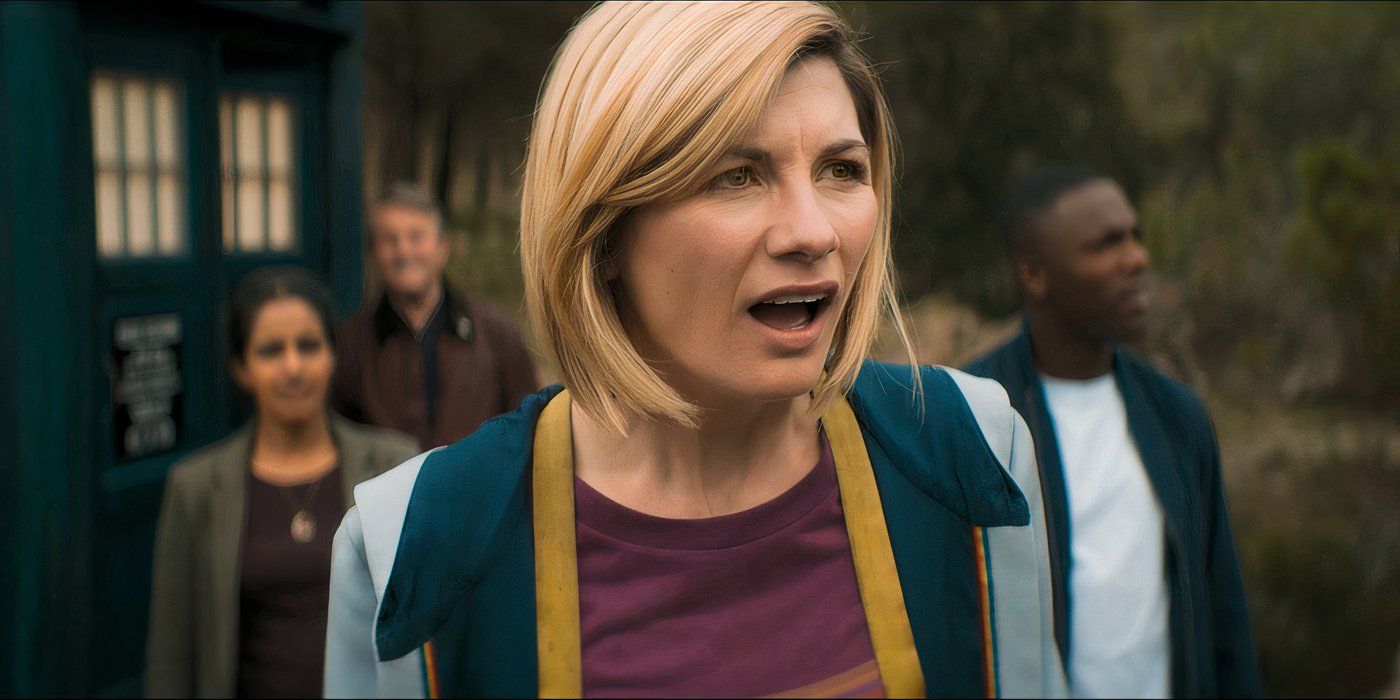
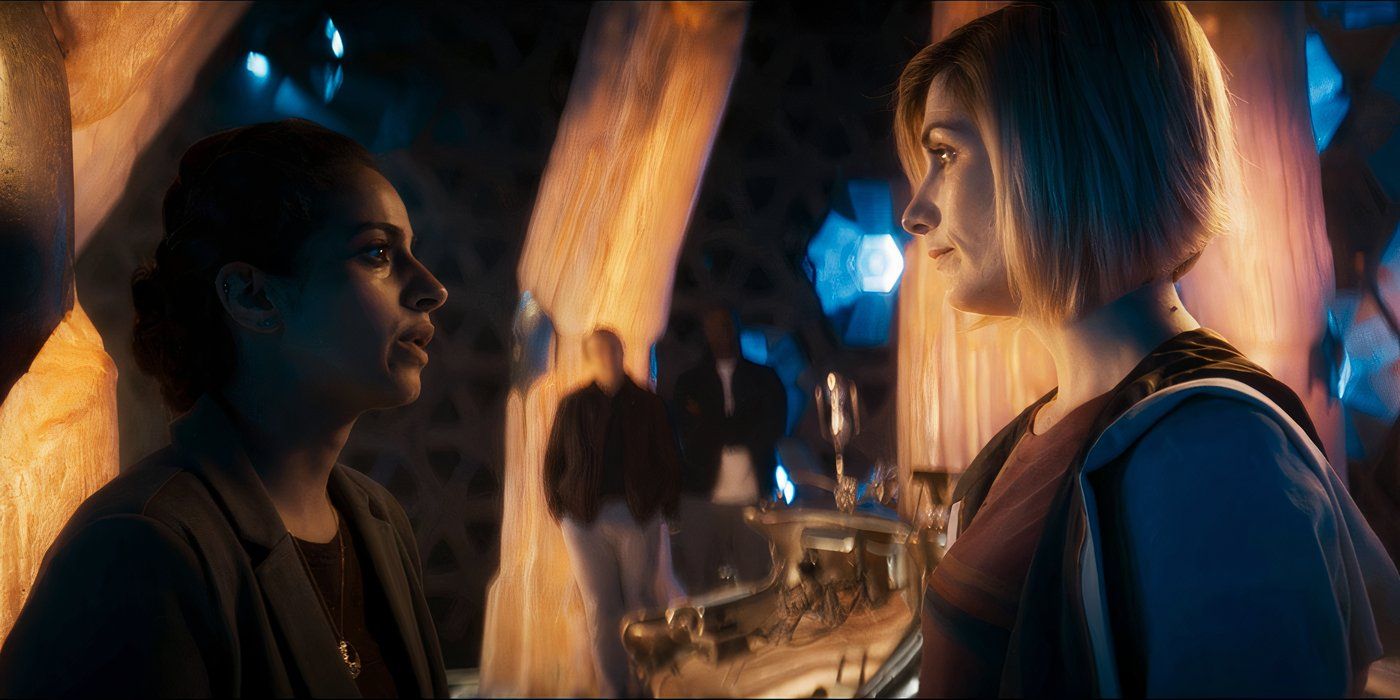
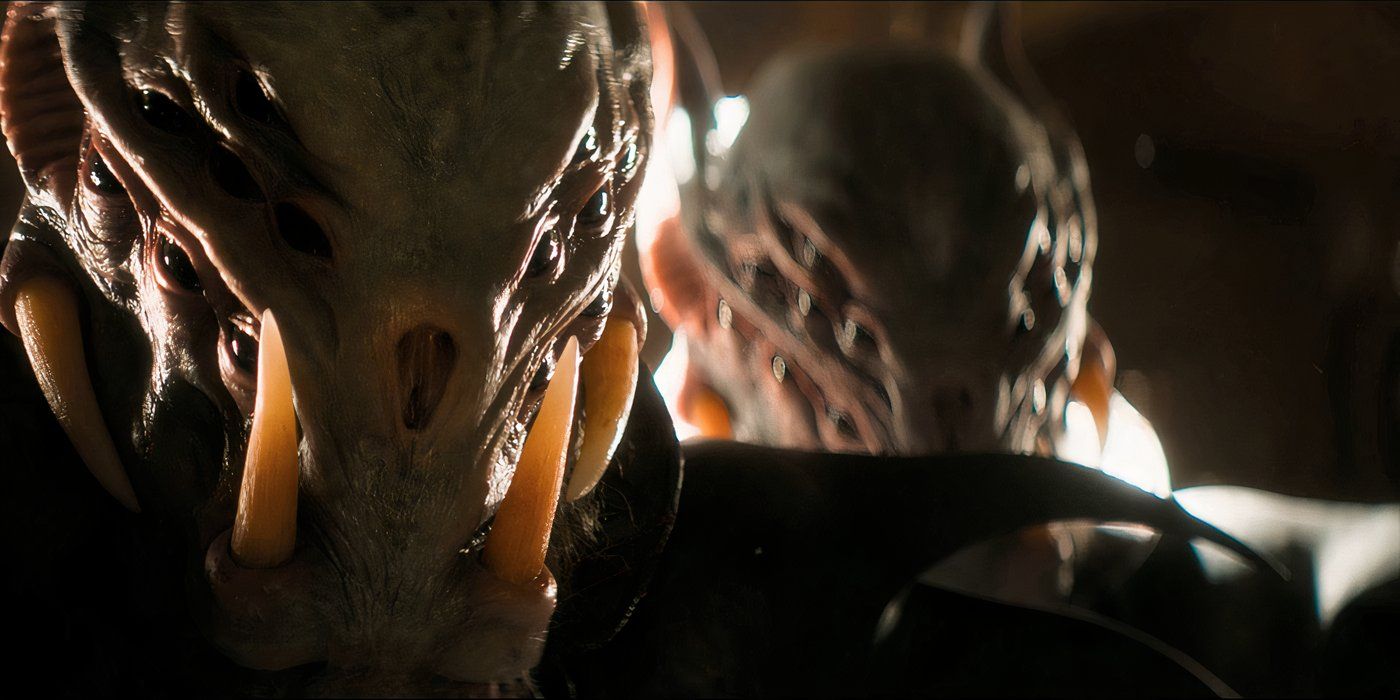
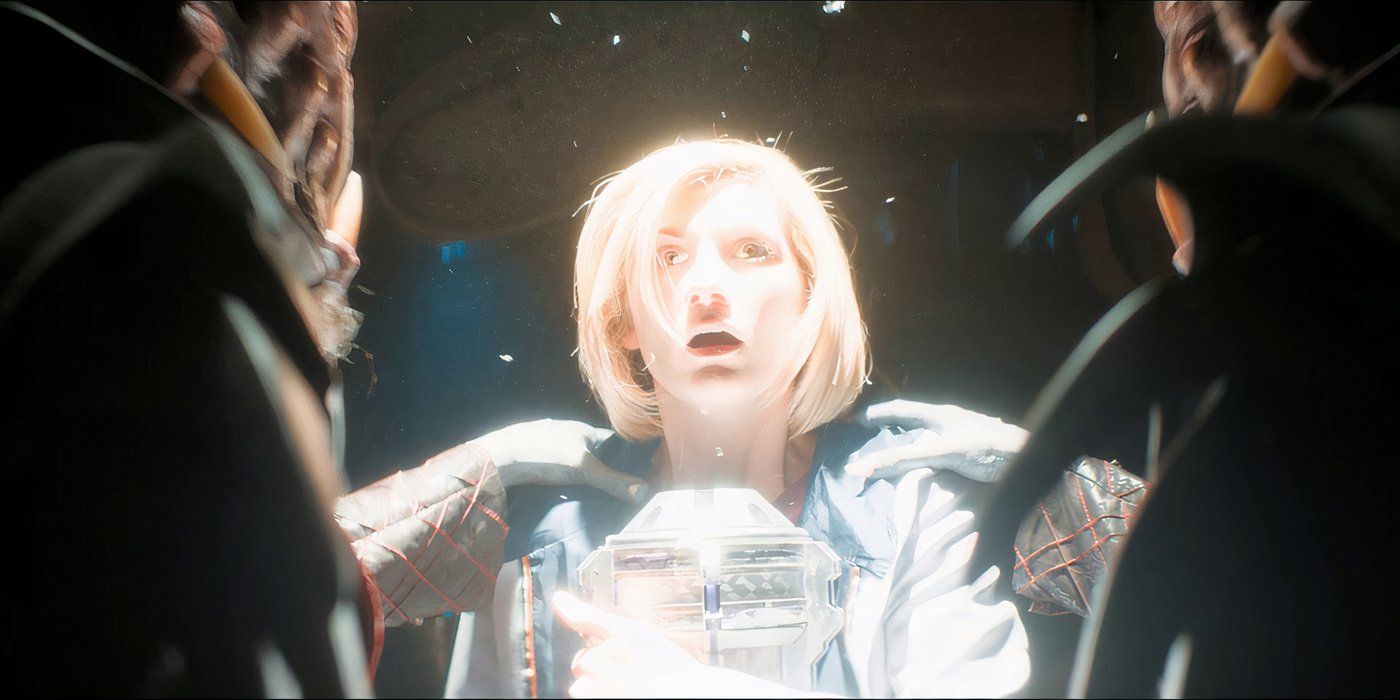
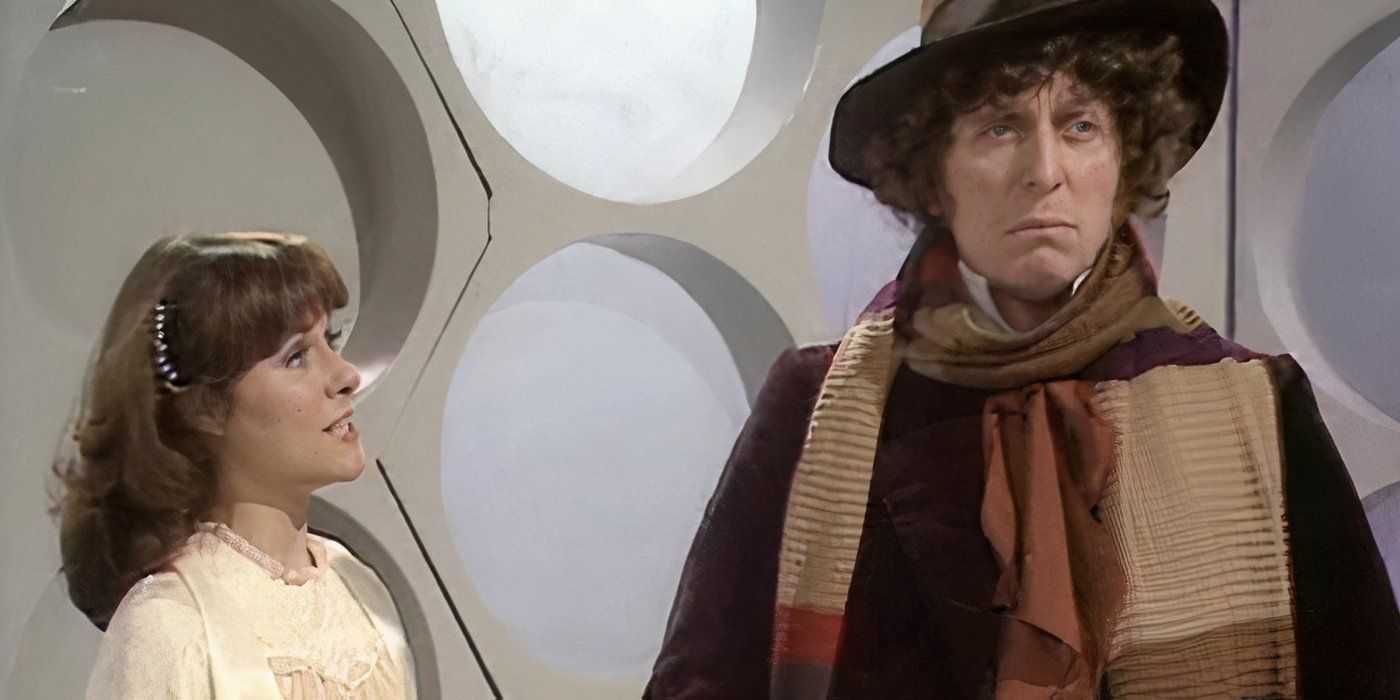
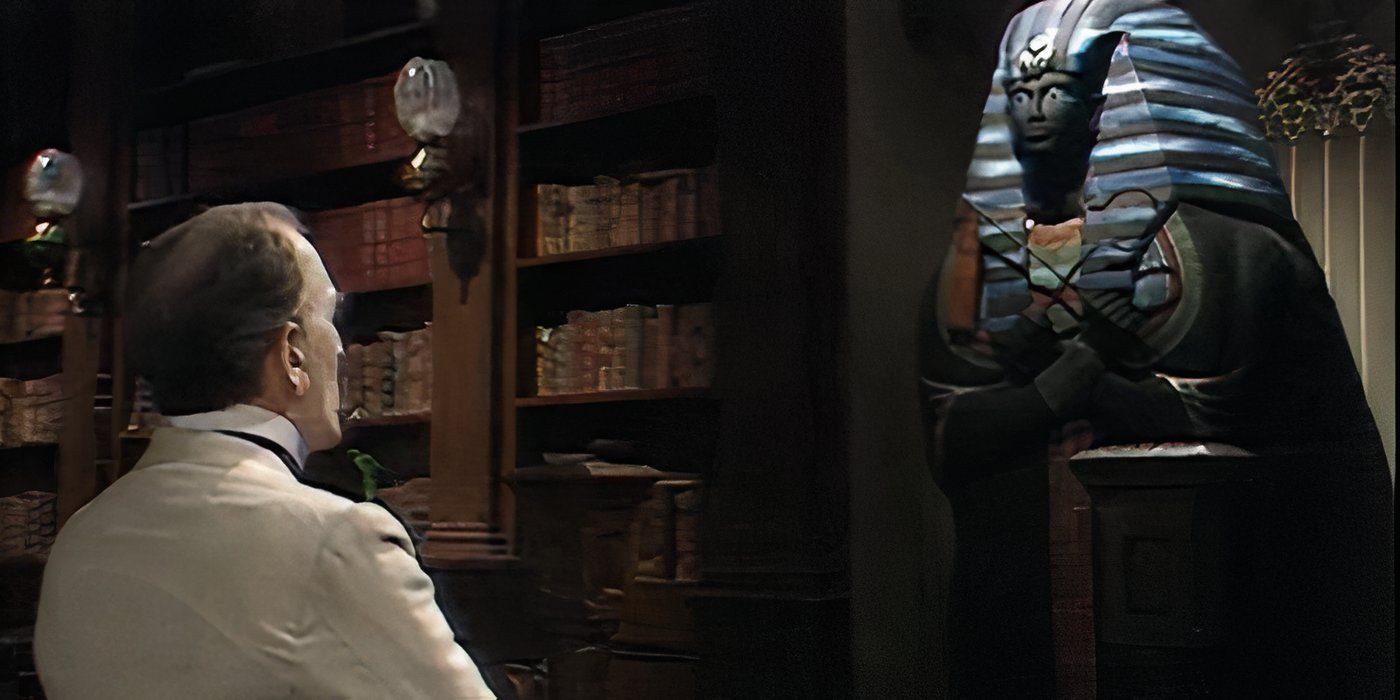
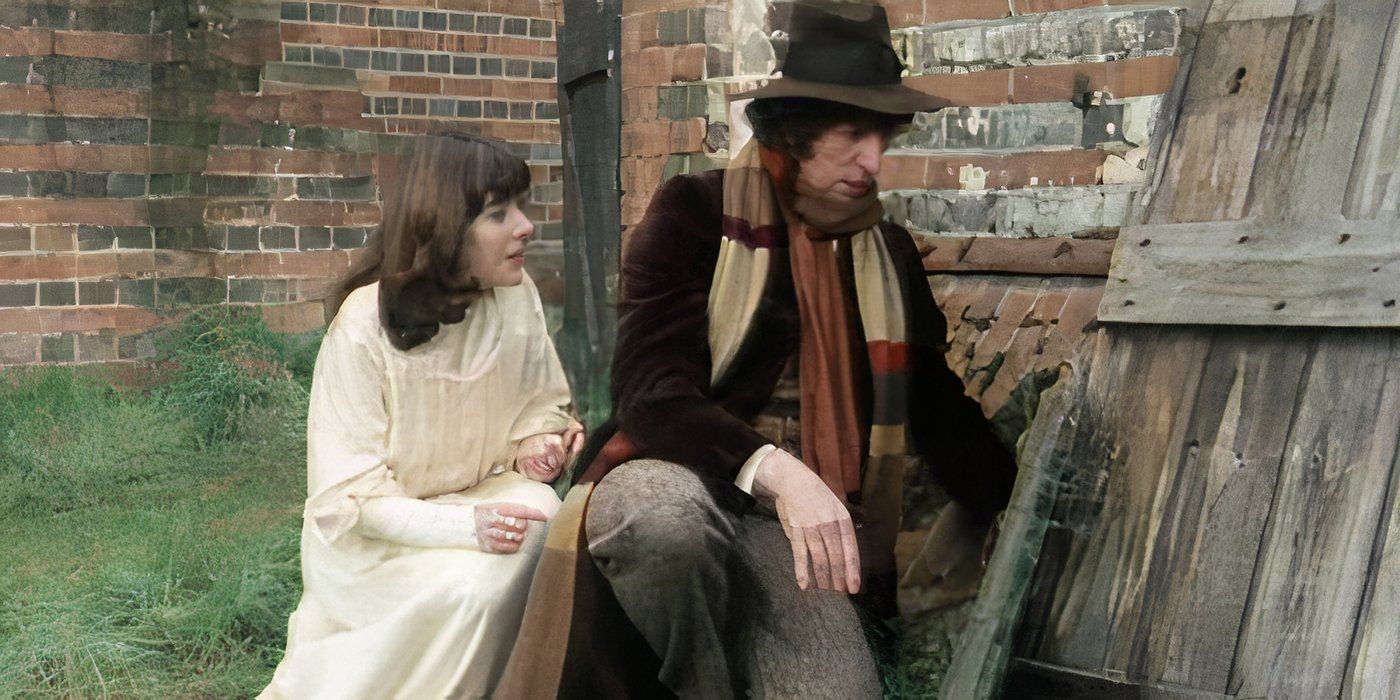
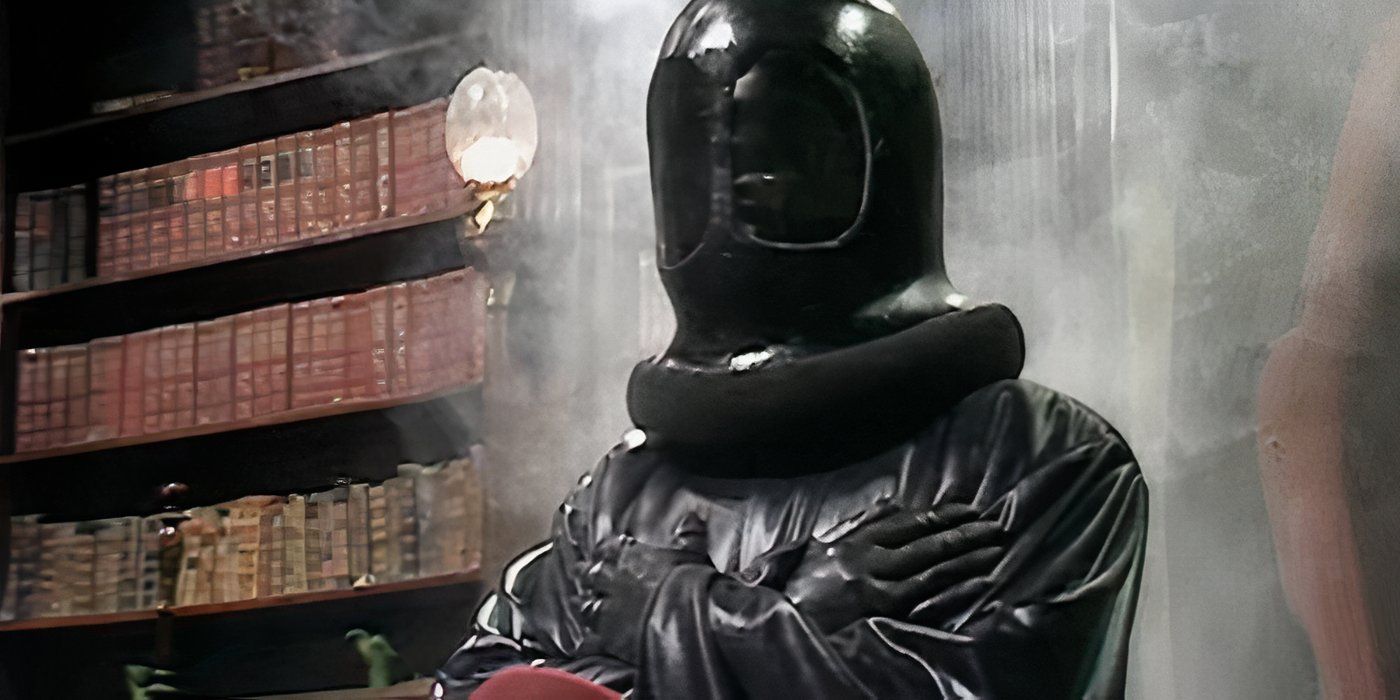
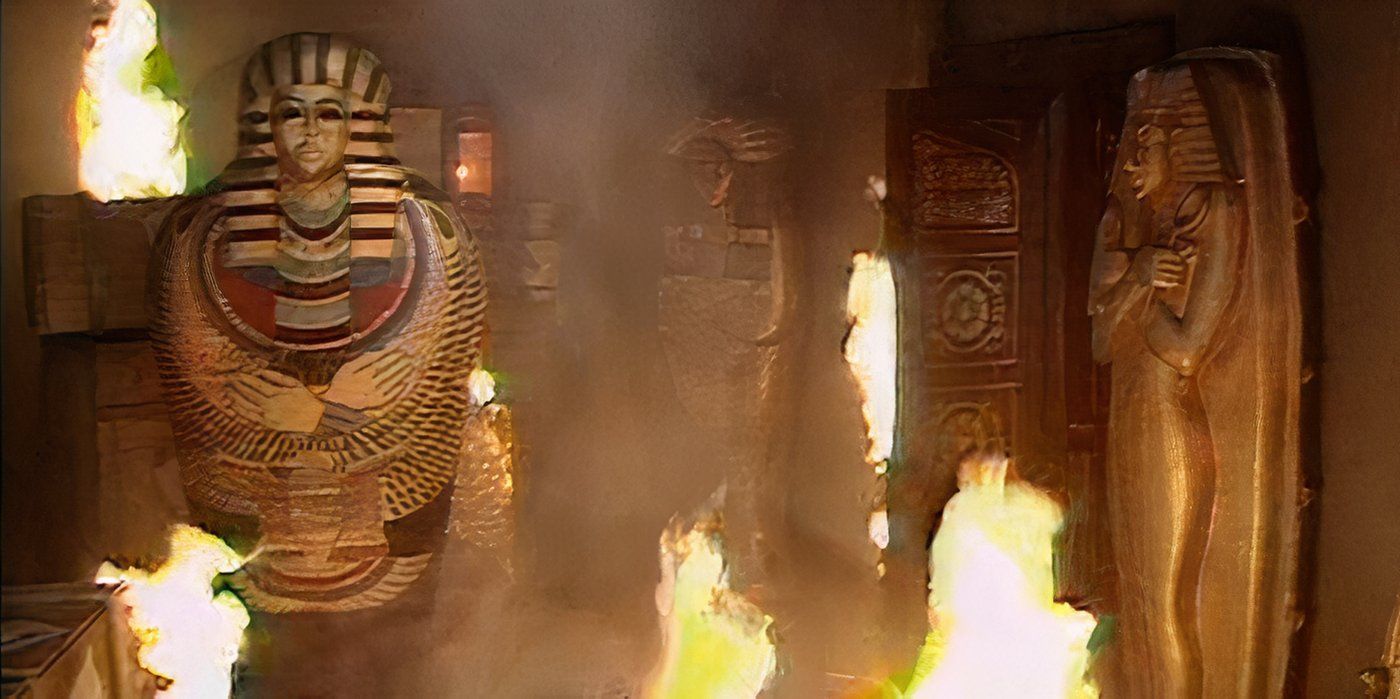
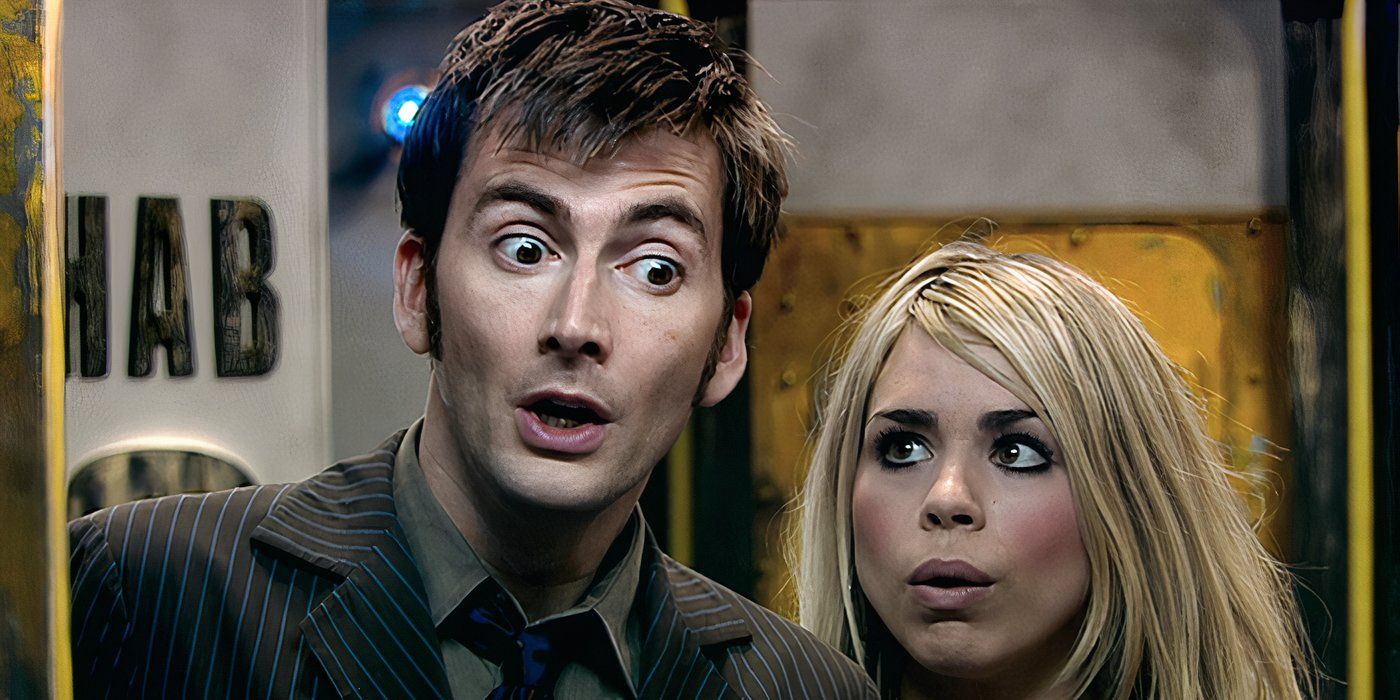
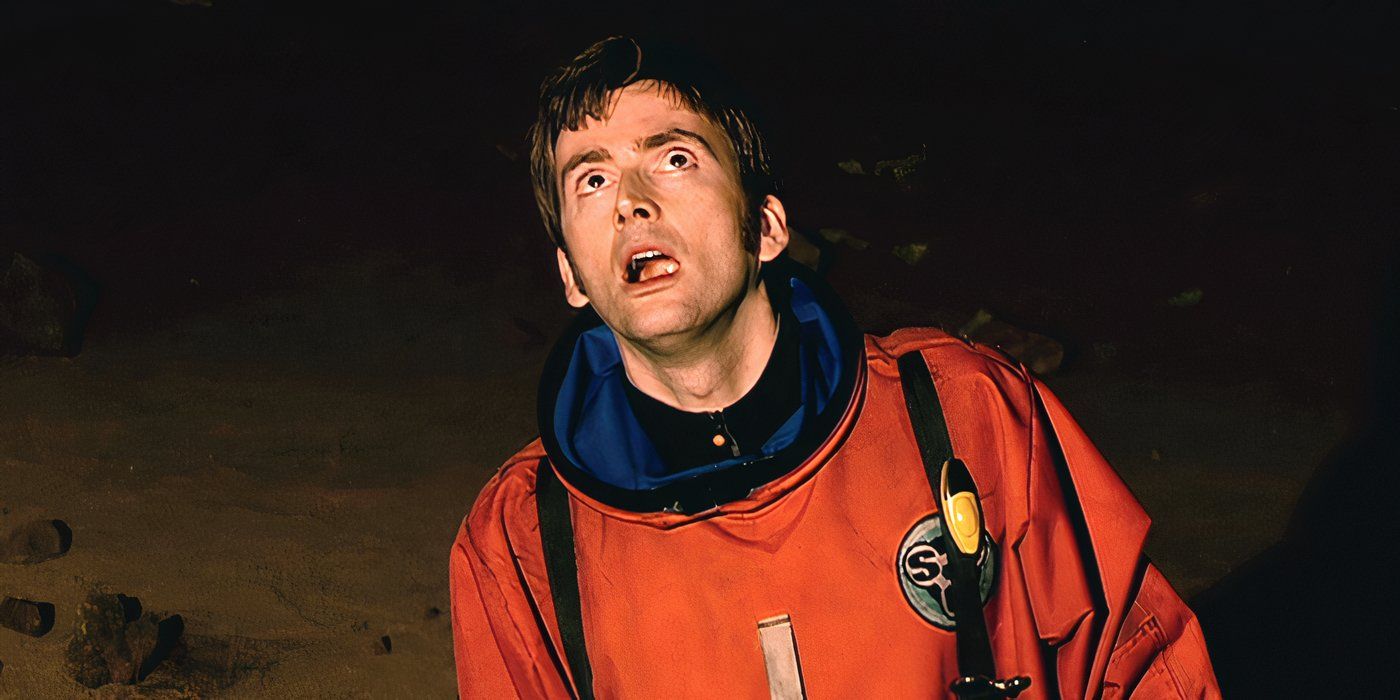
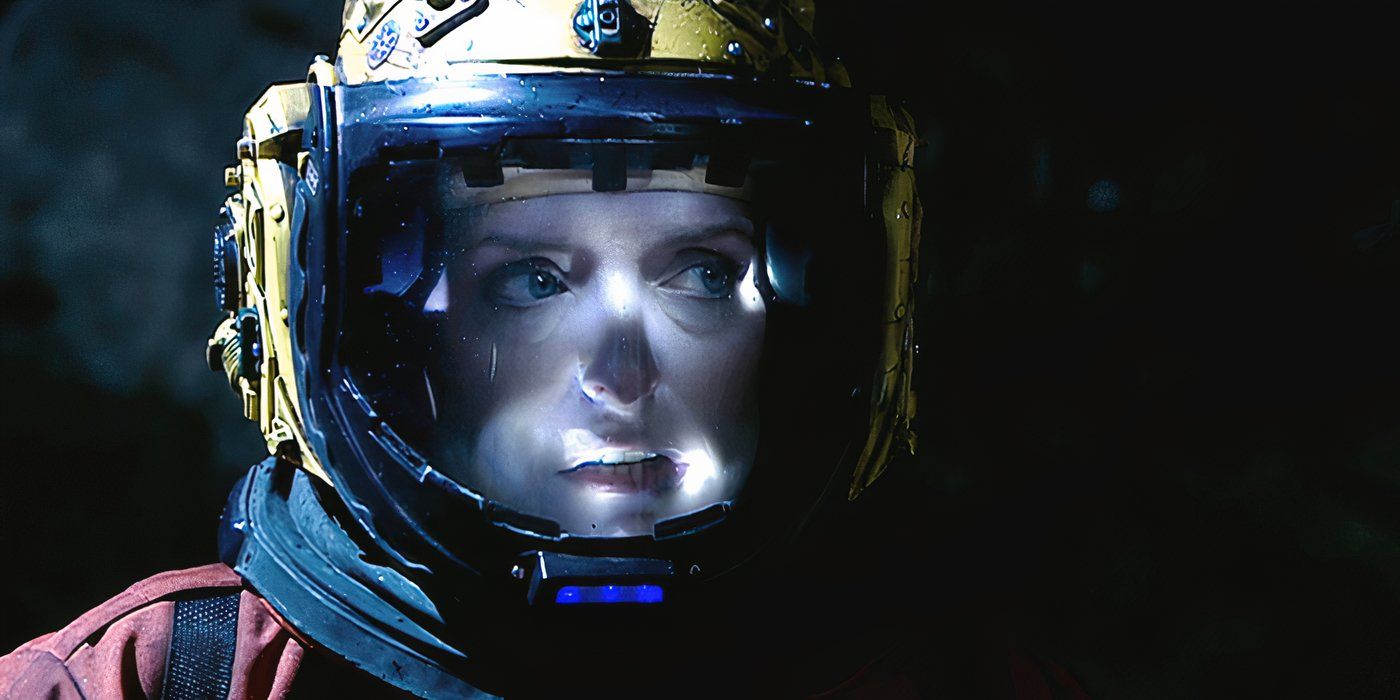
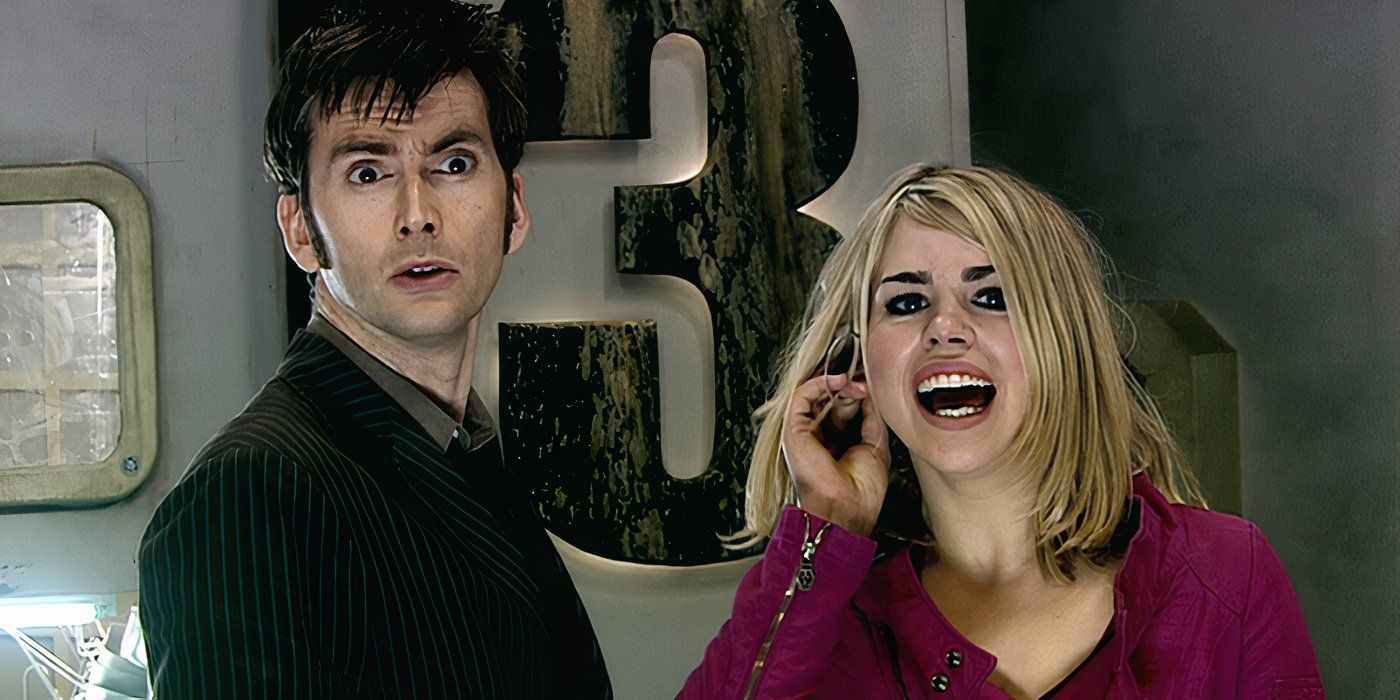
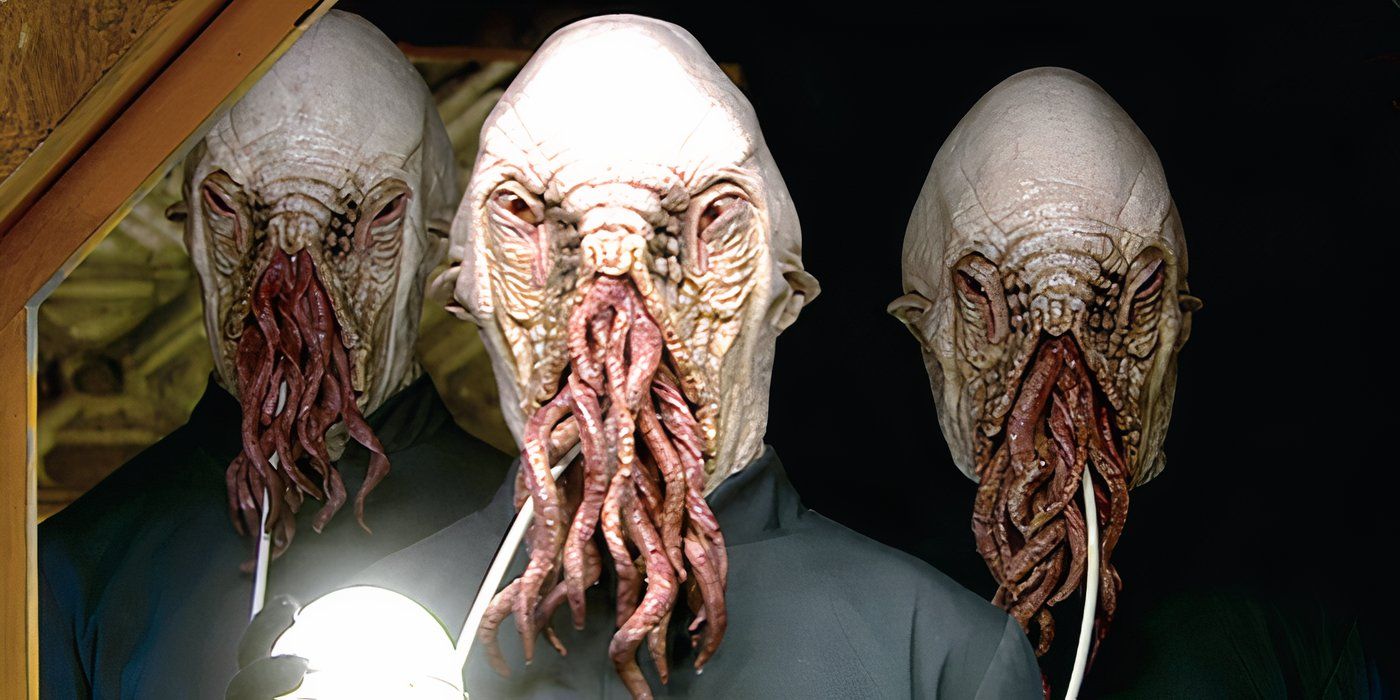
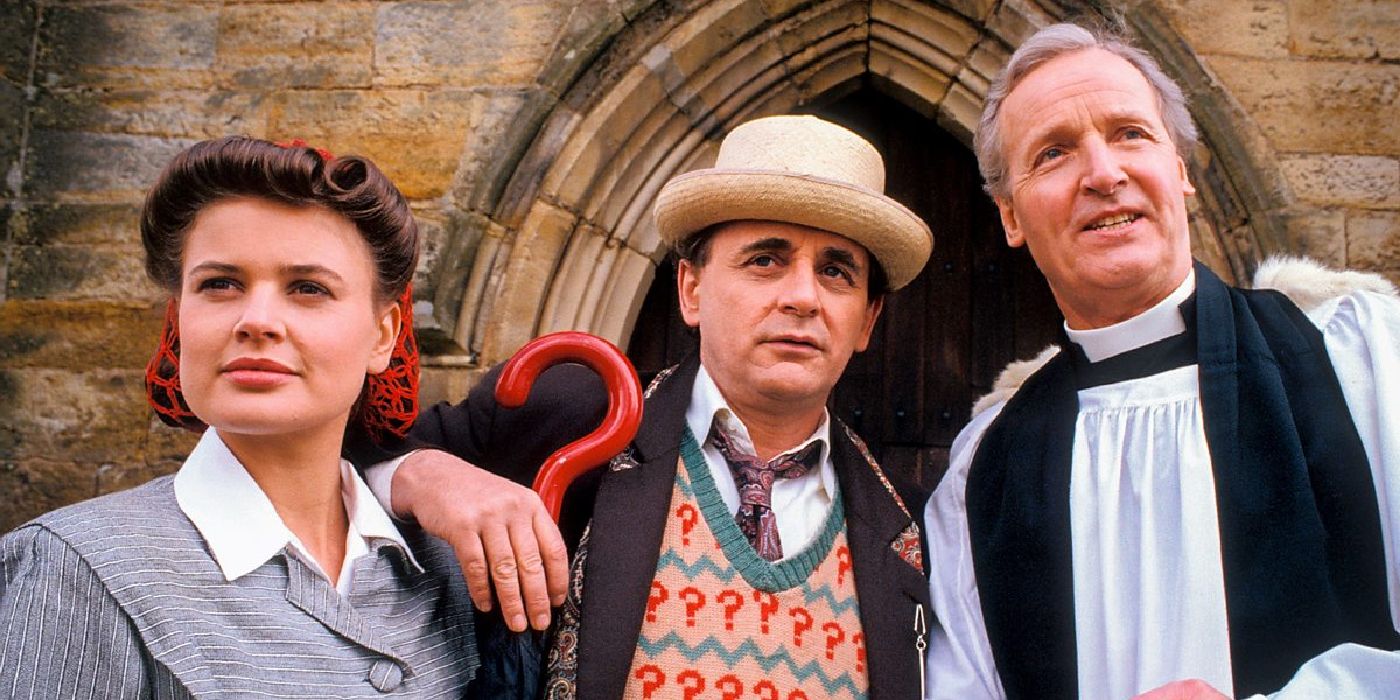
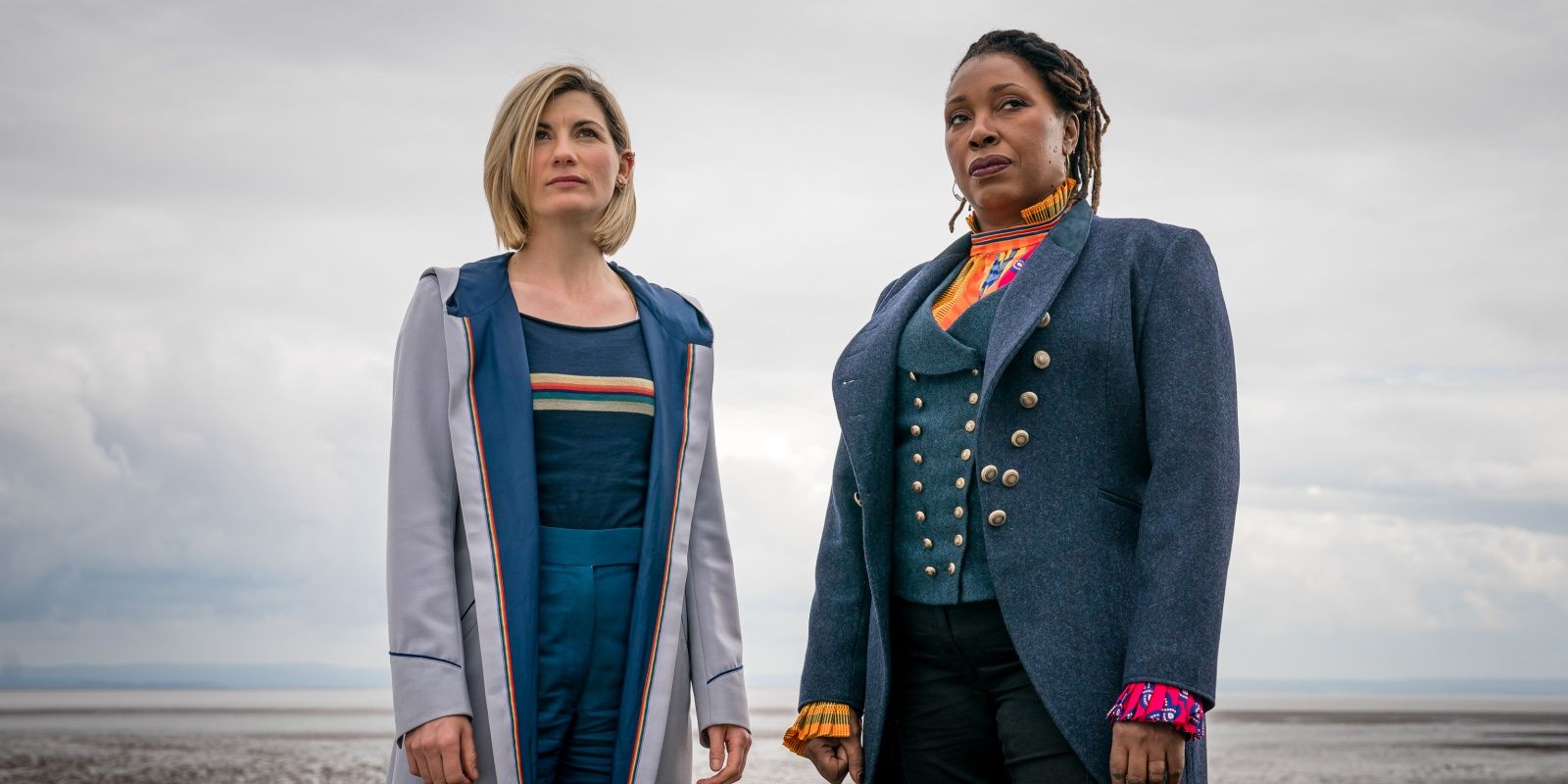
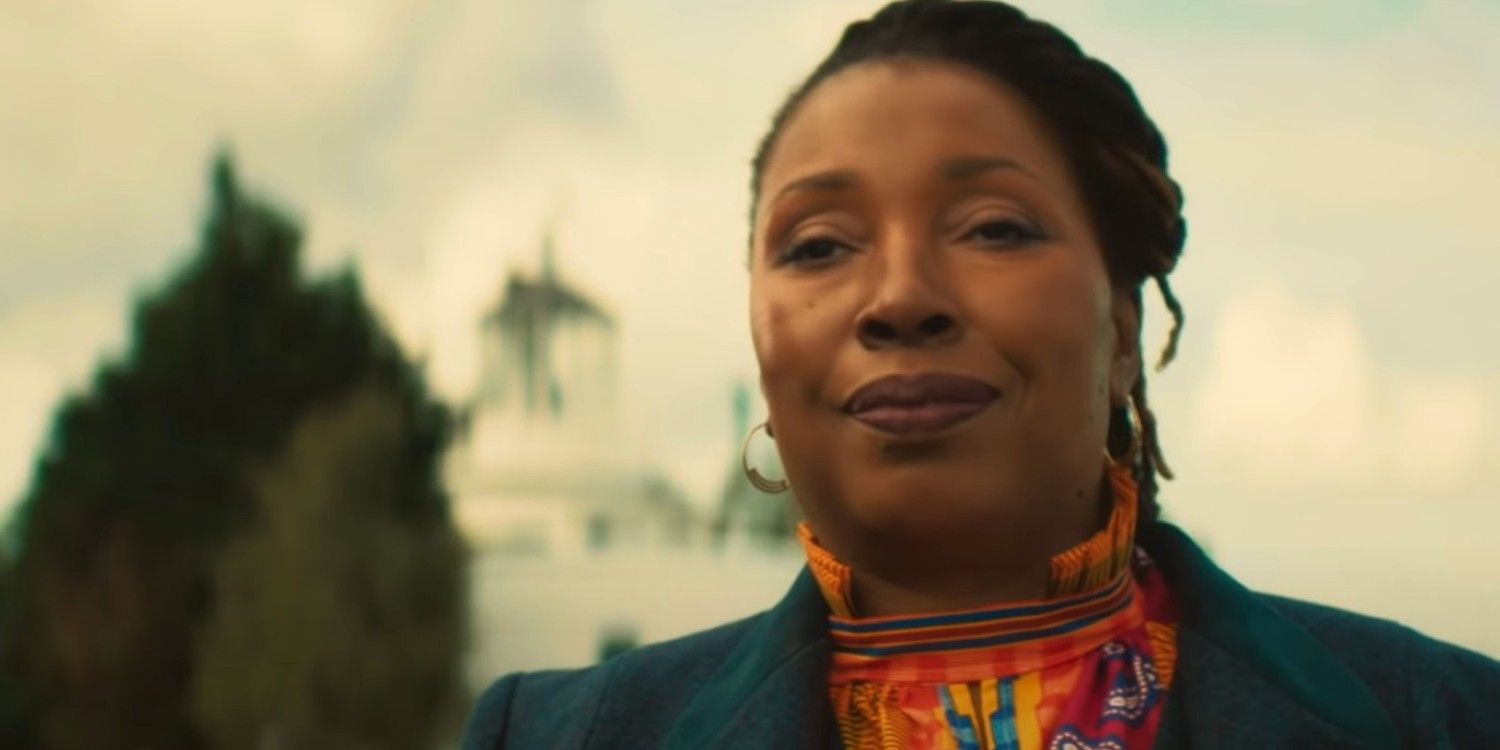
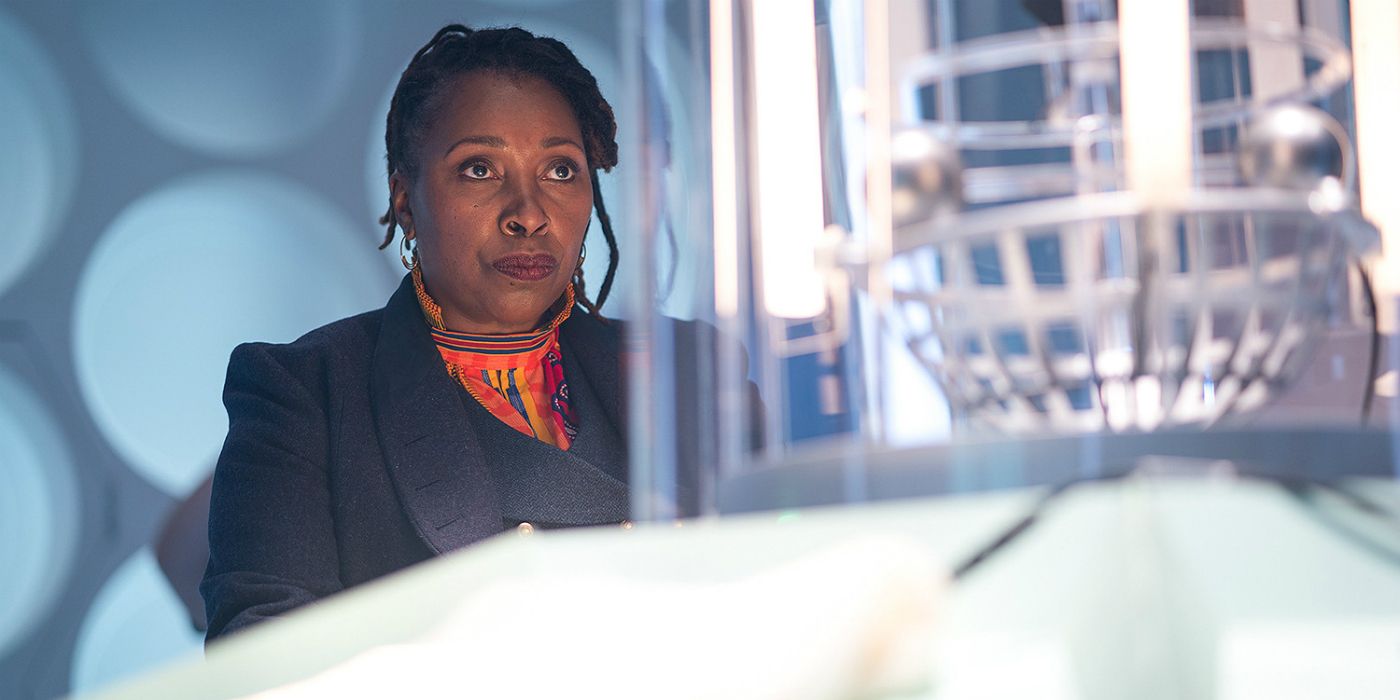
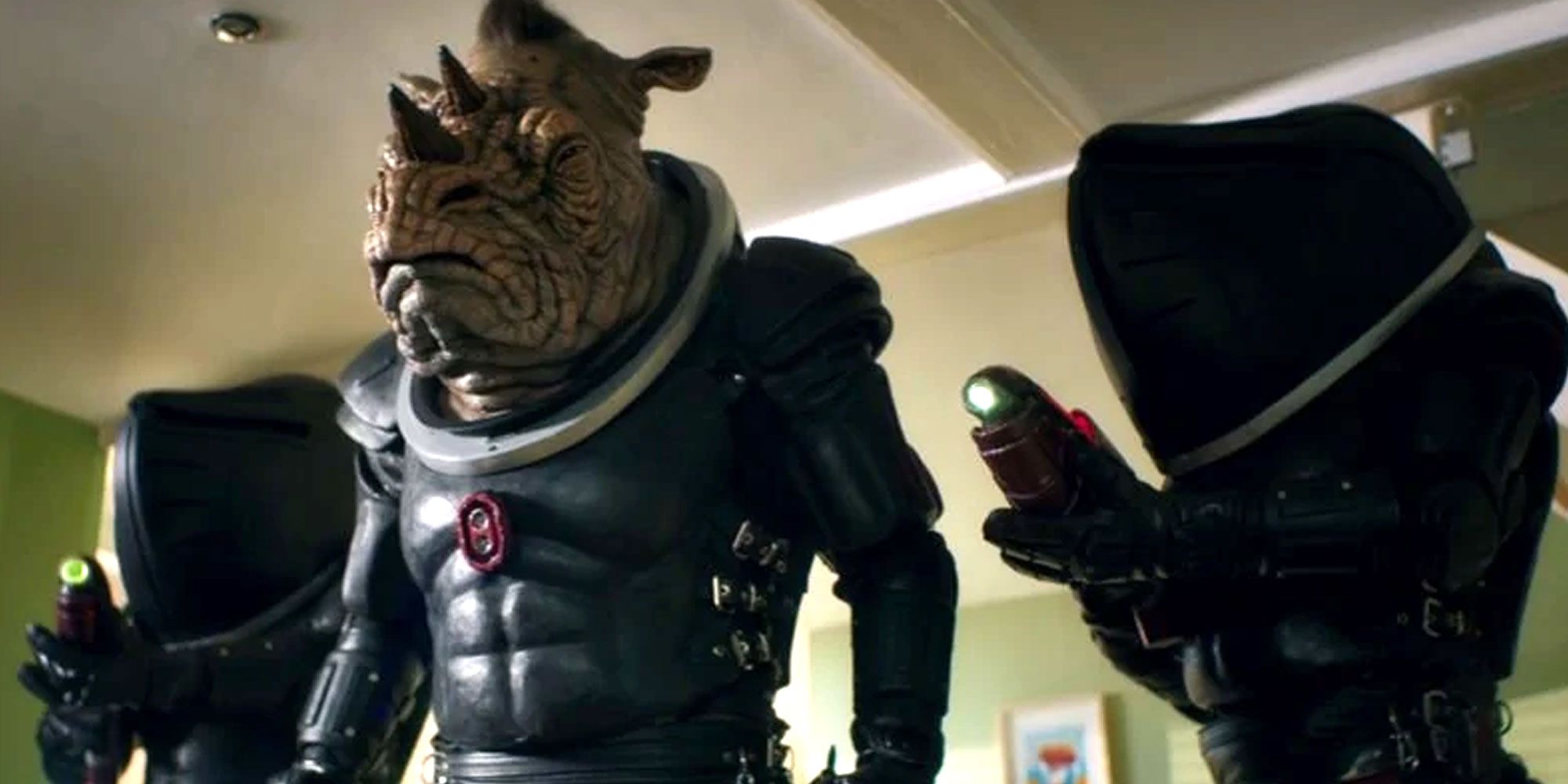
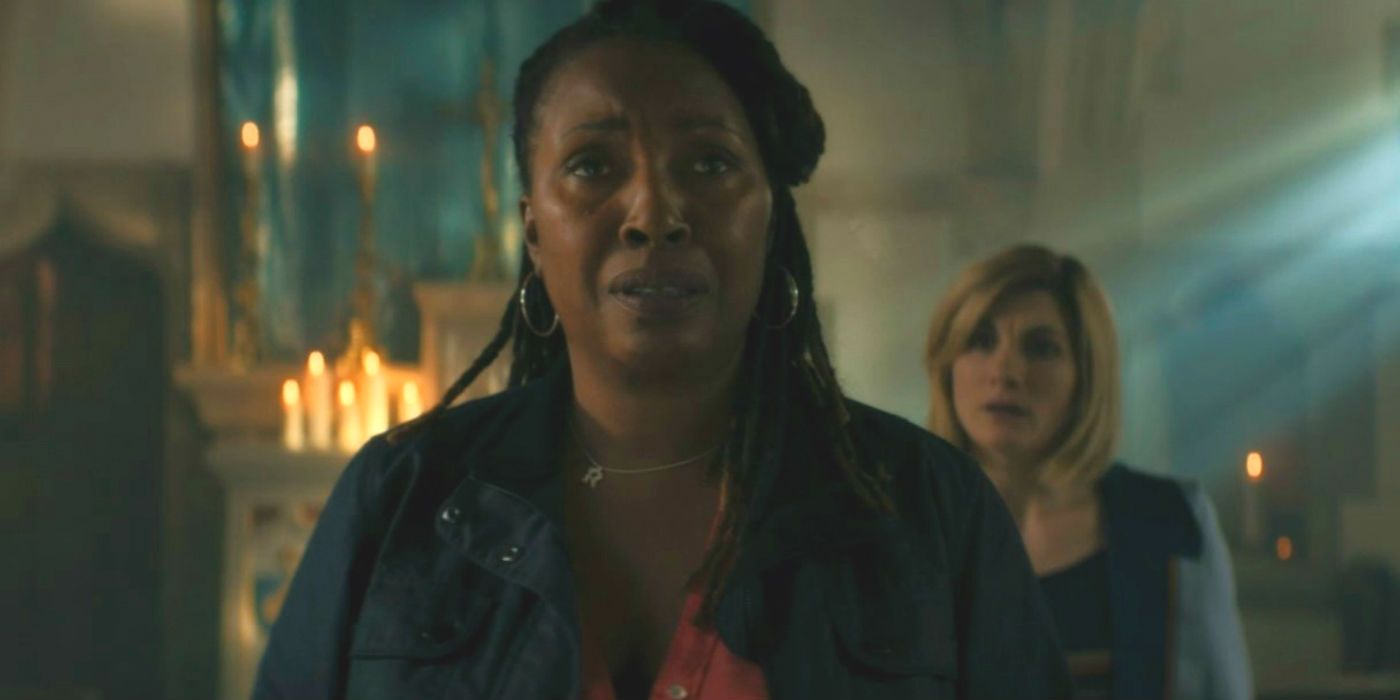
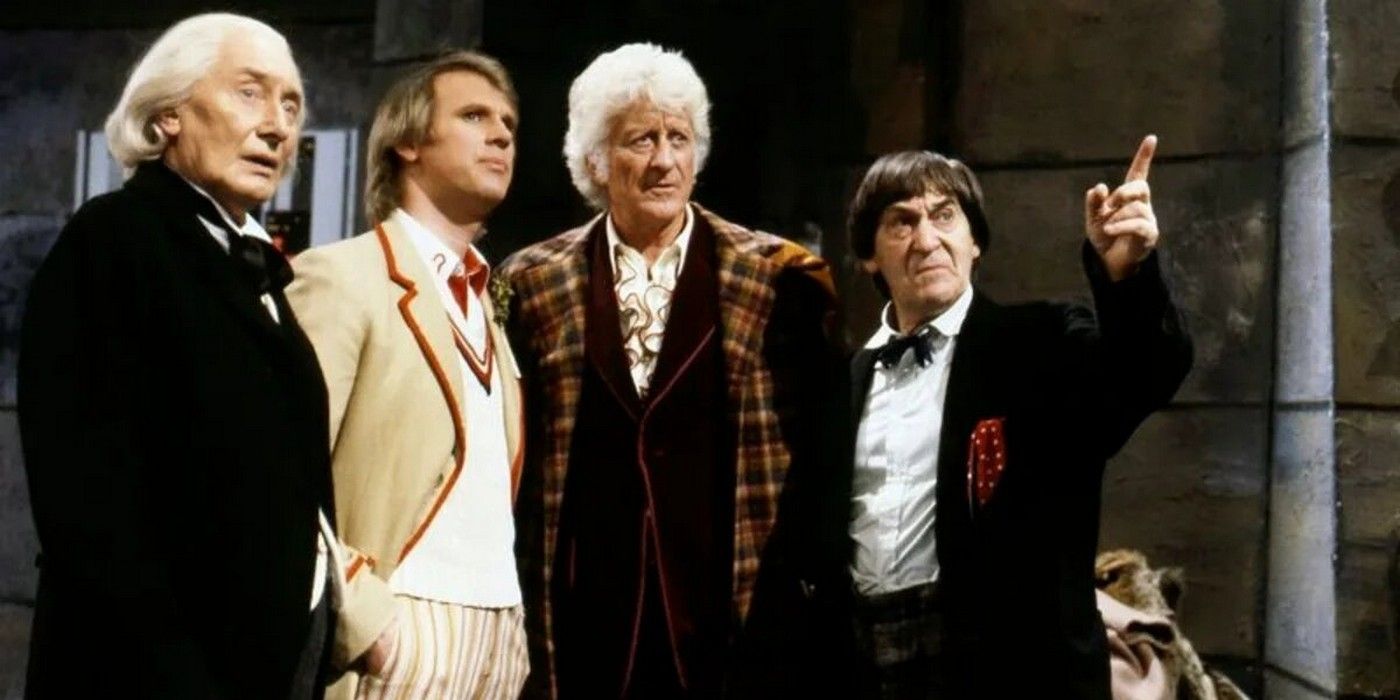
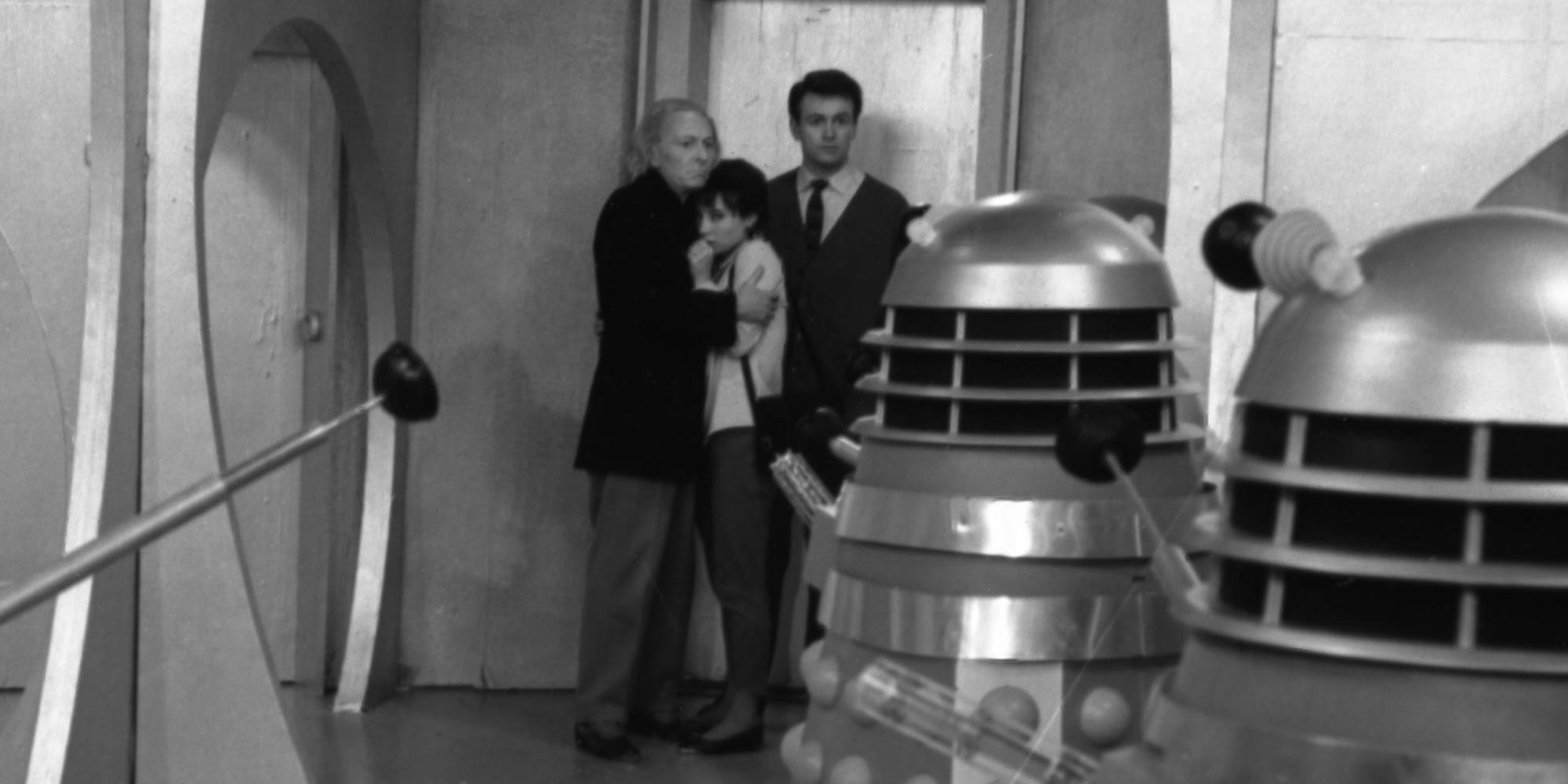
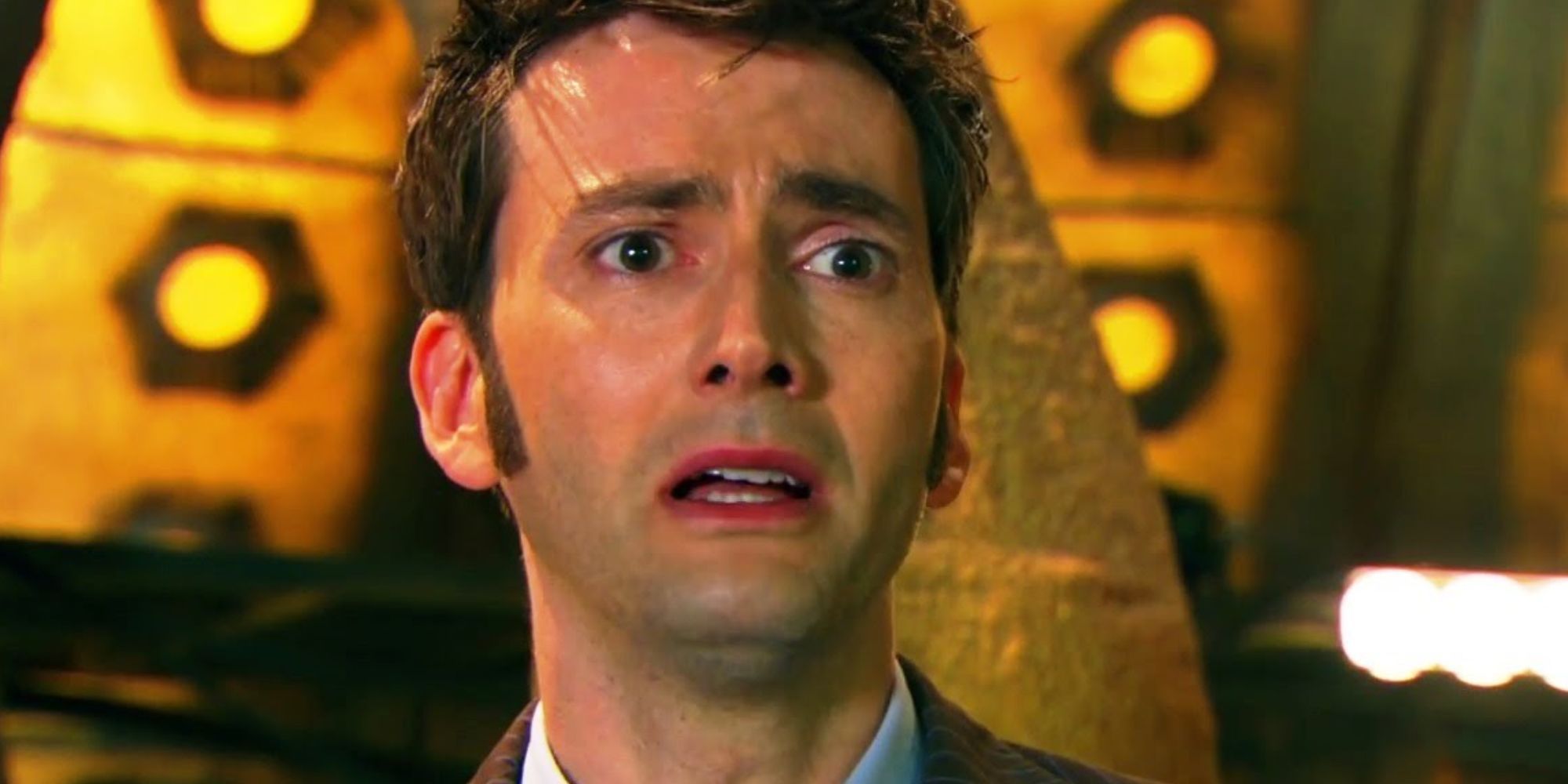
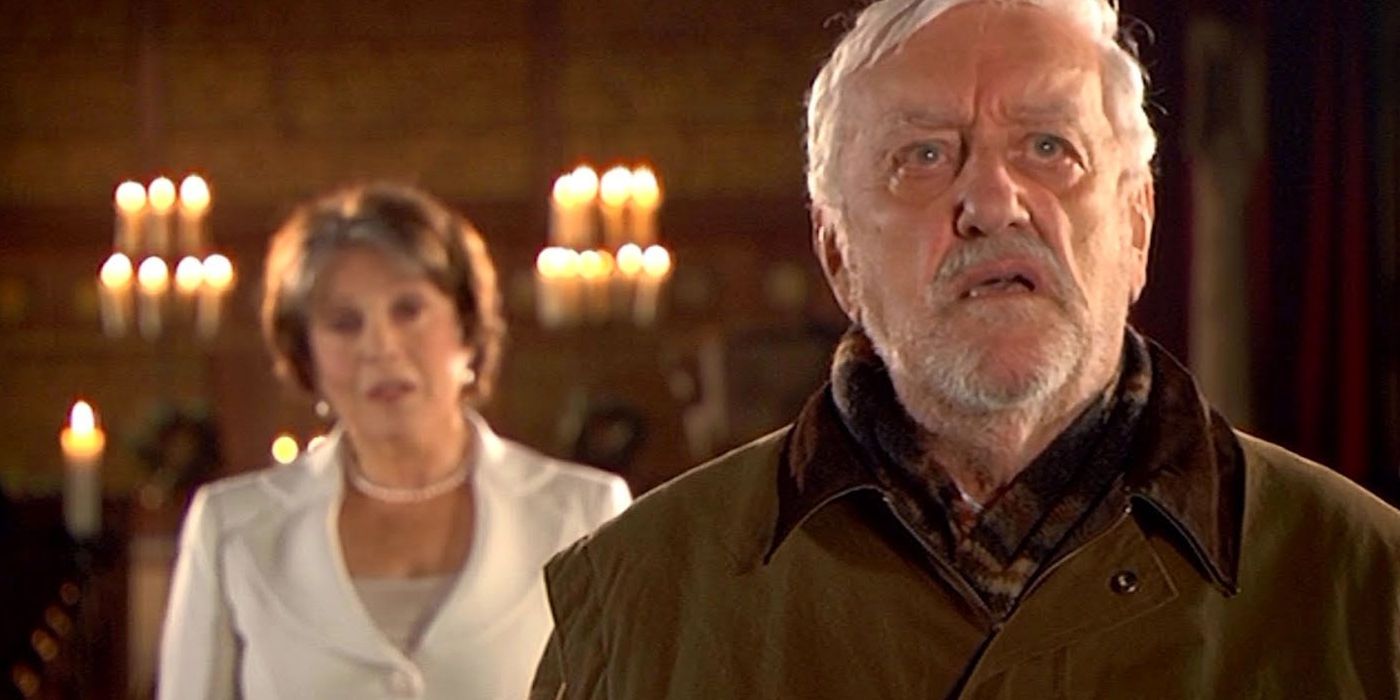
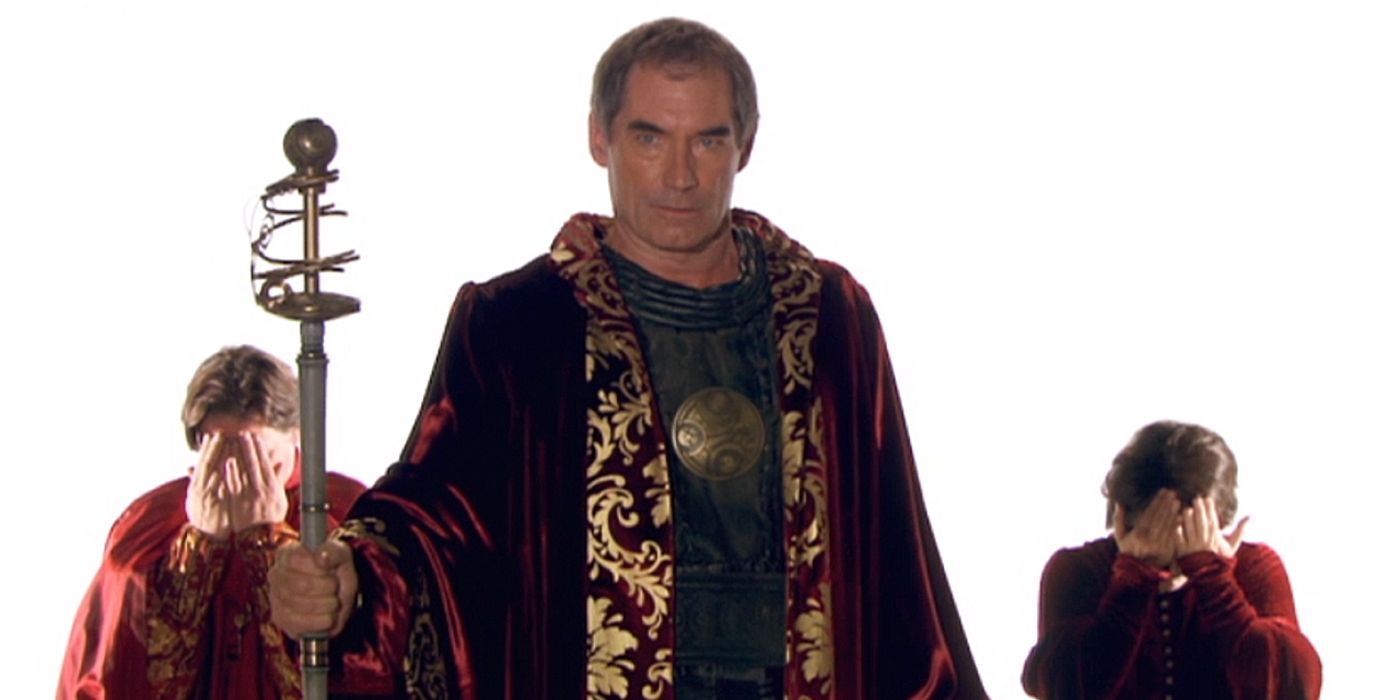
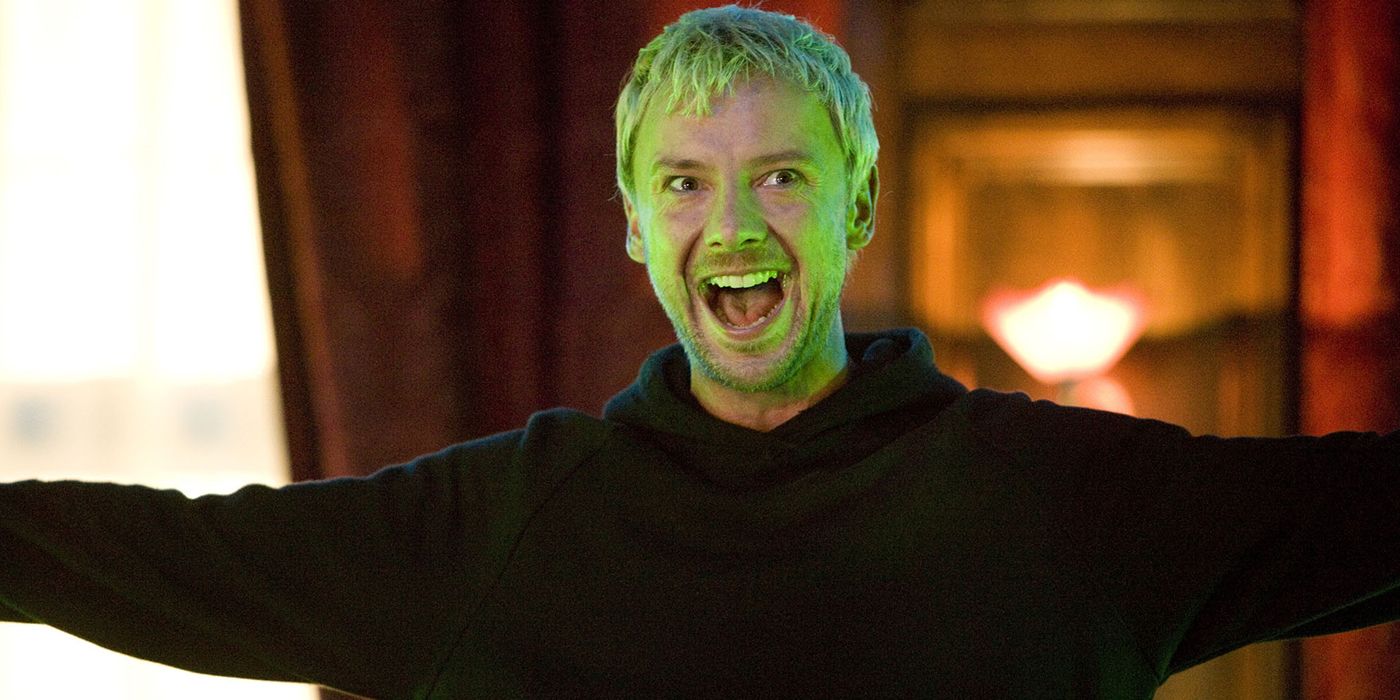
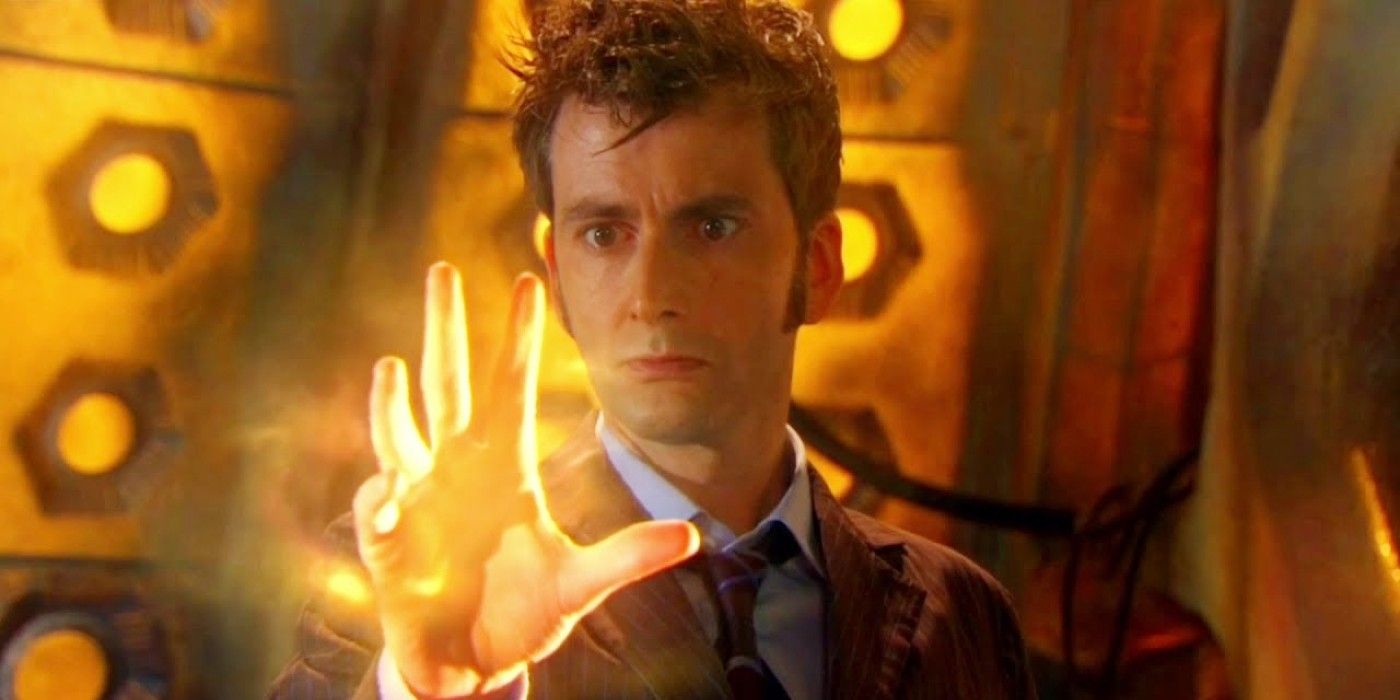
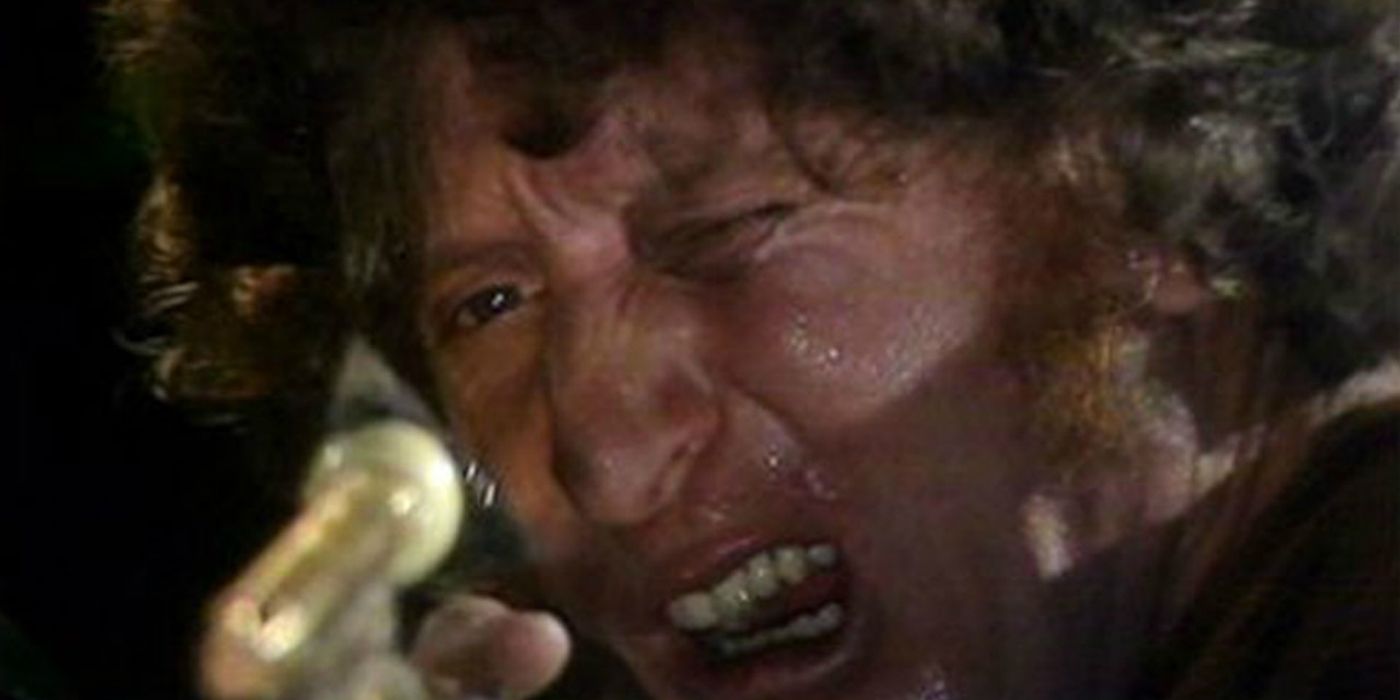
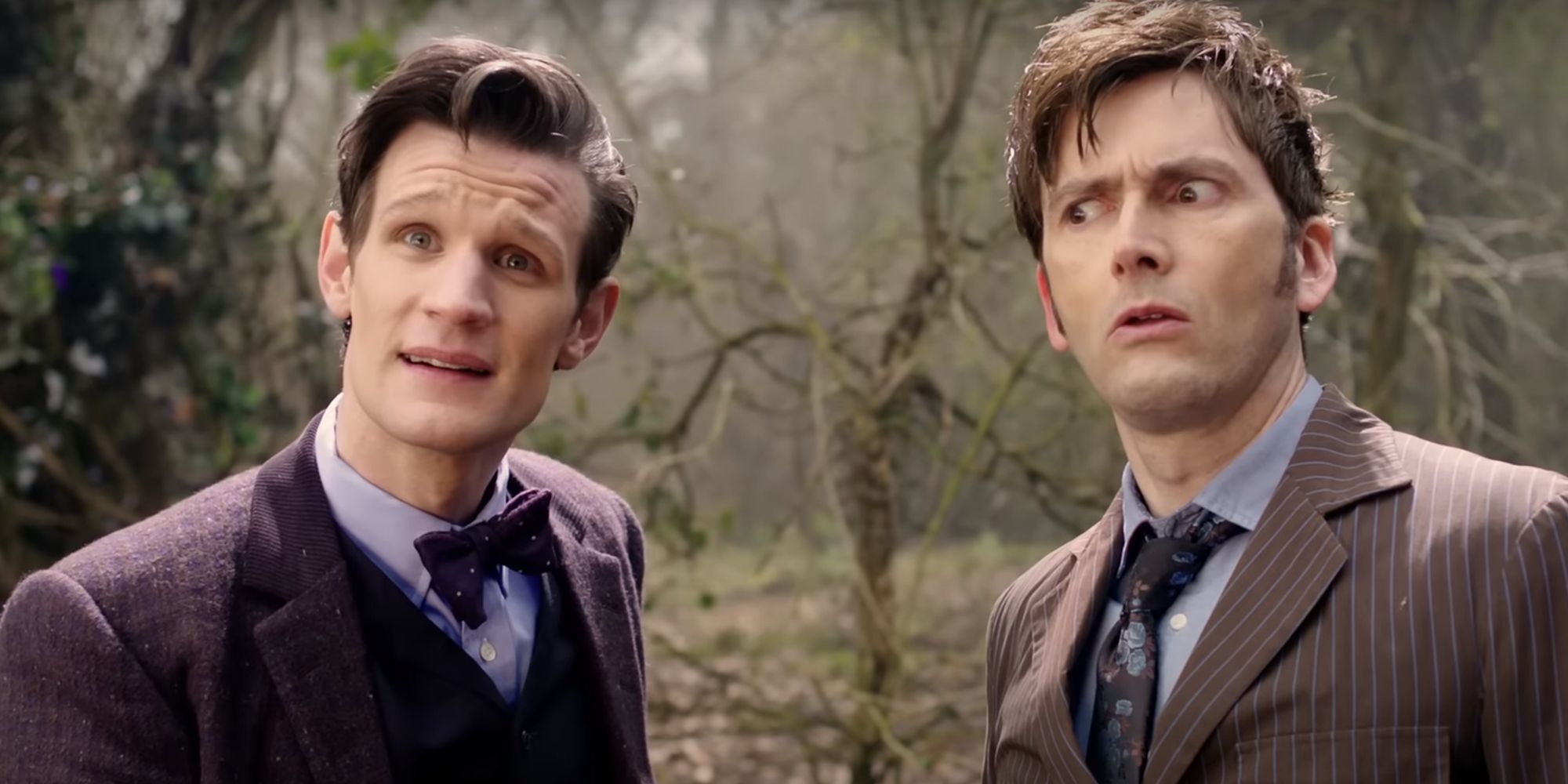
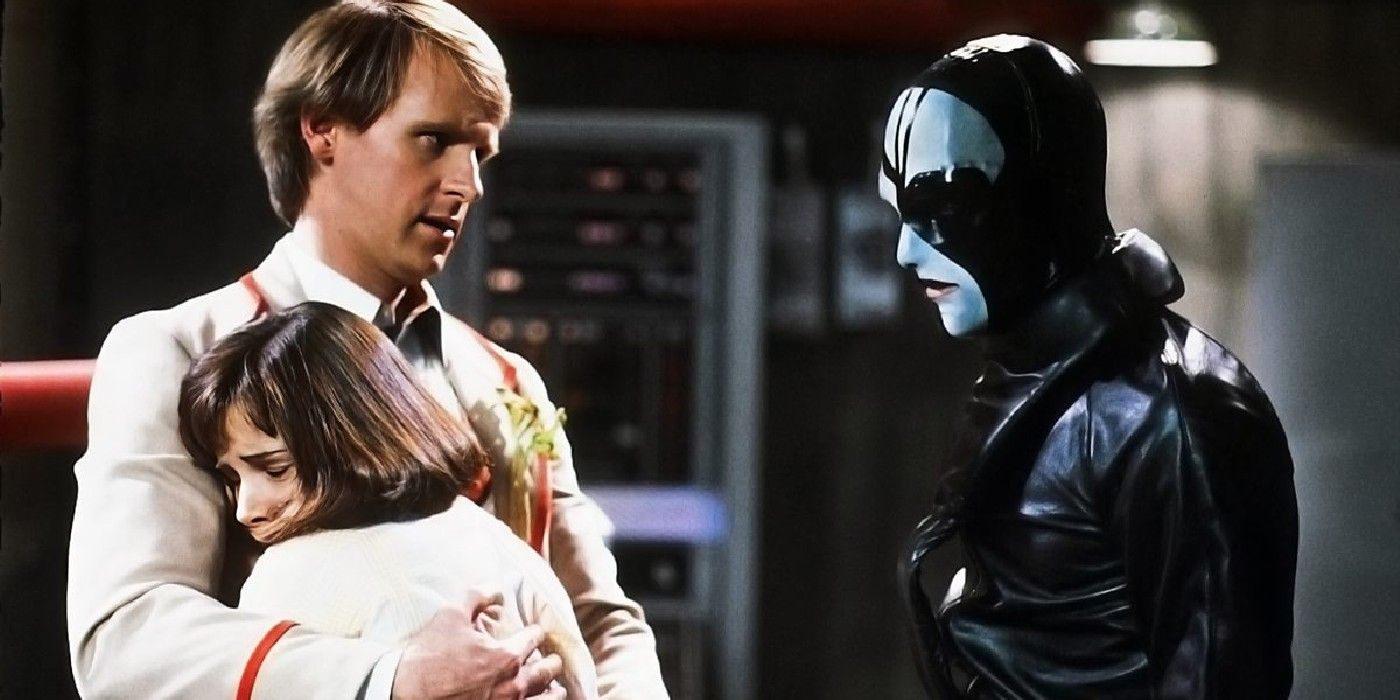
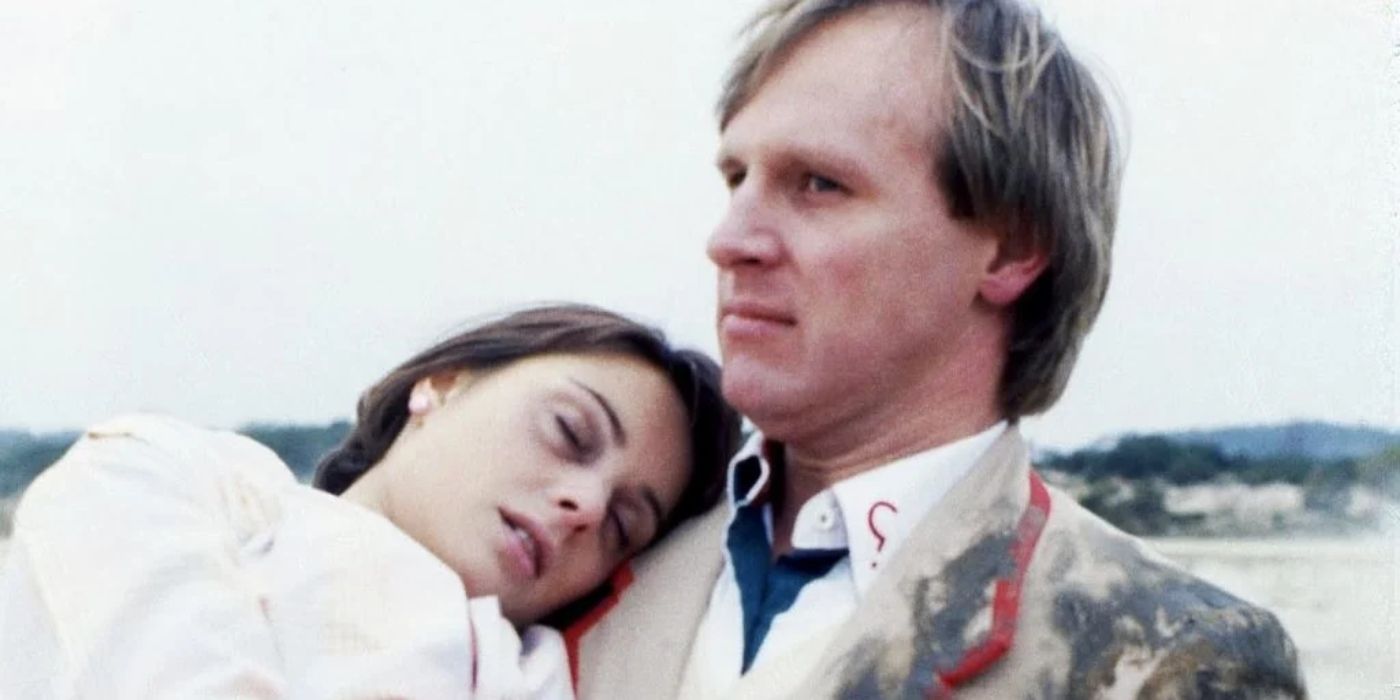
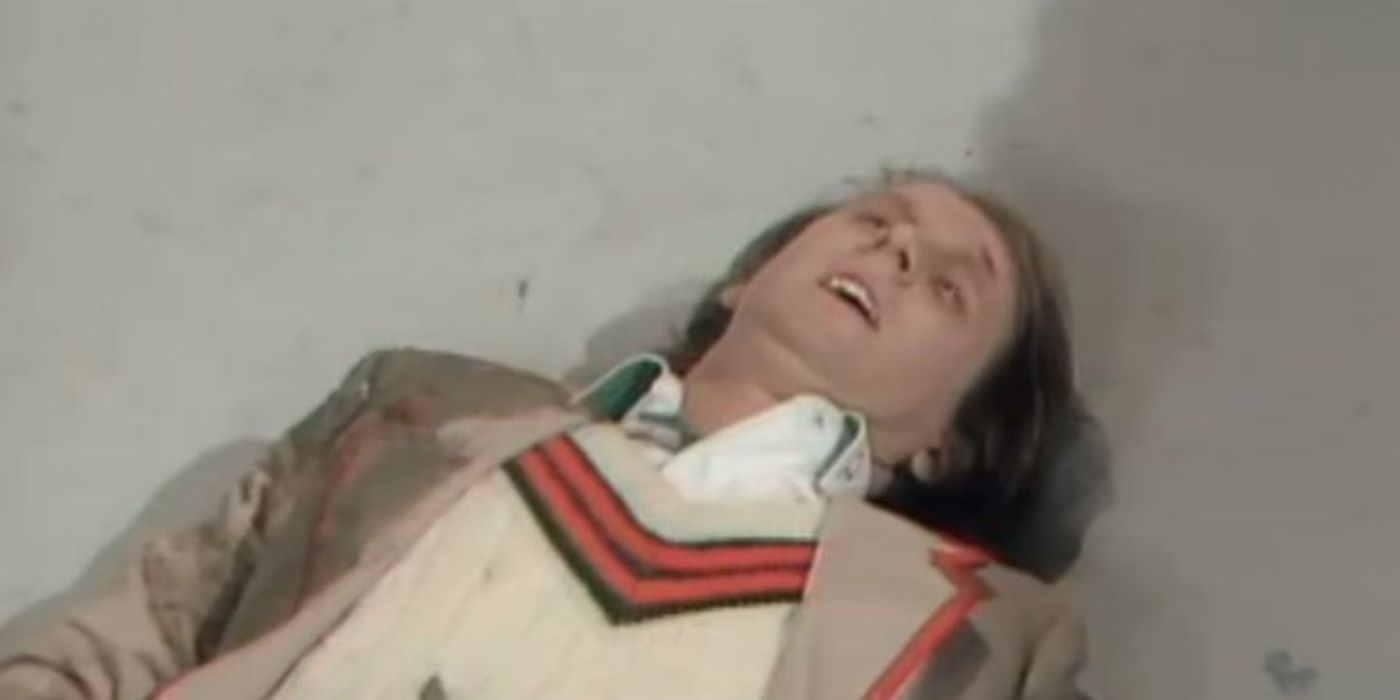
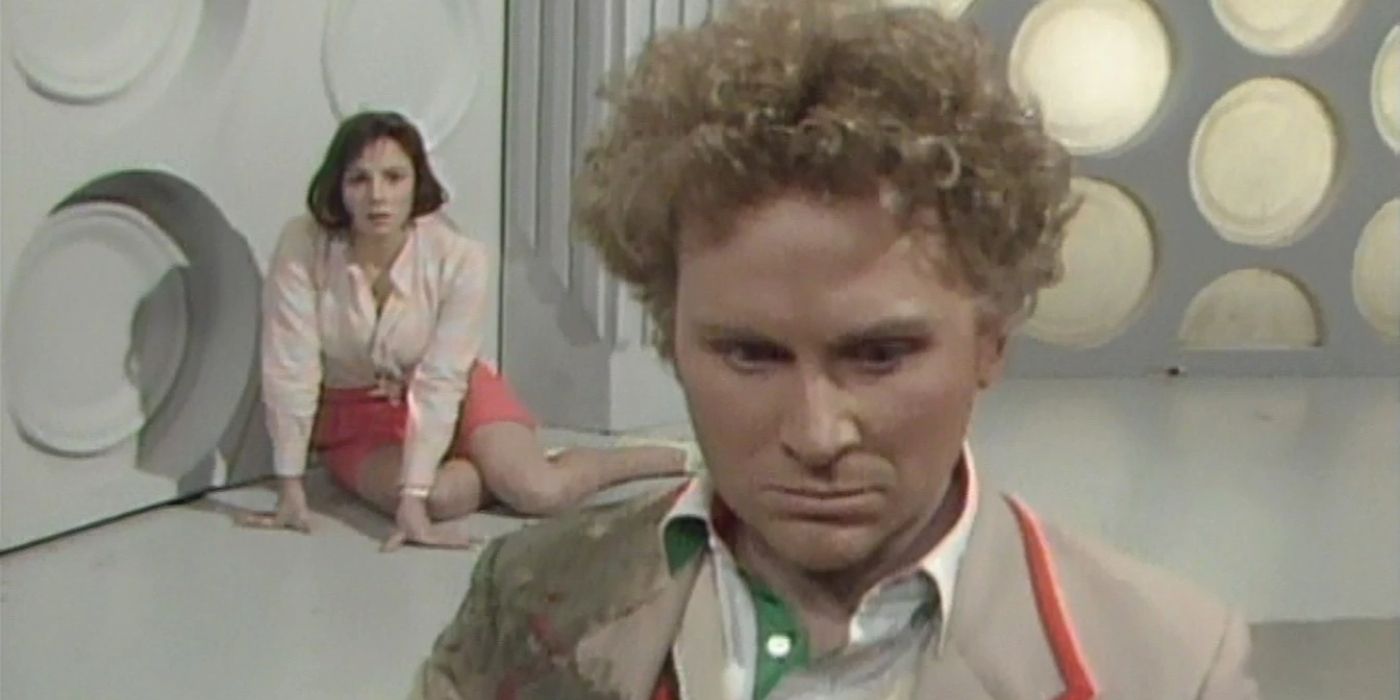
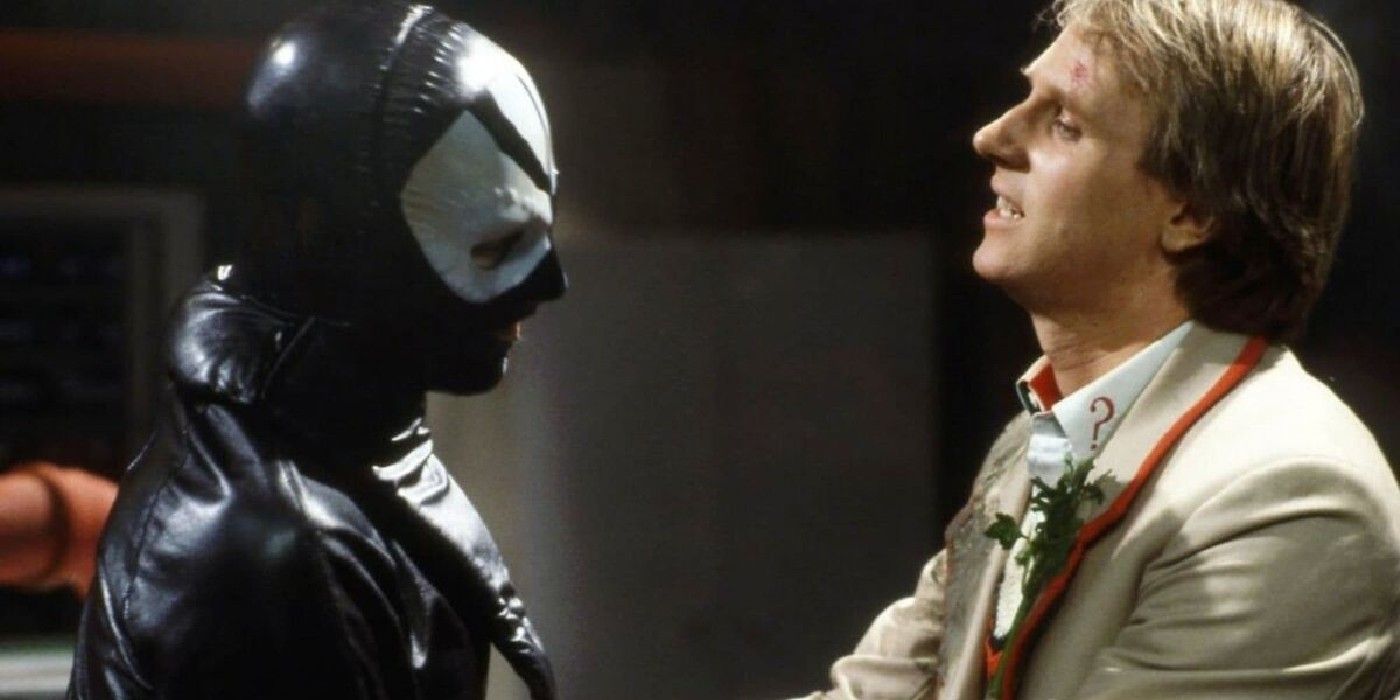
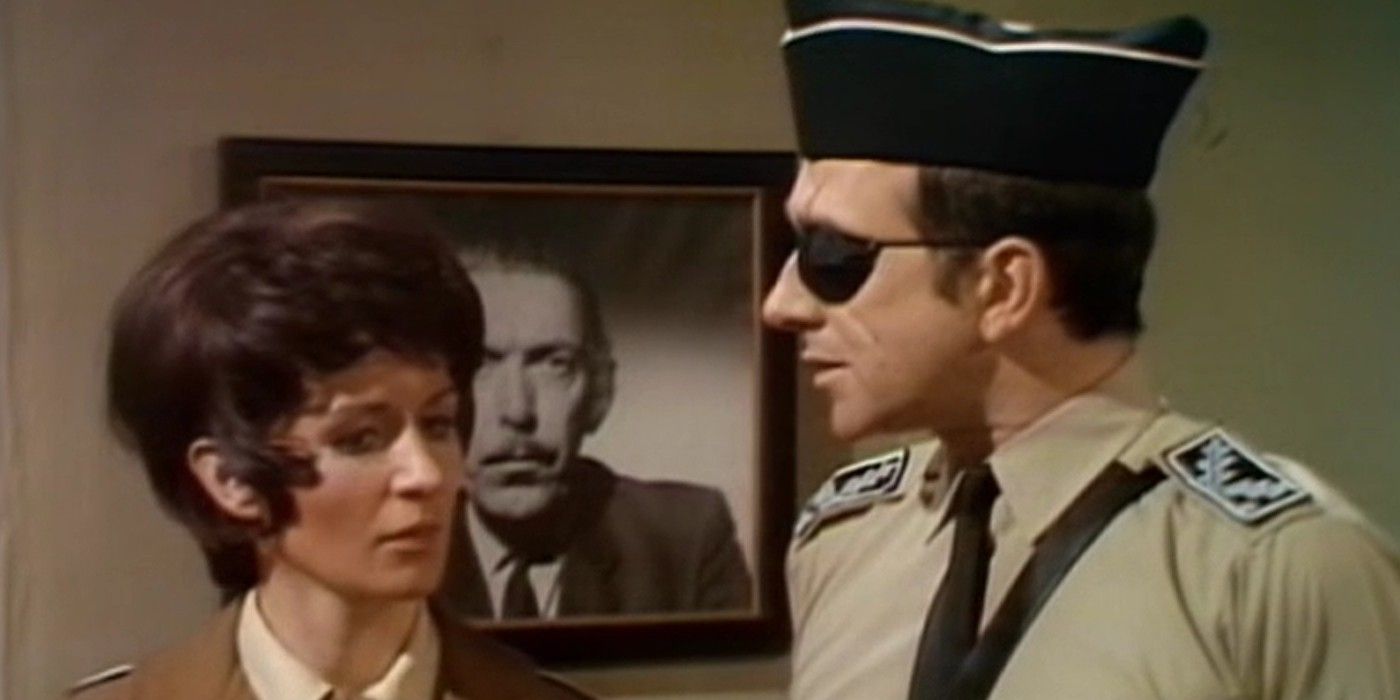
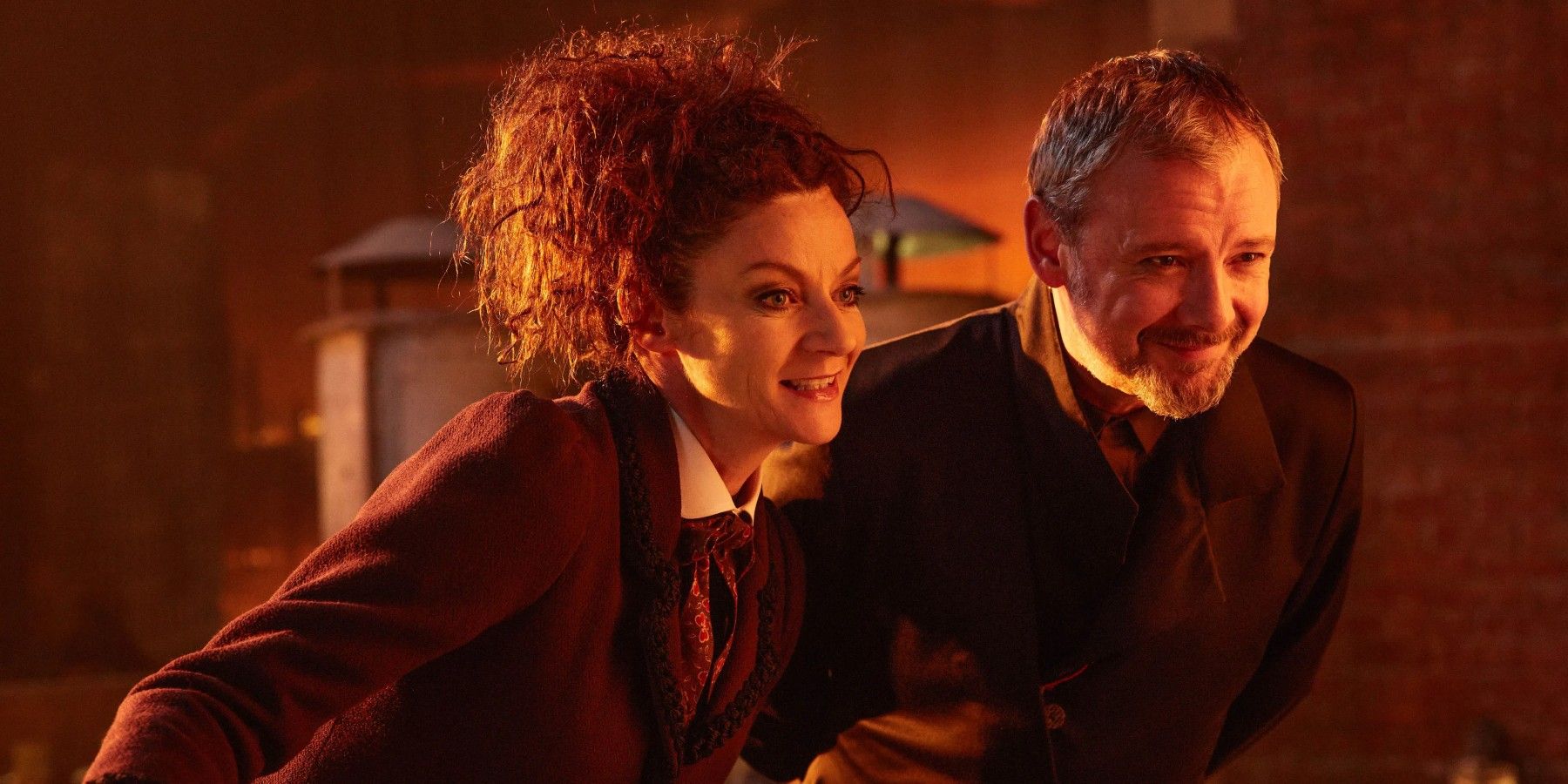
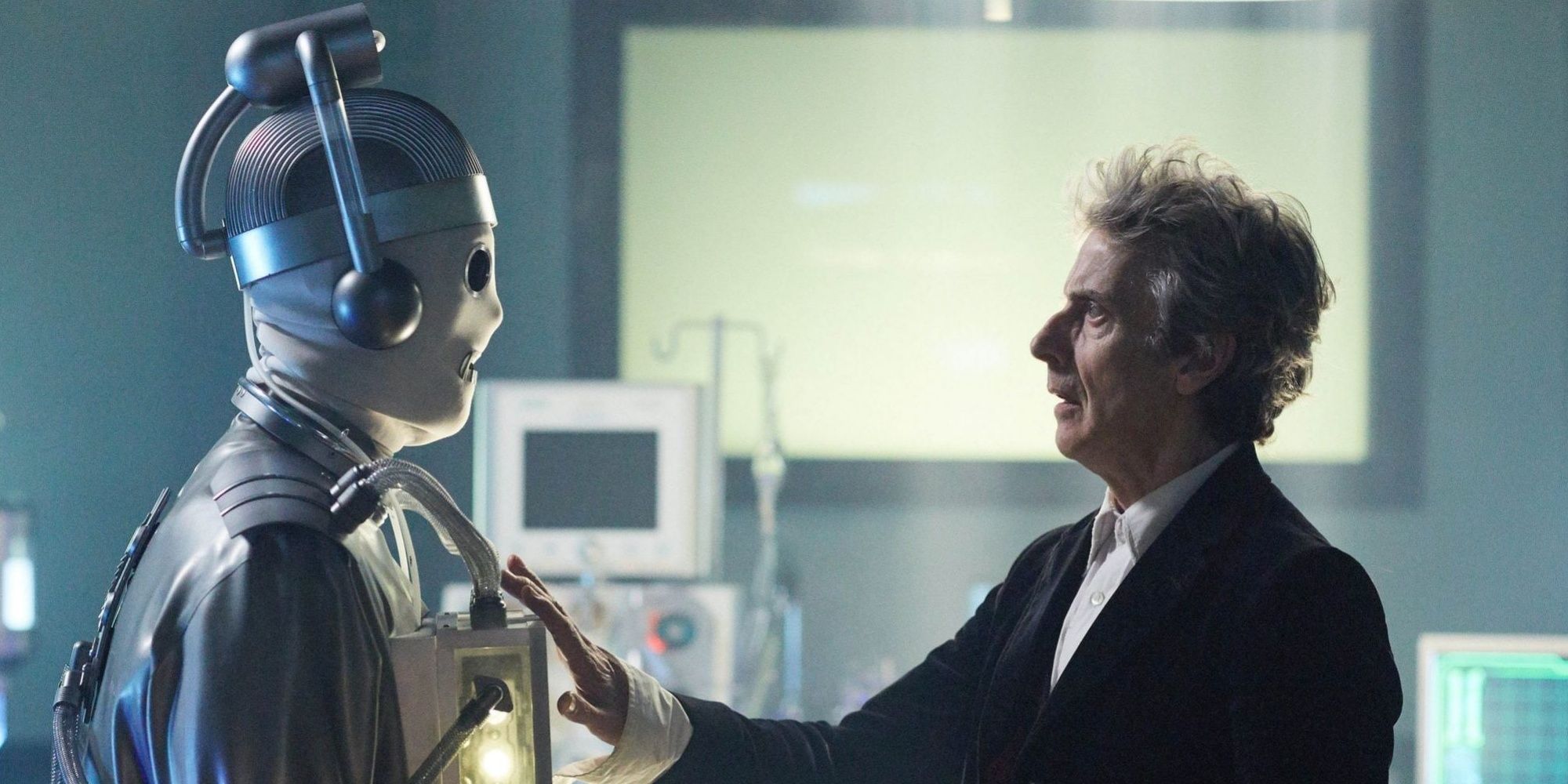
.jpg)
